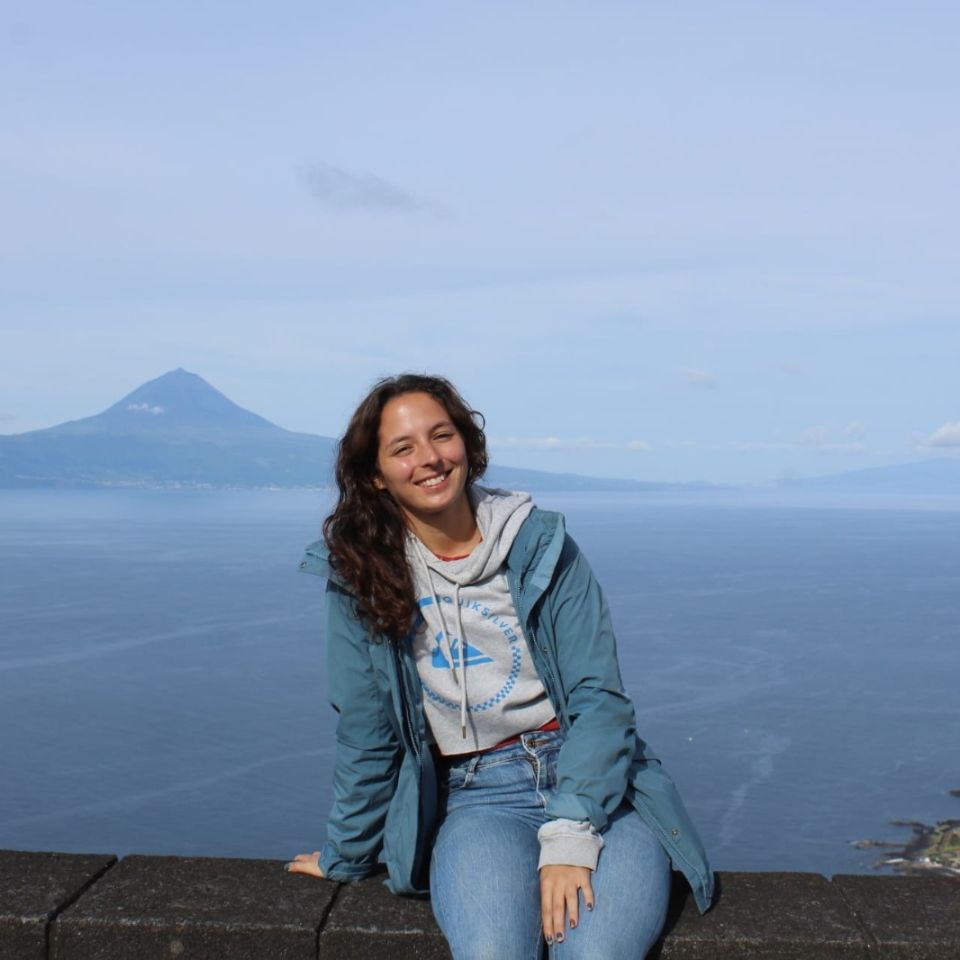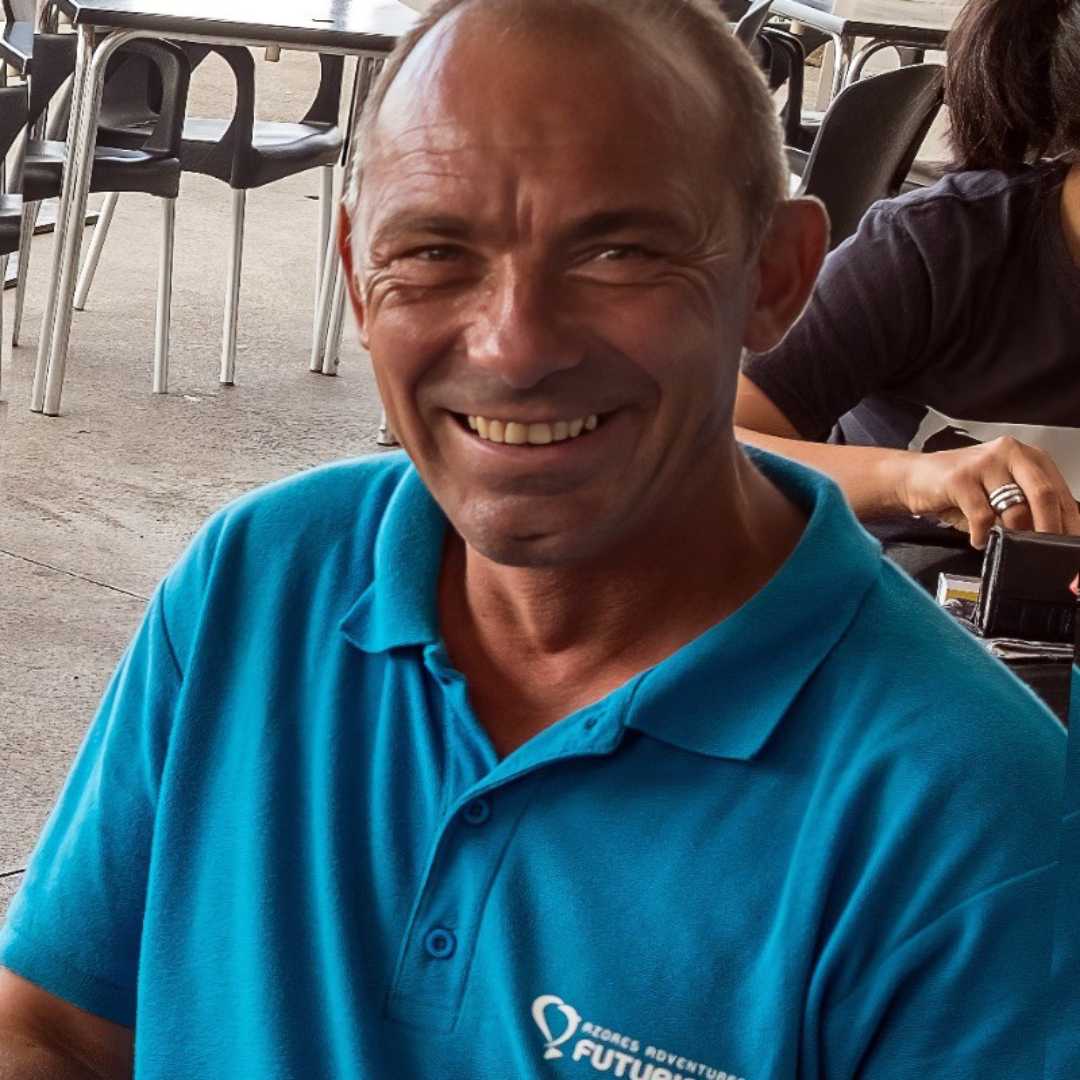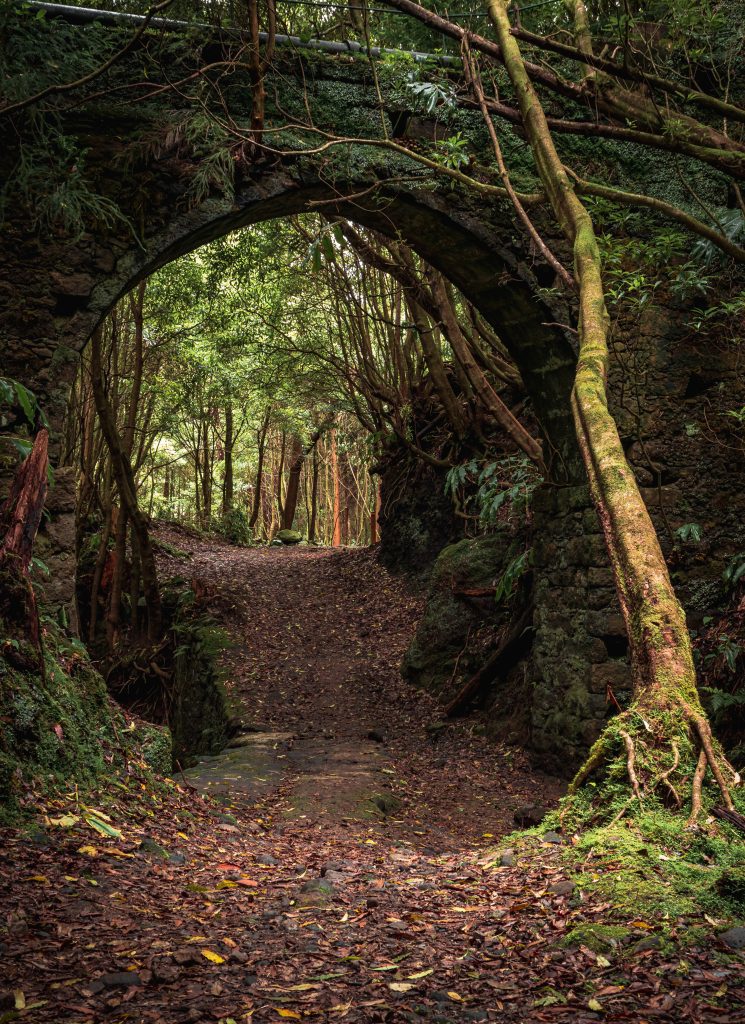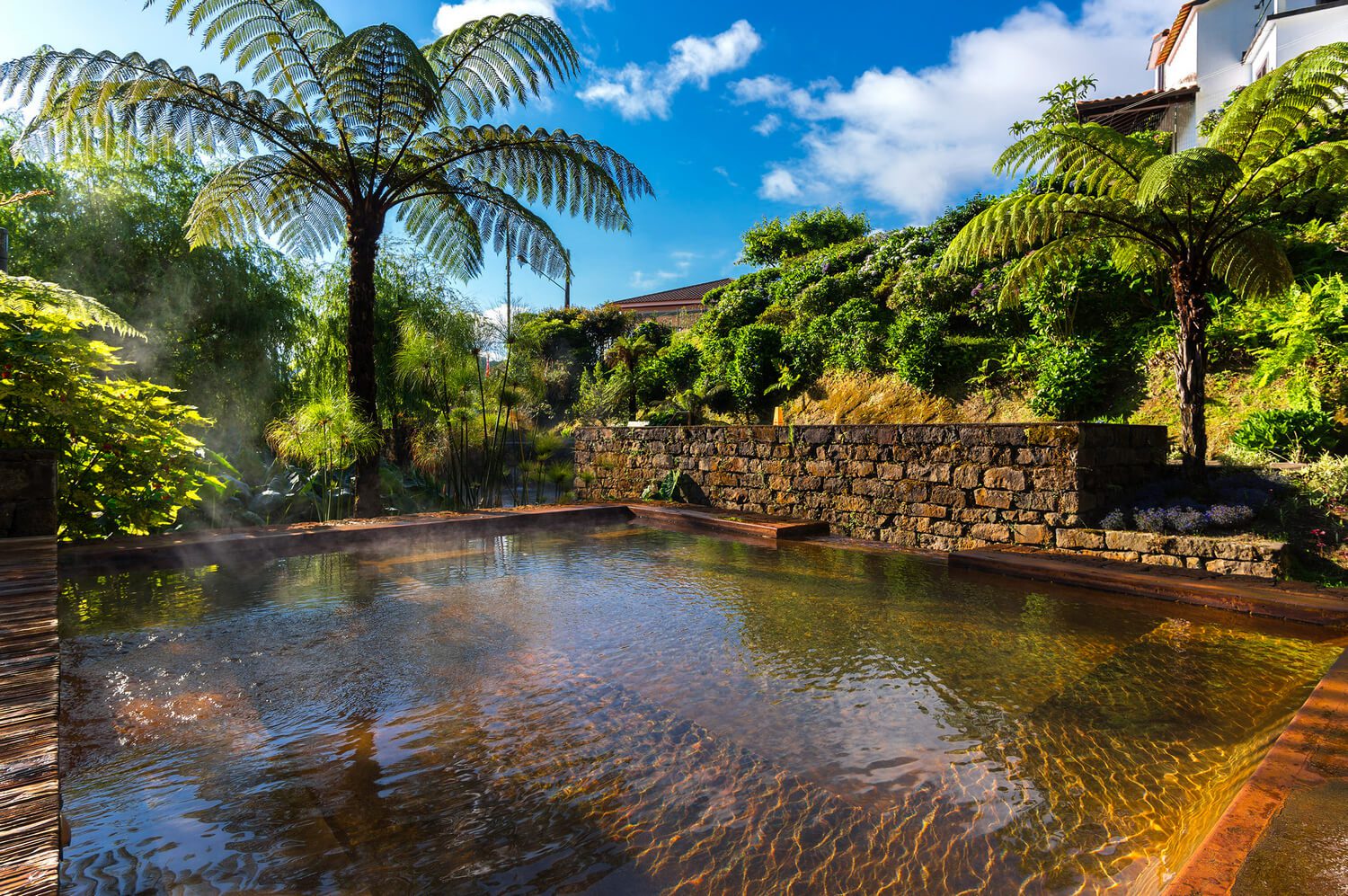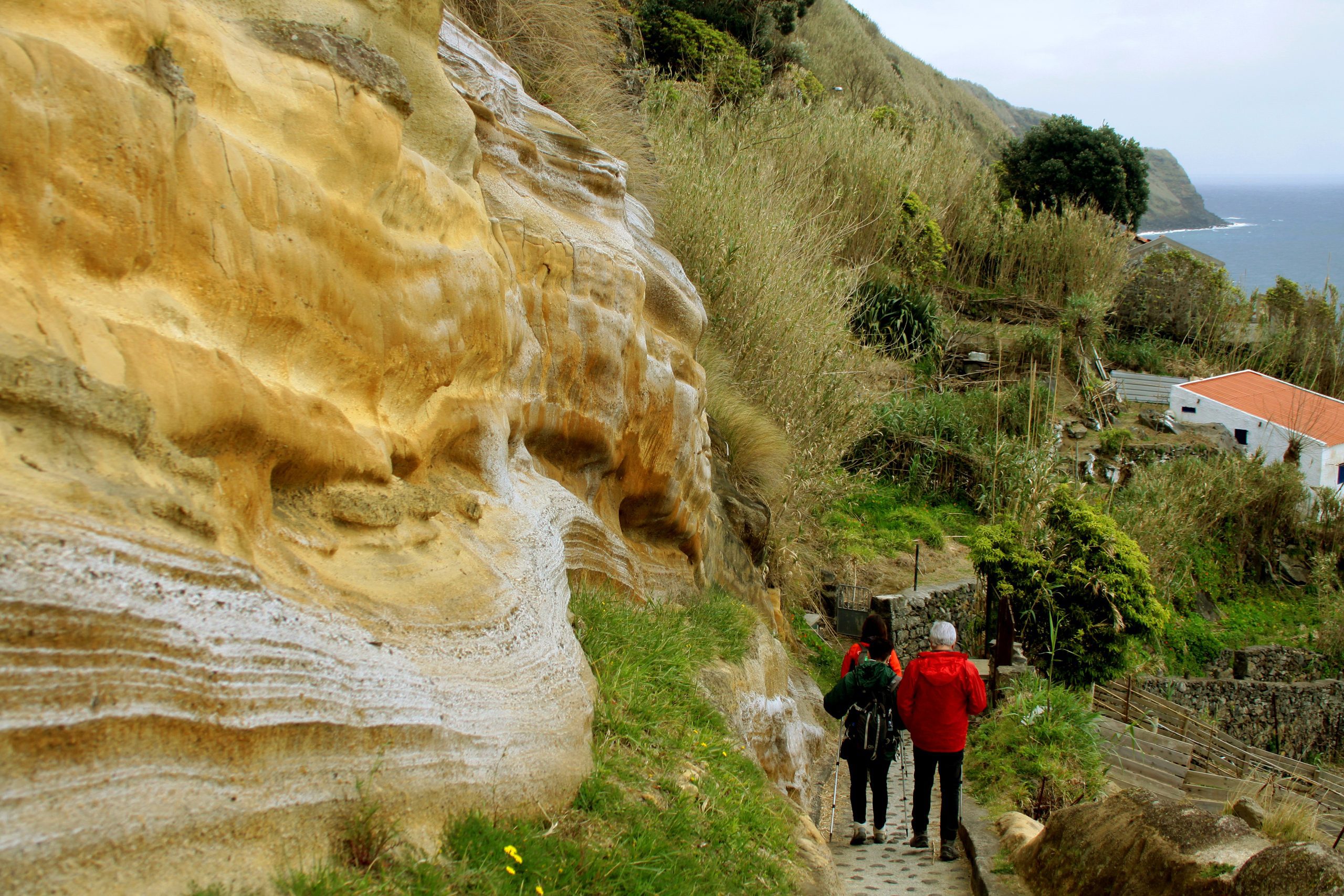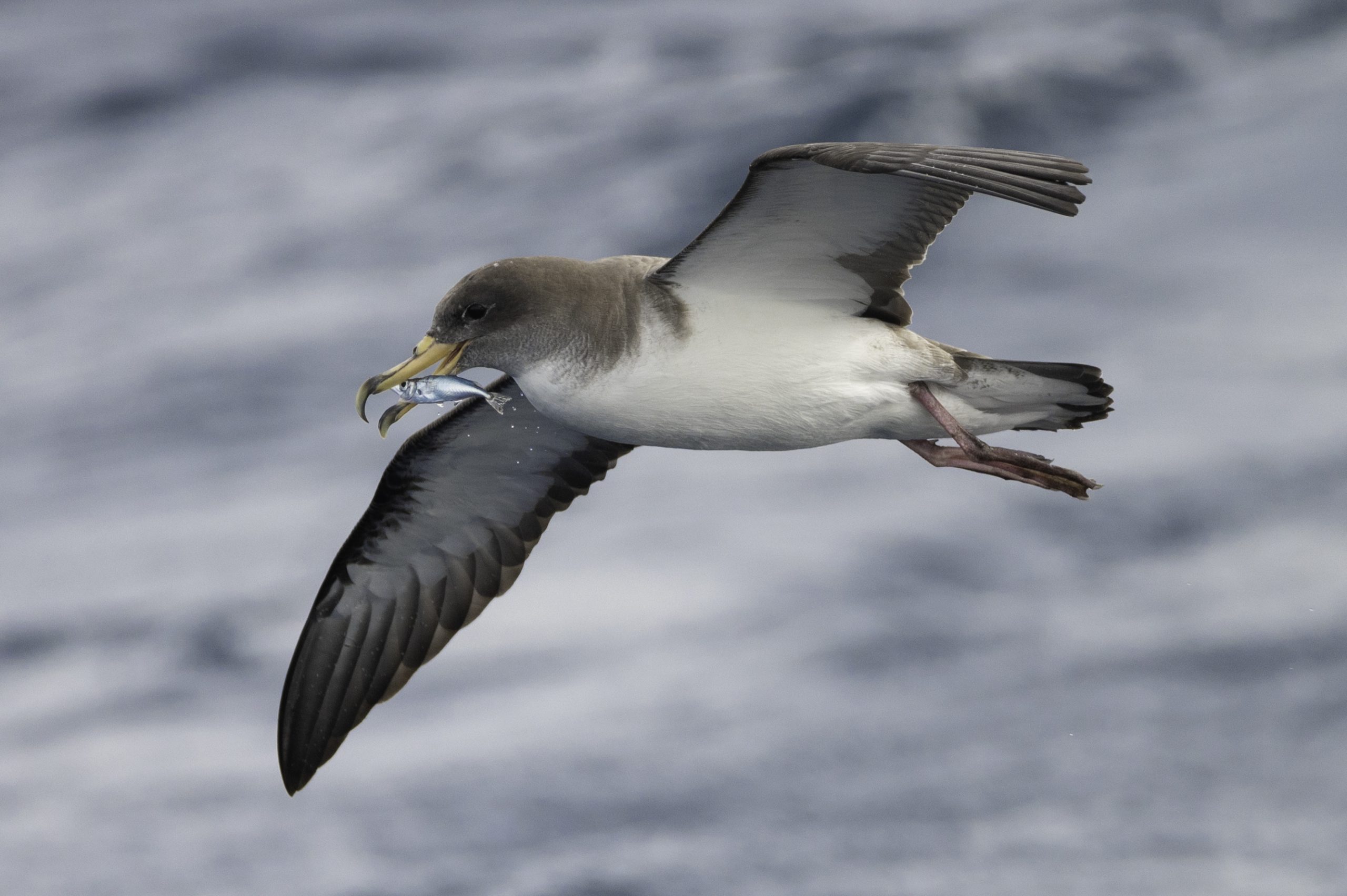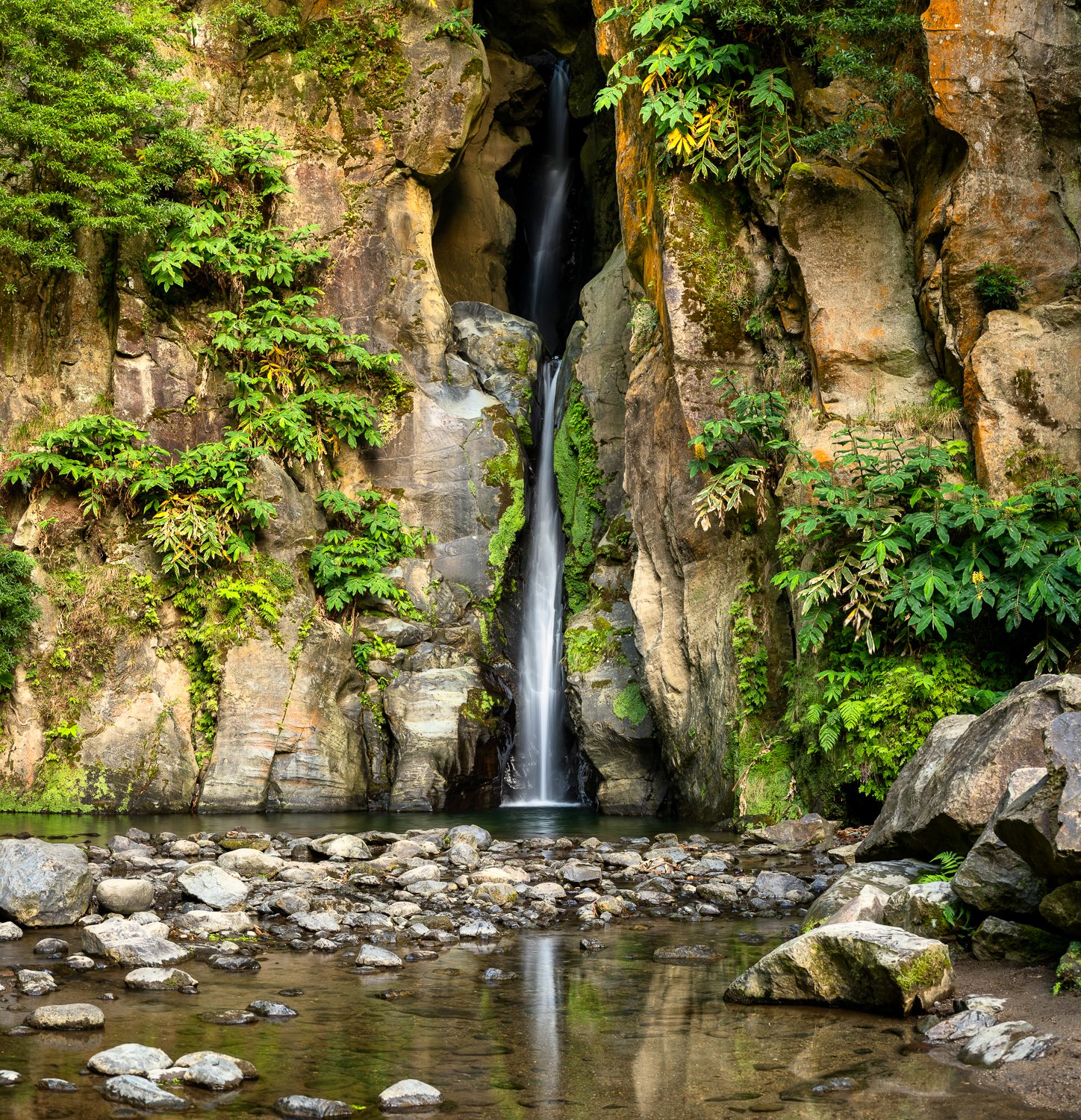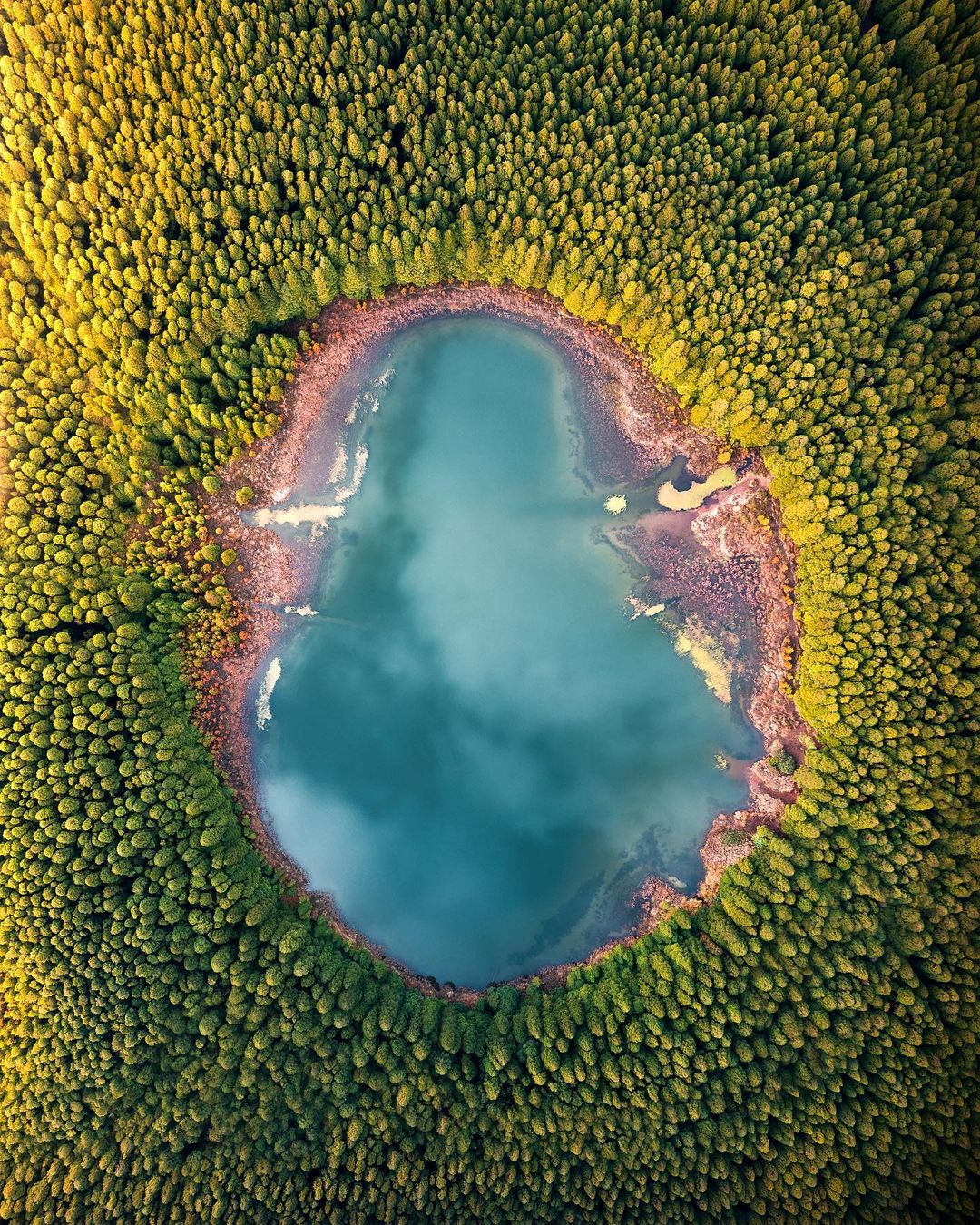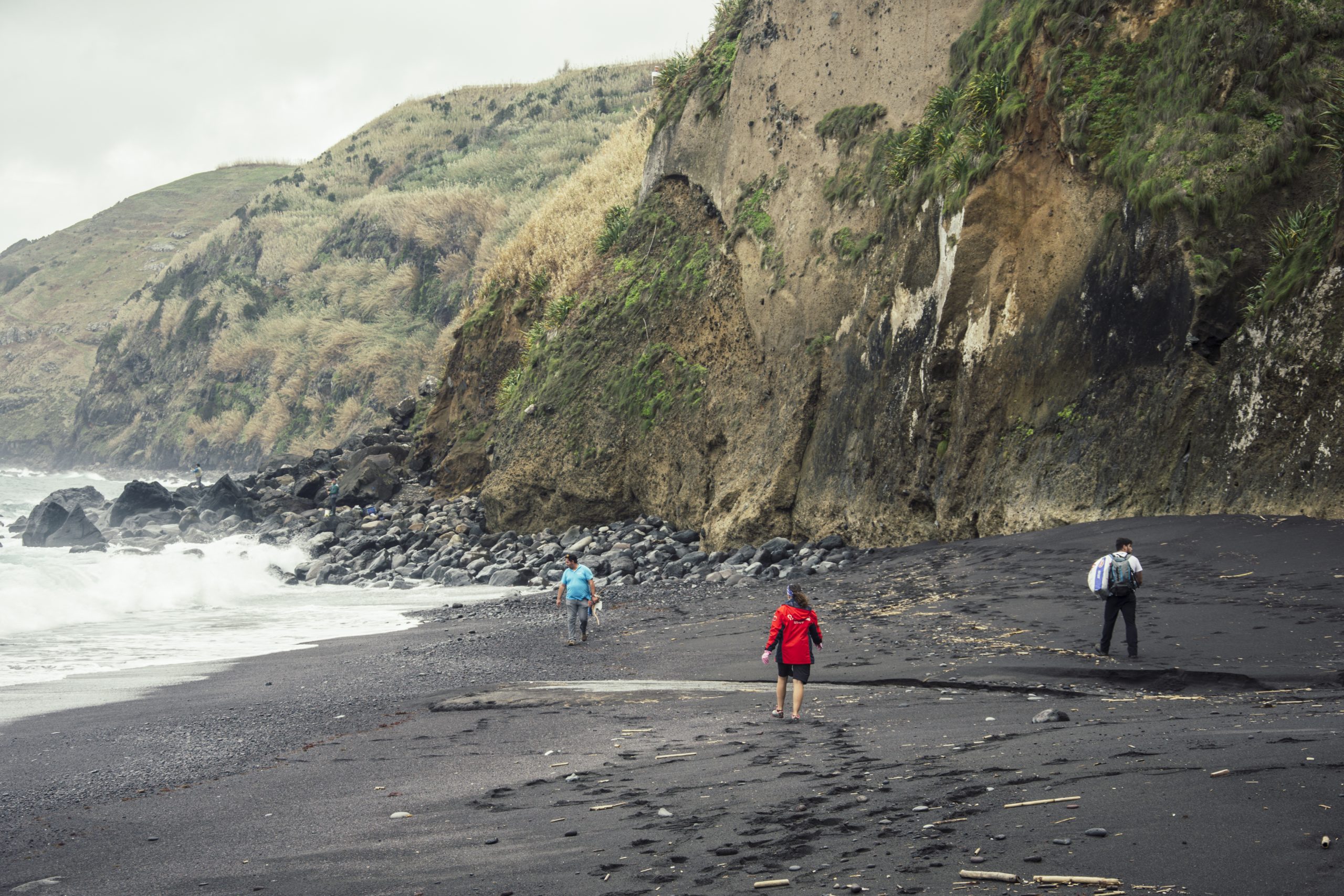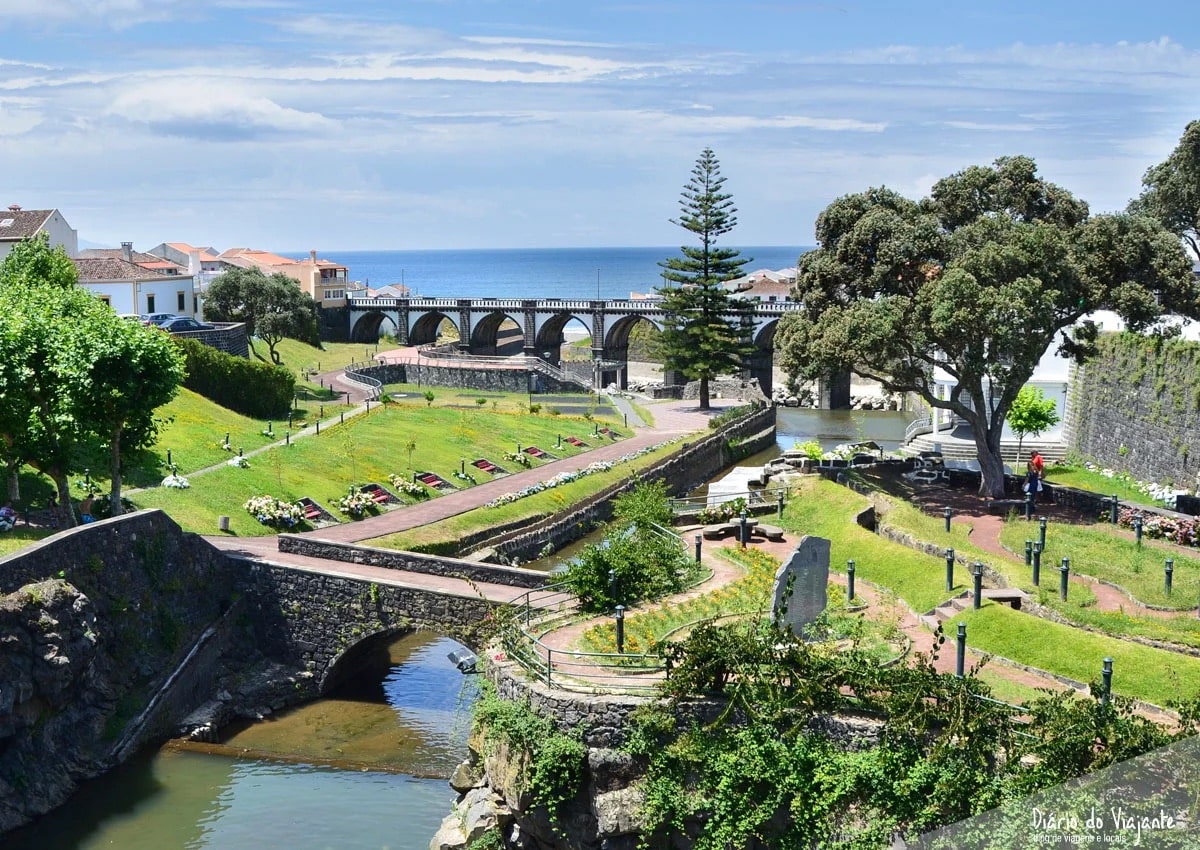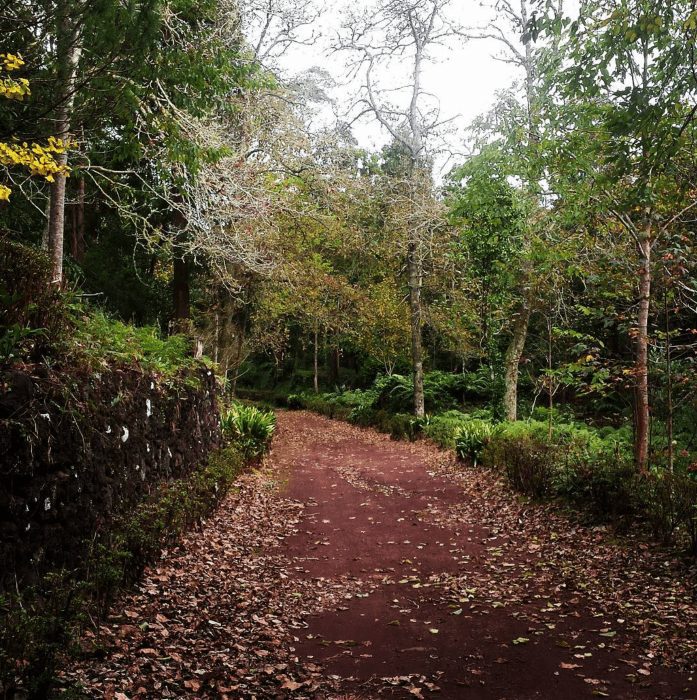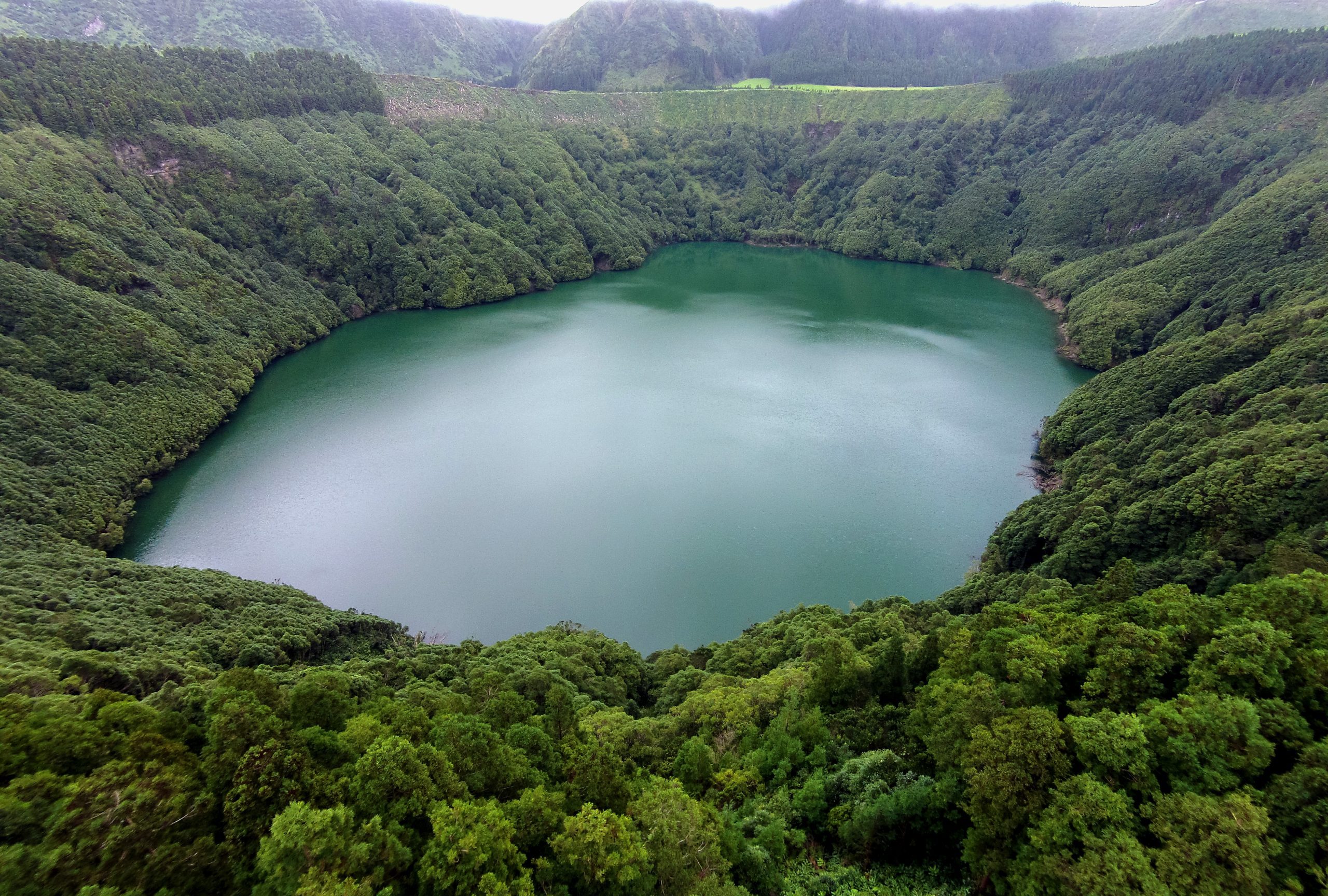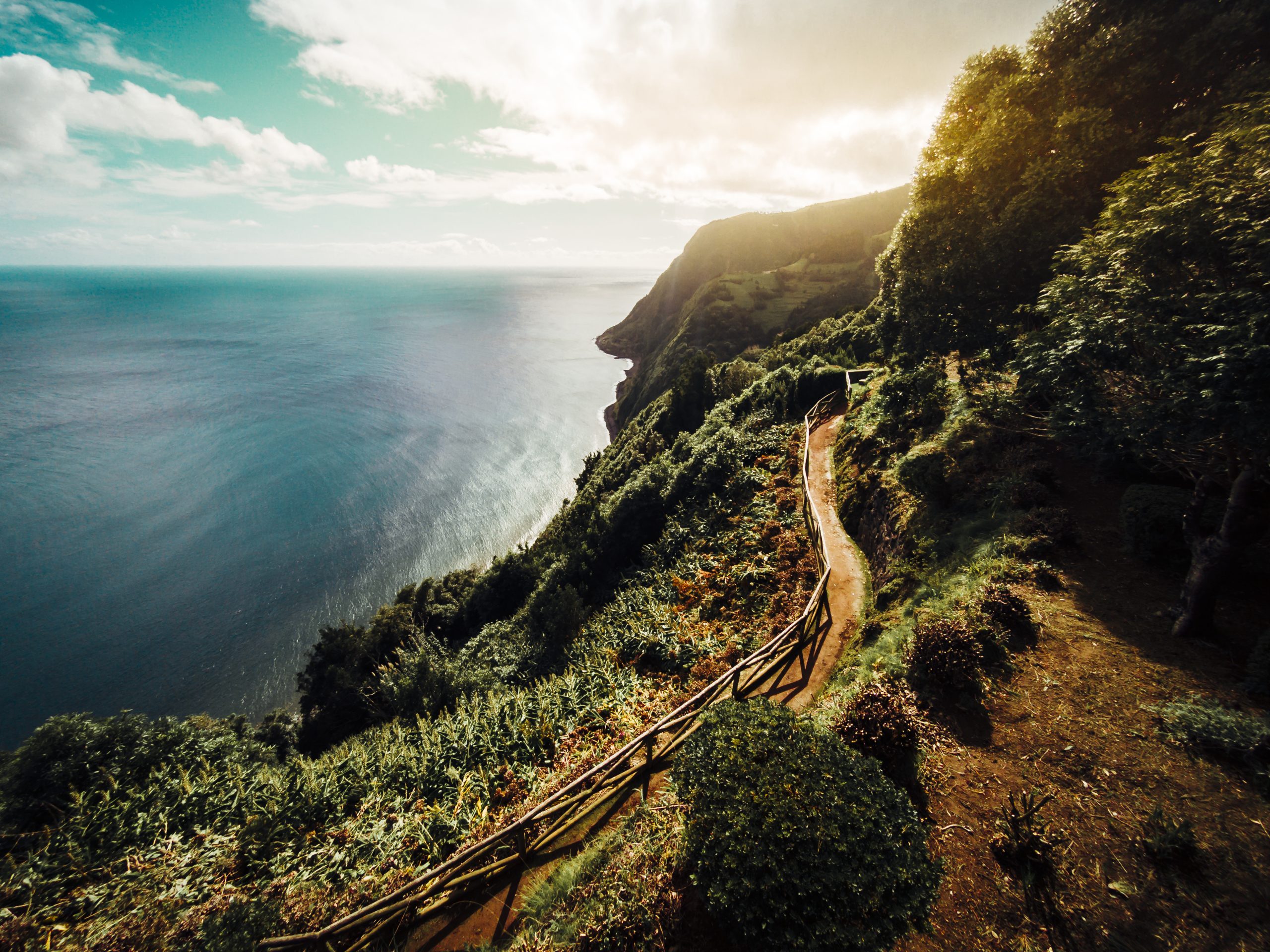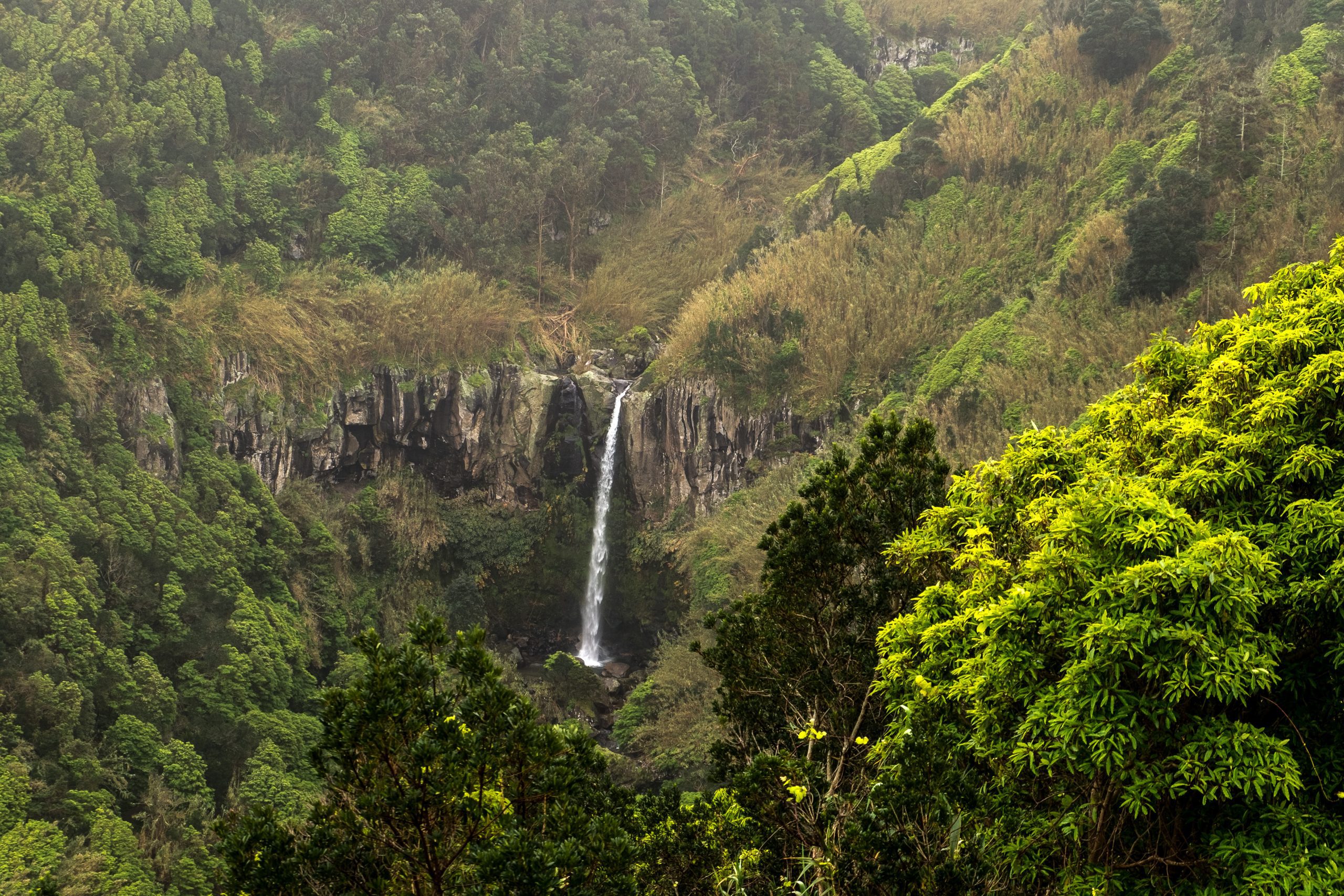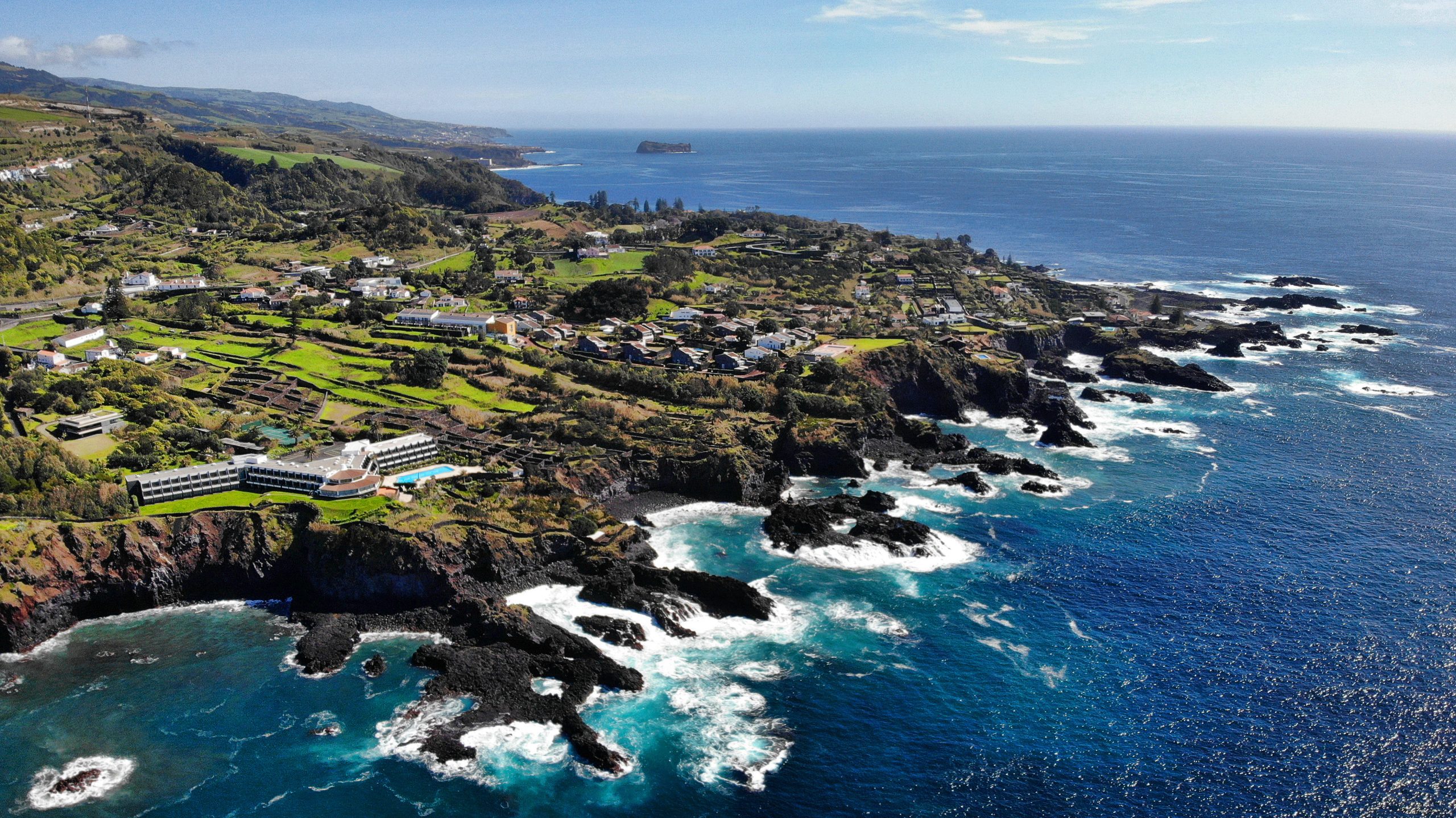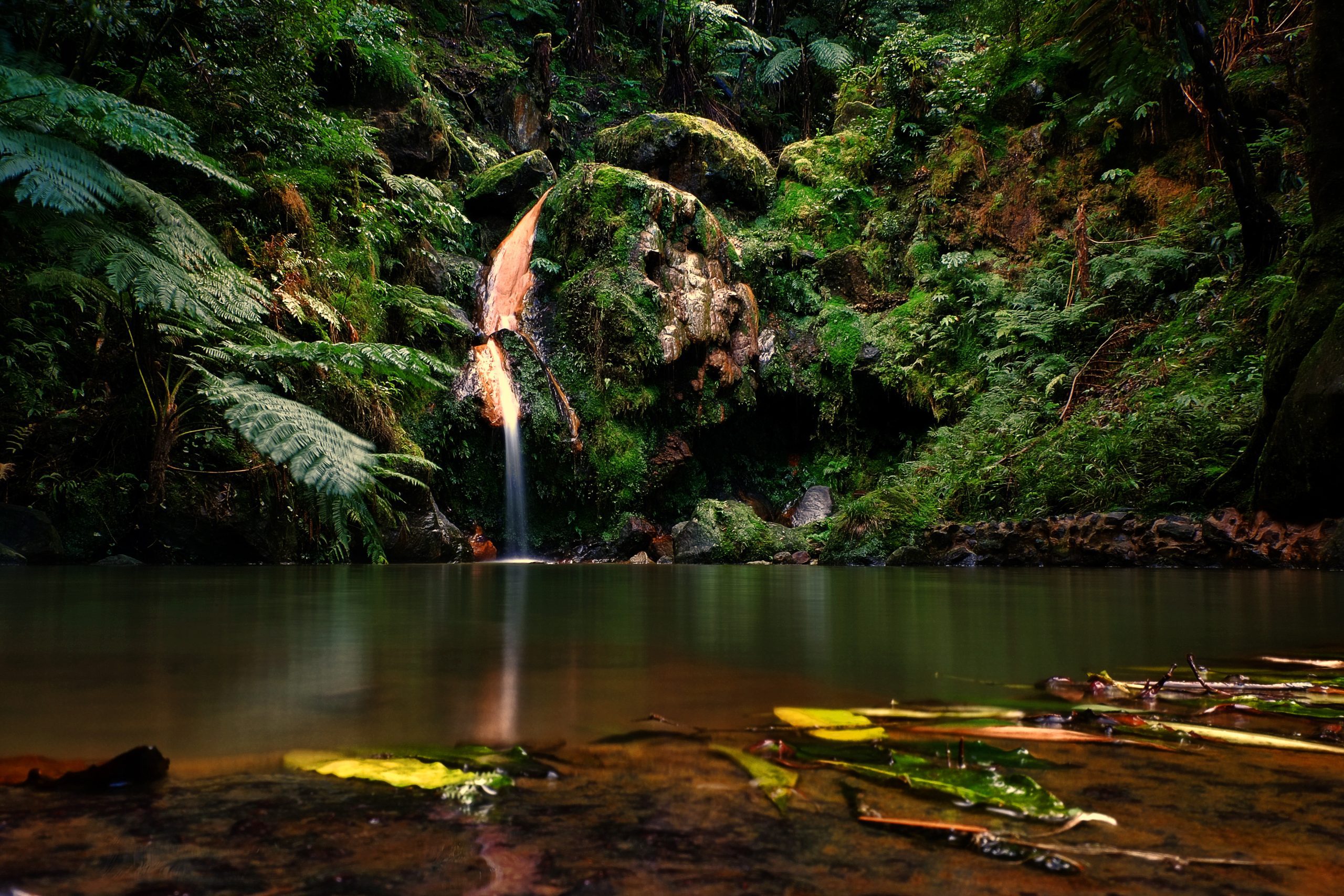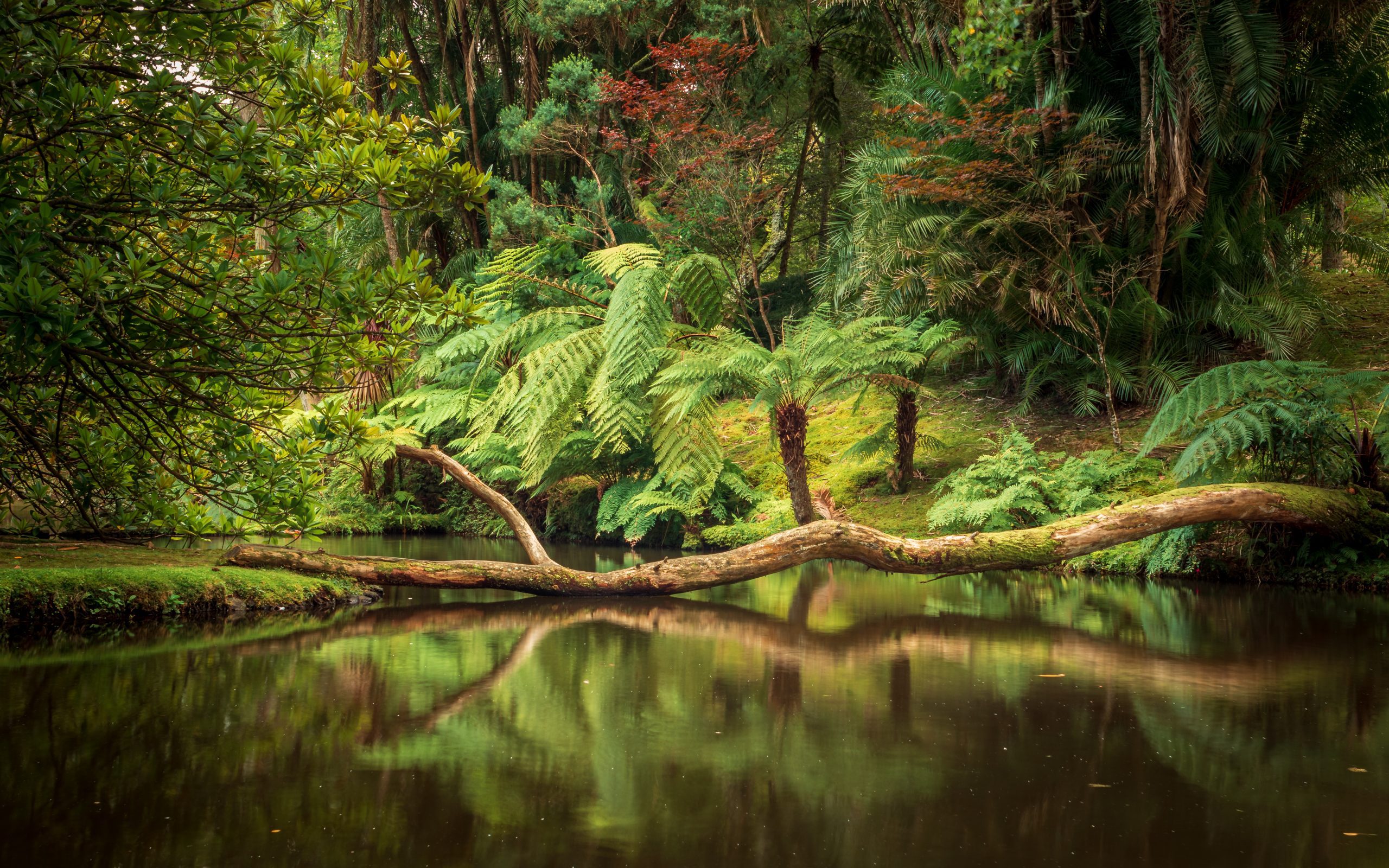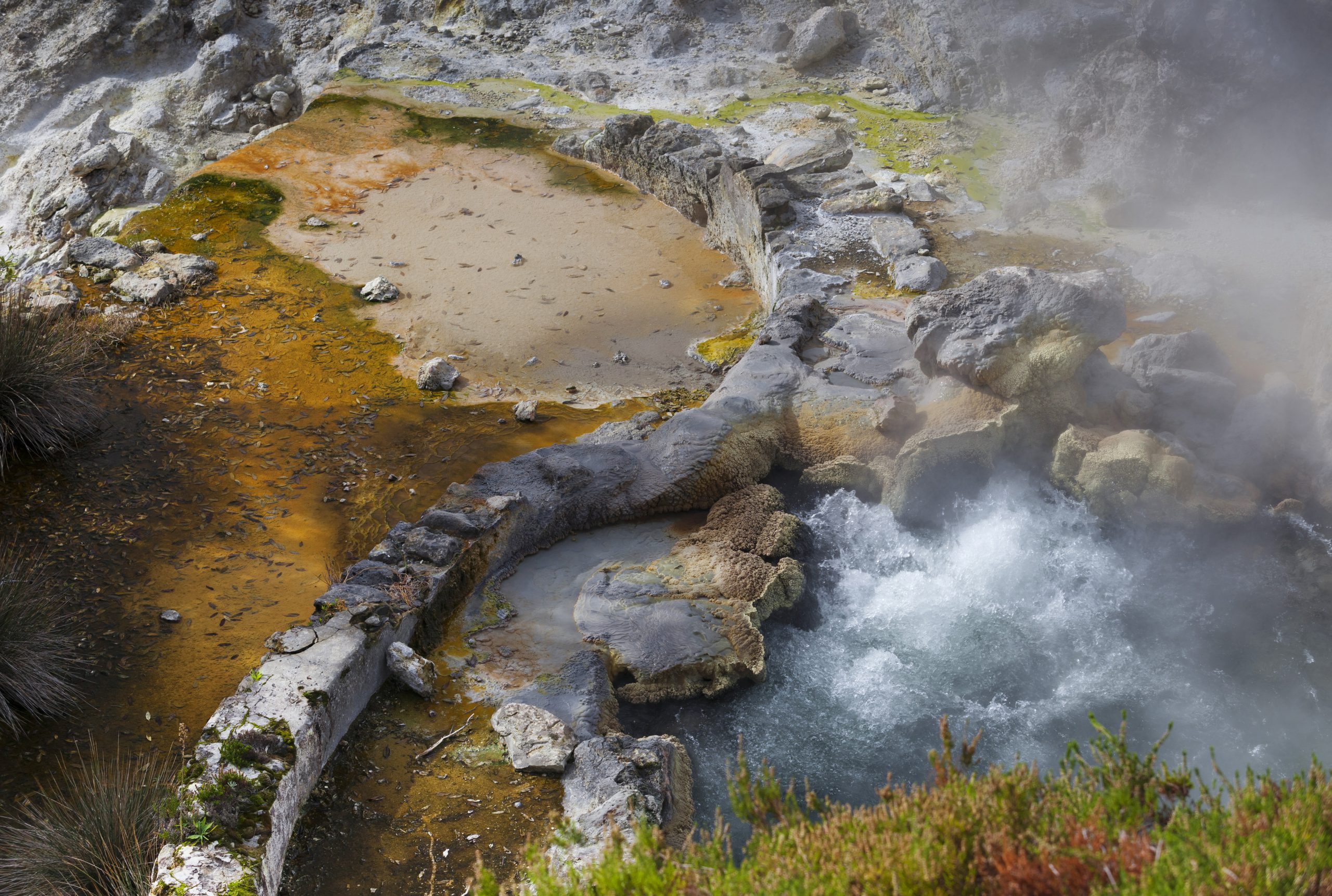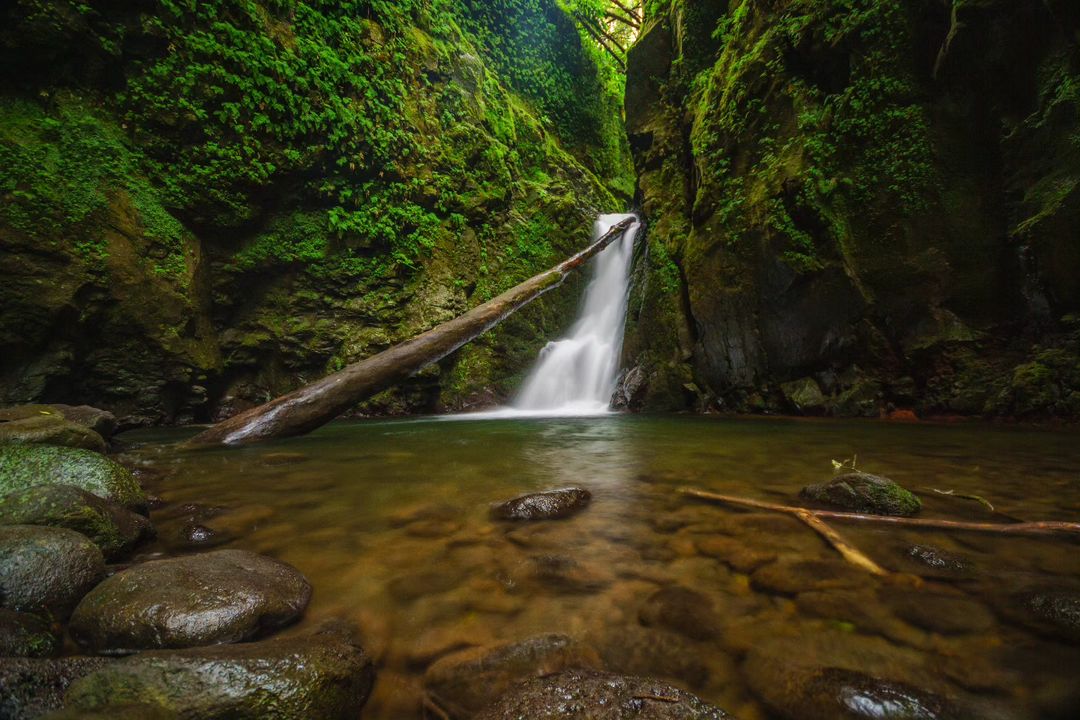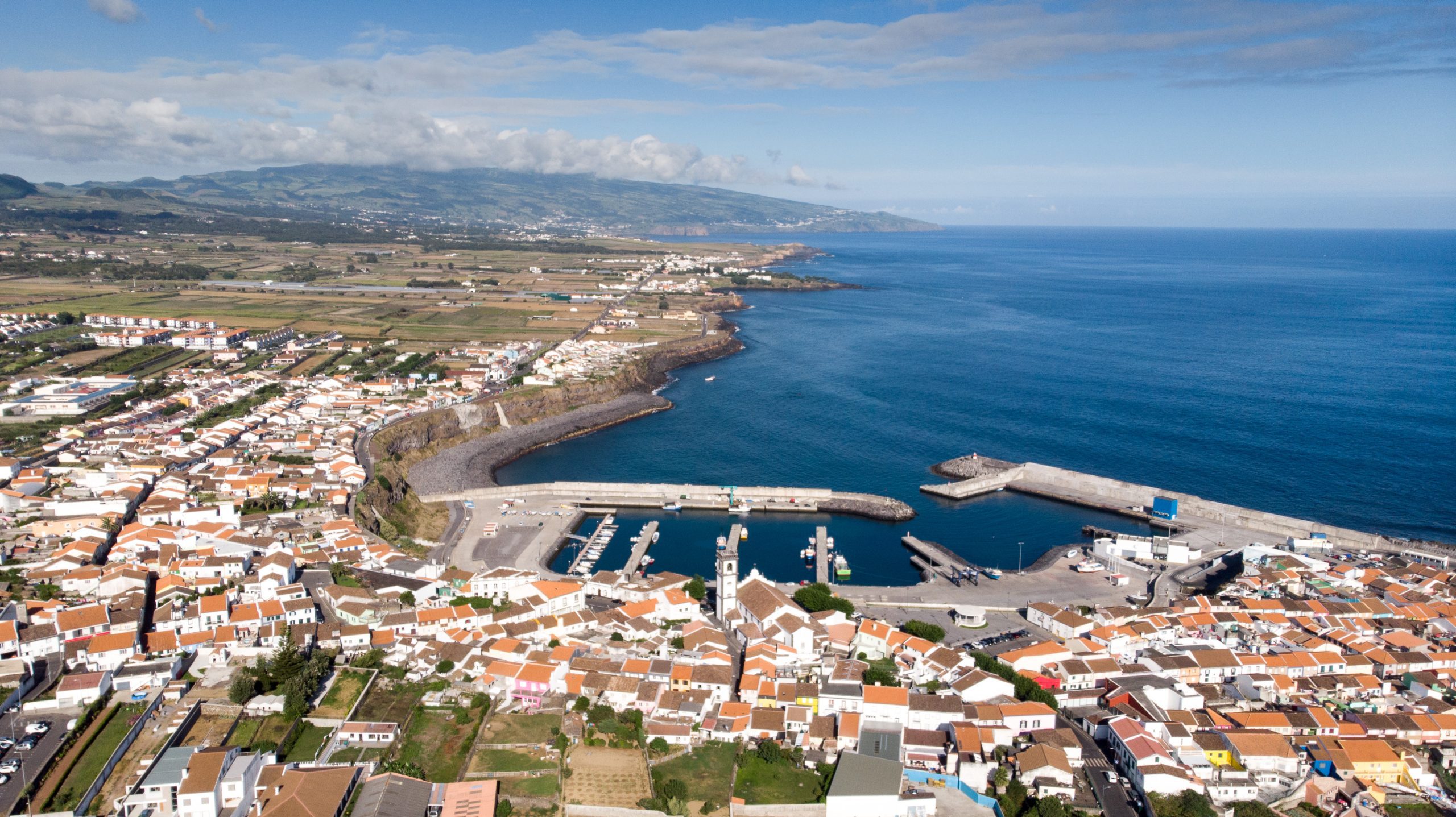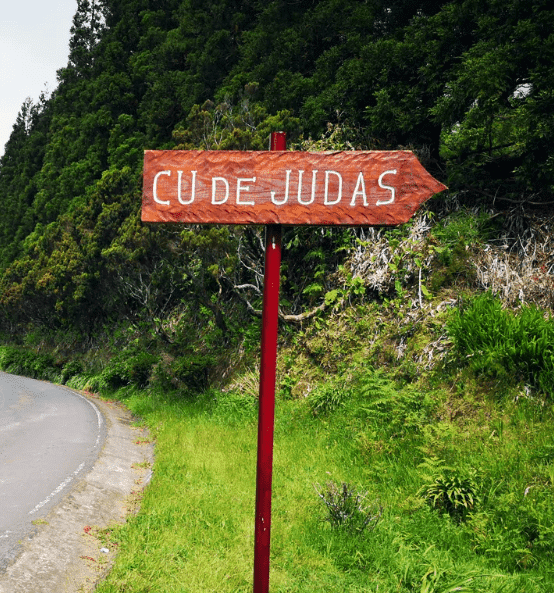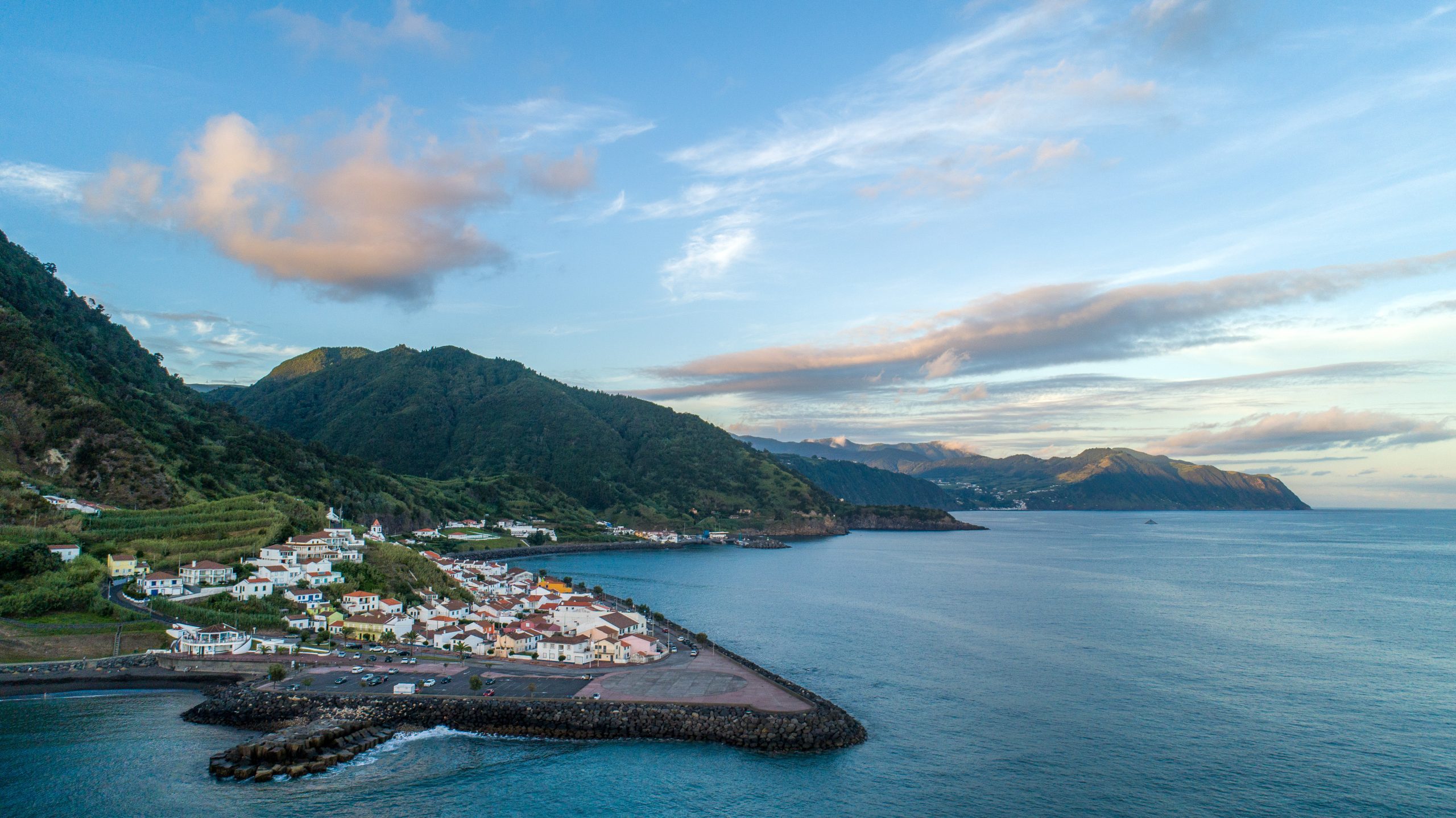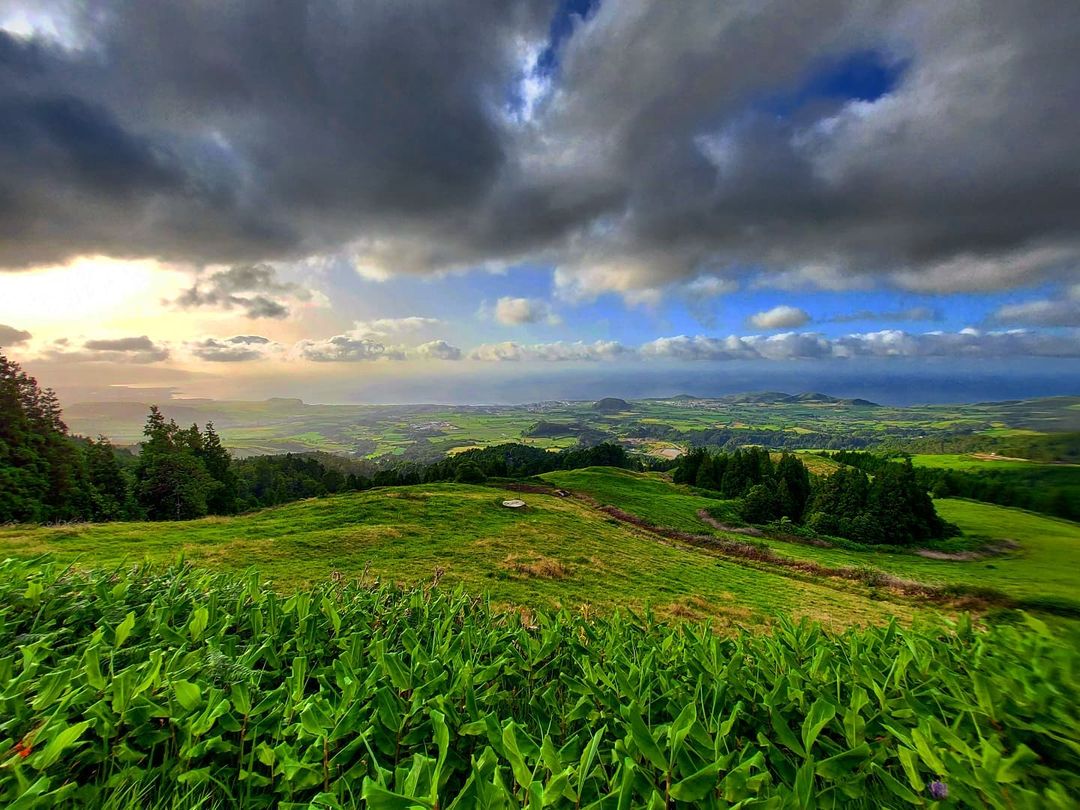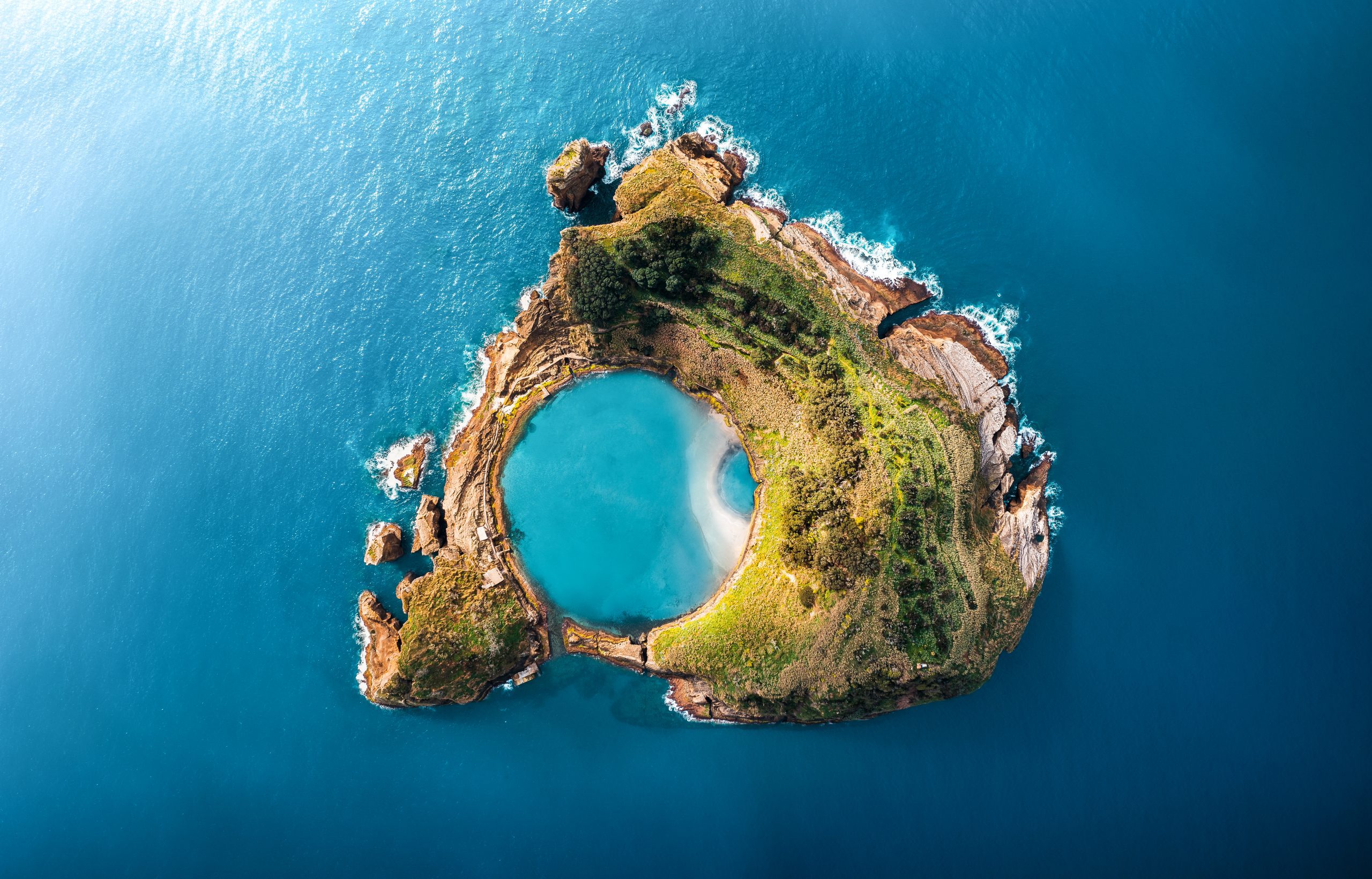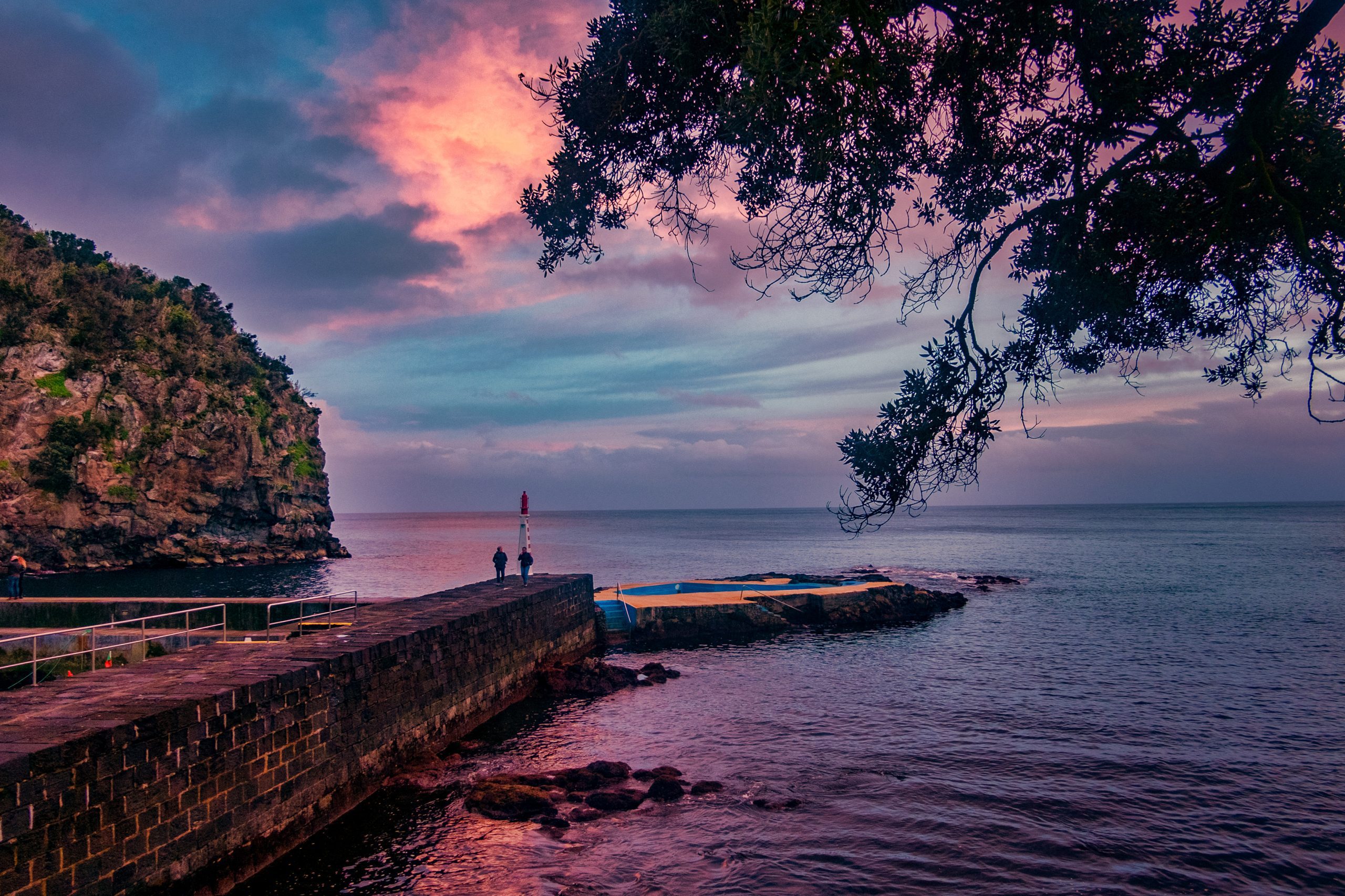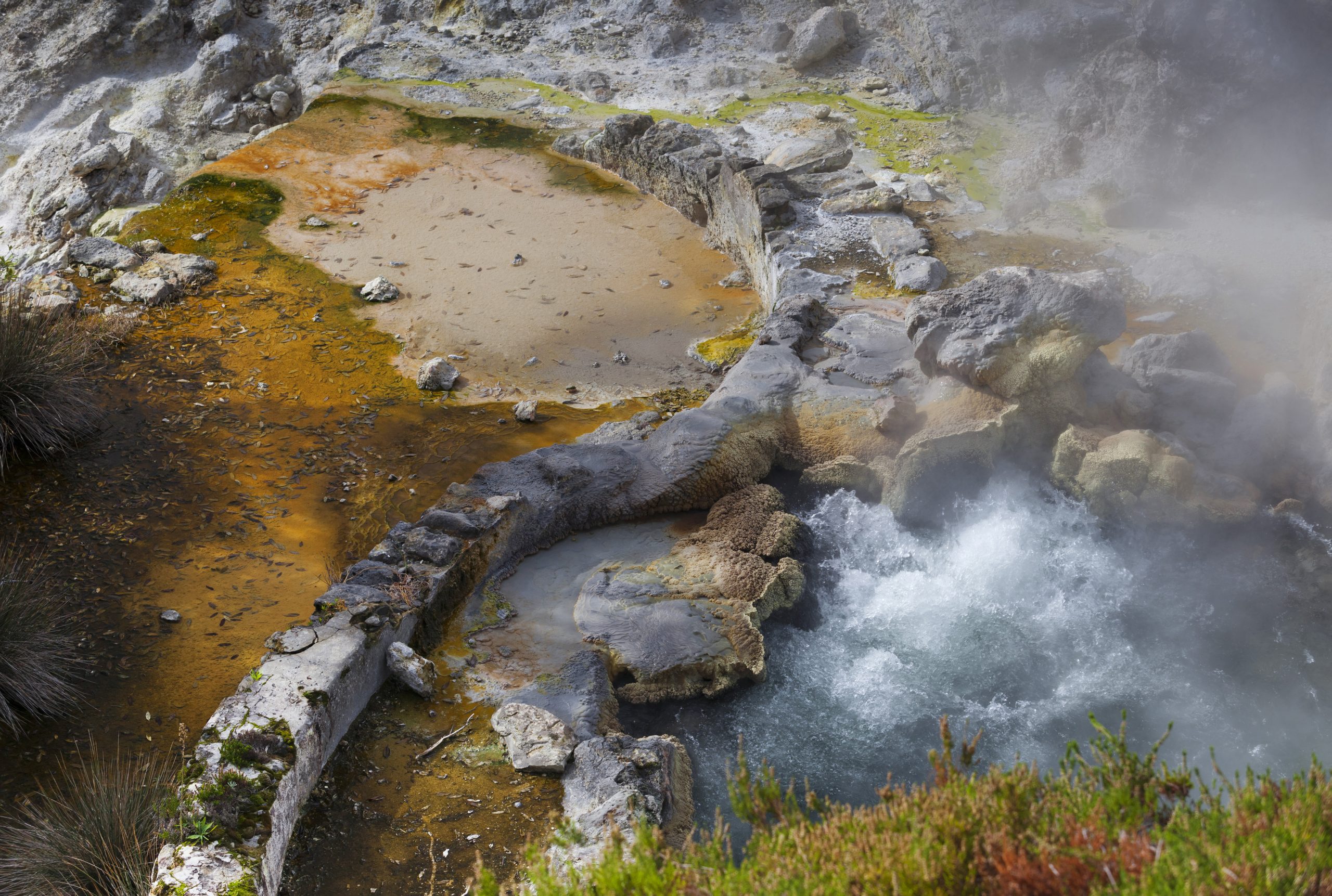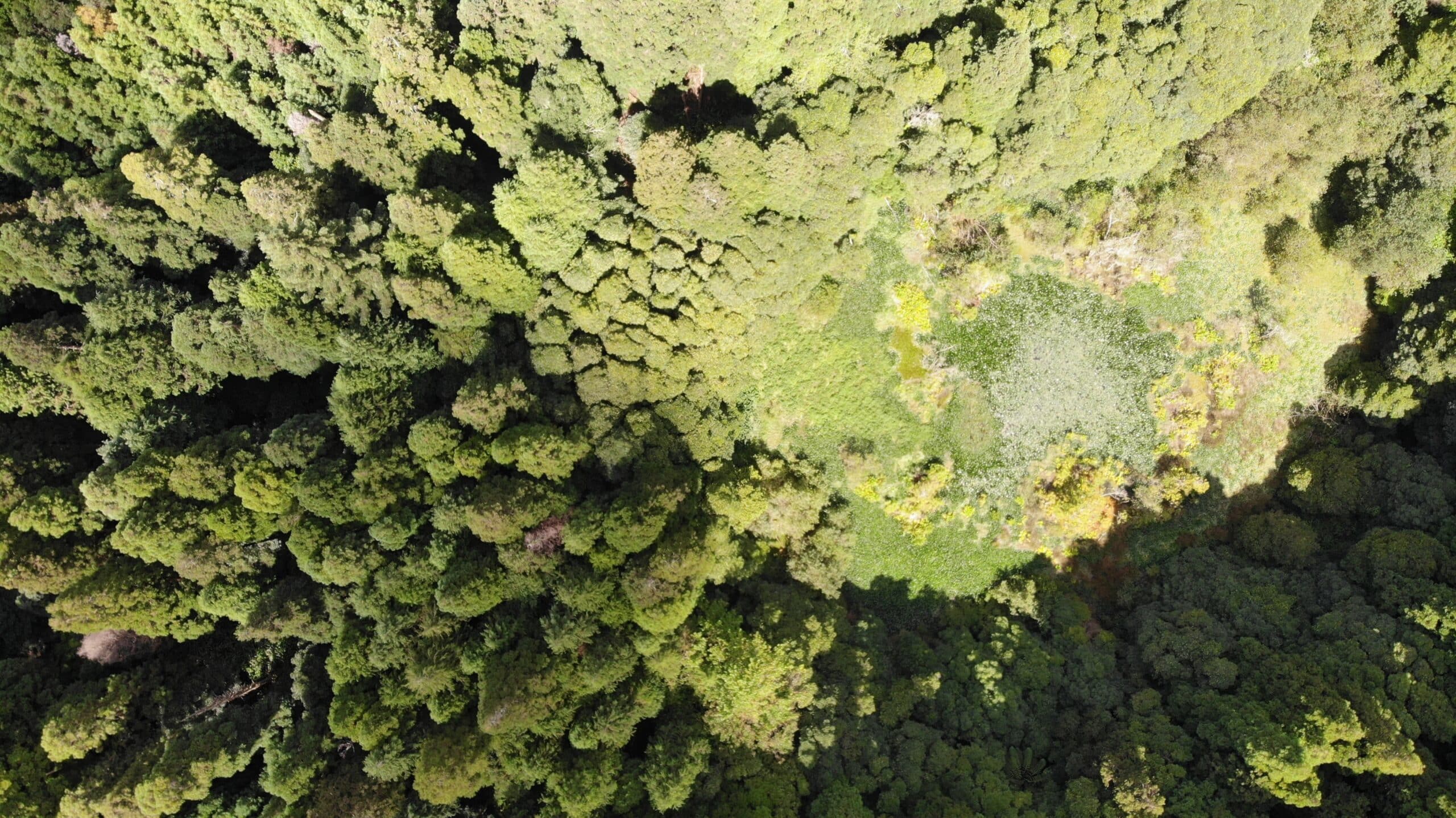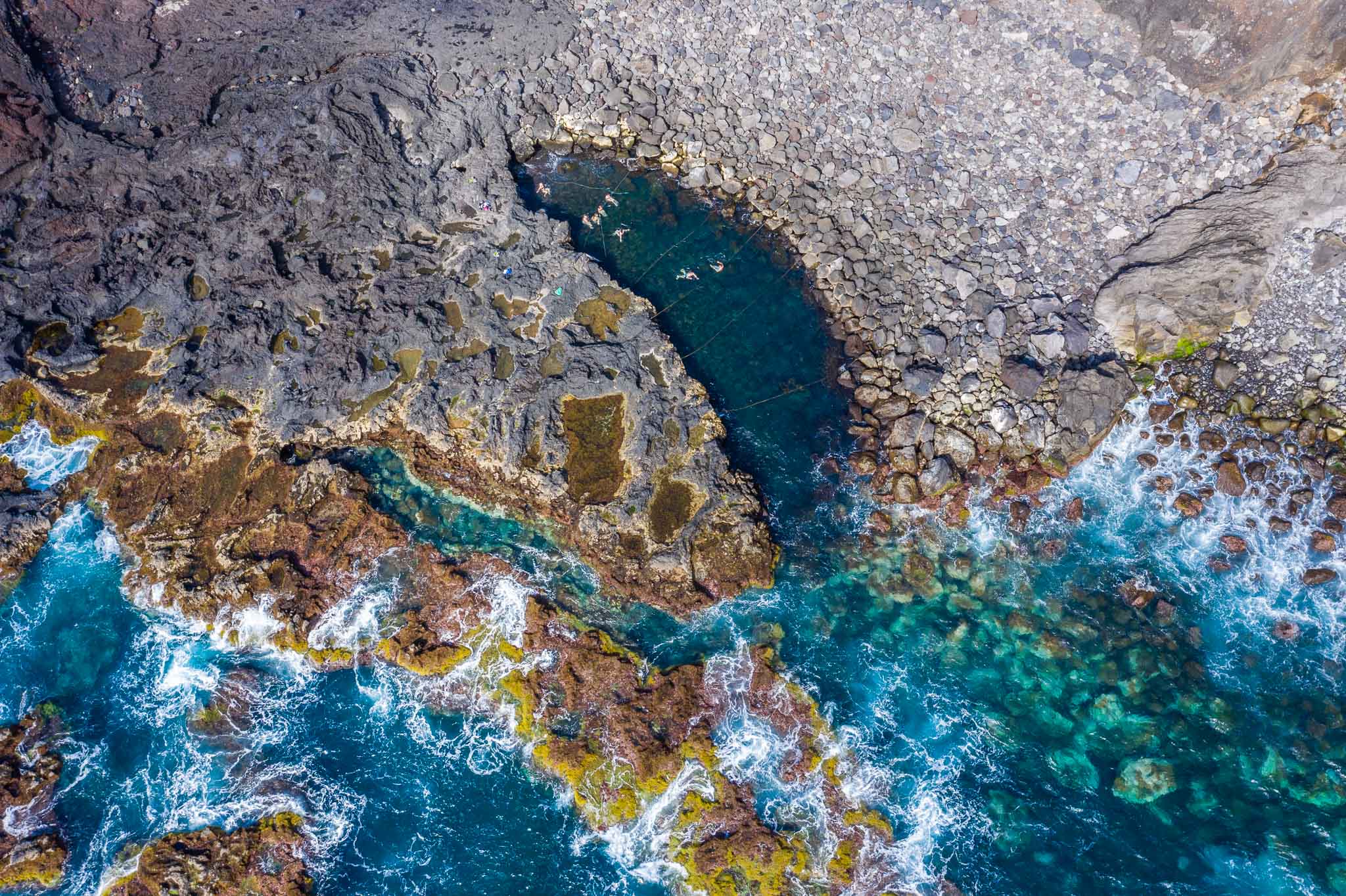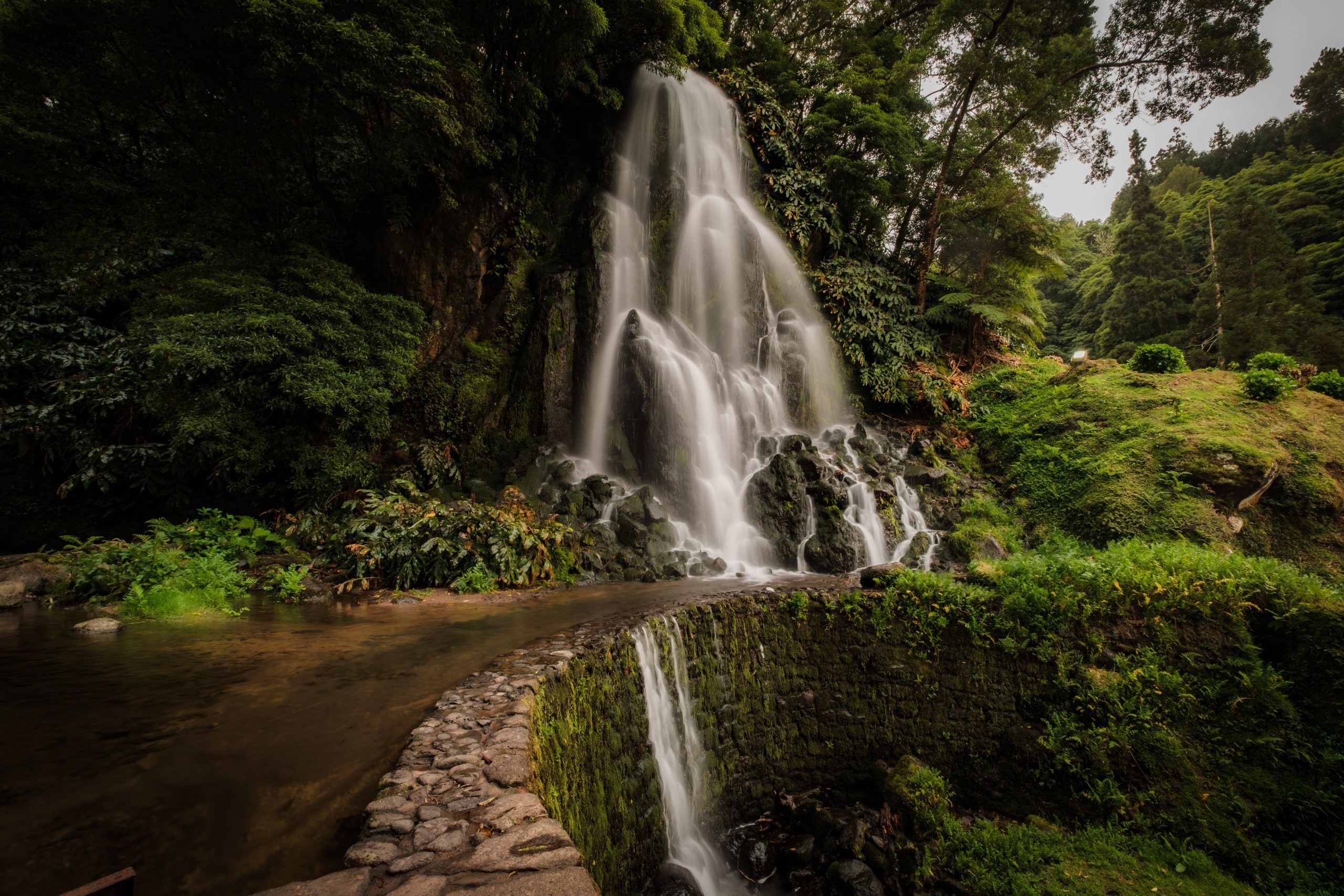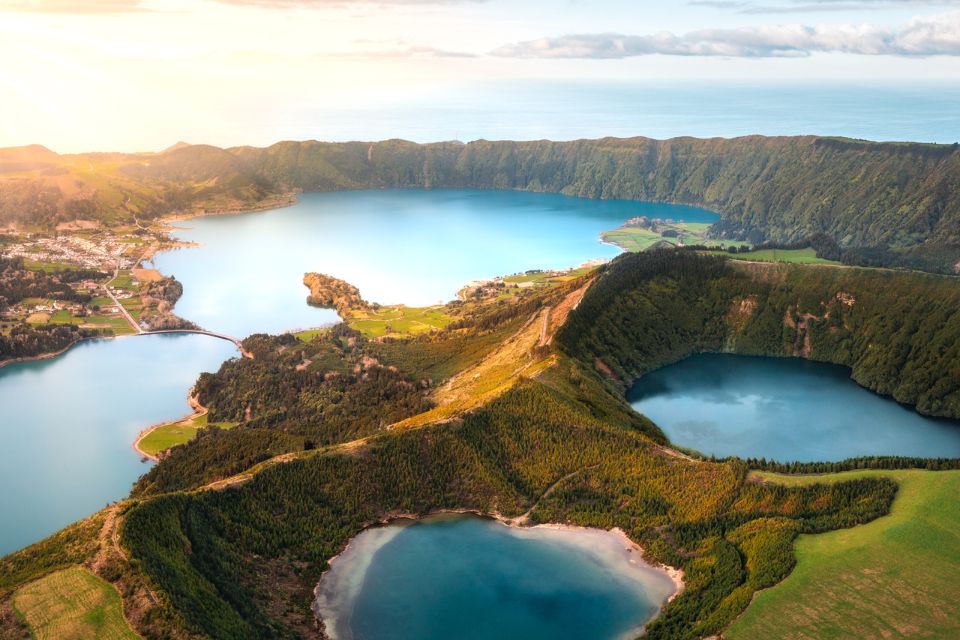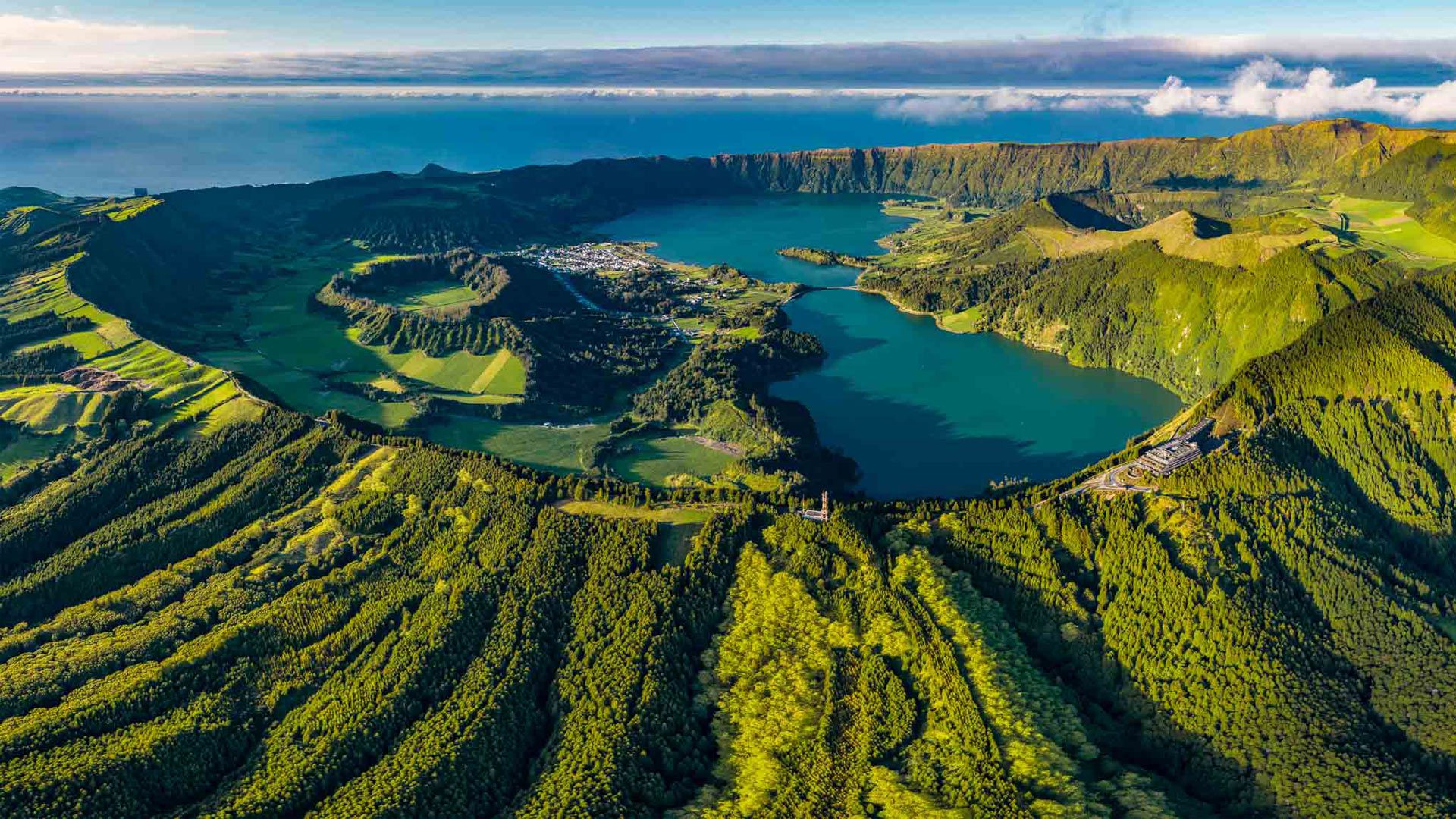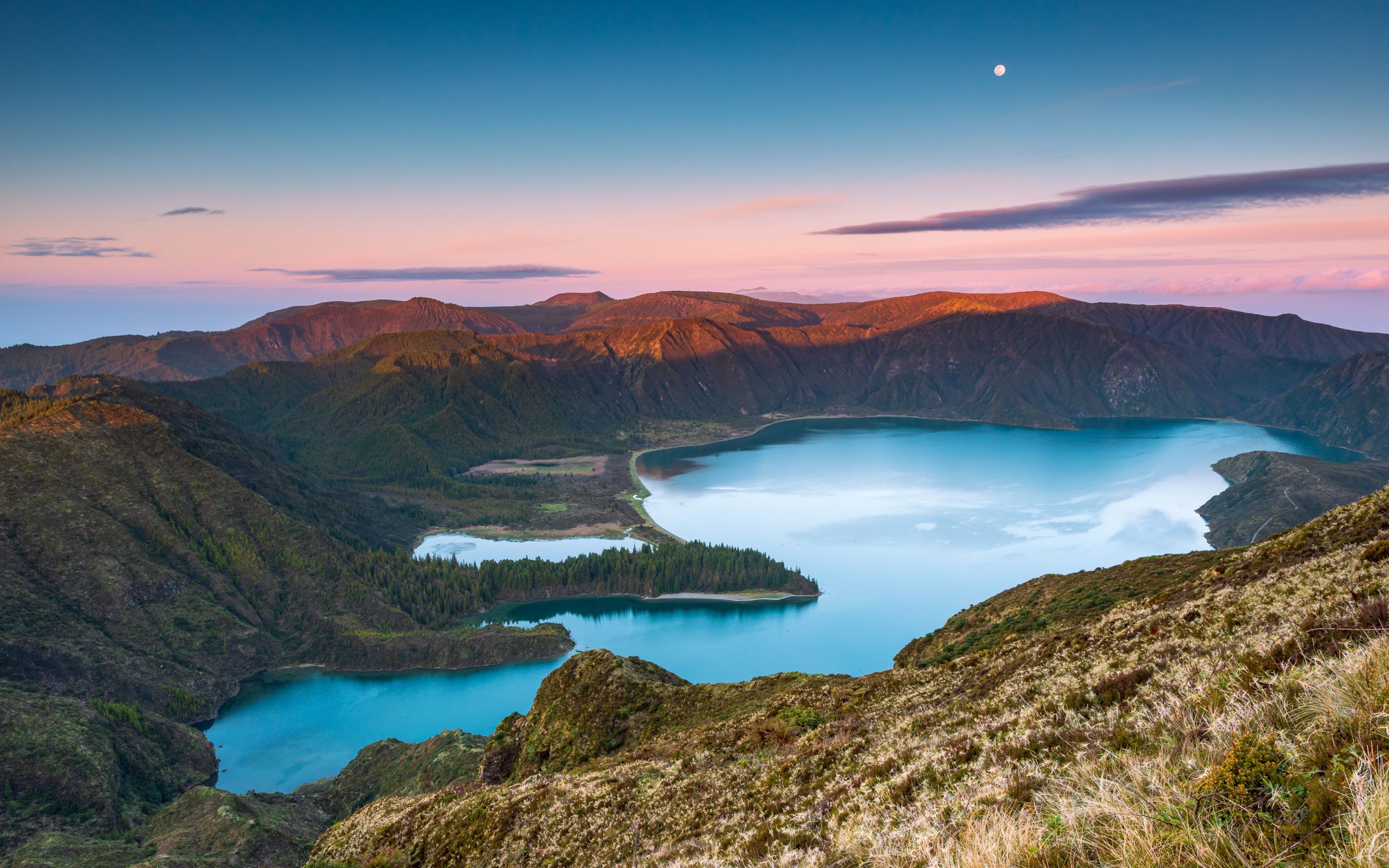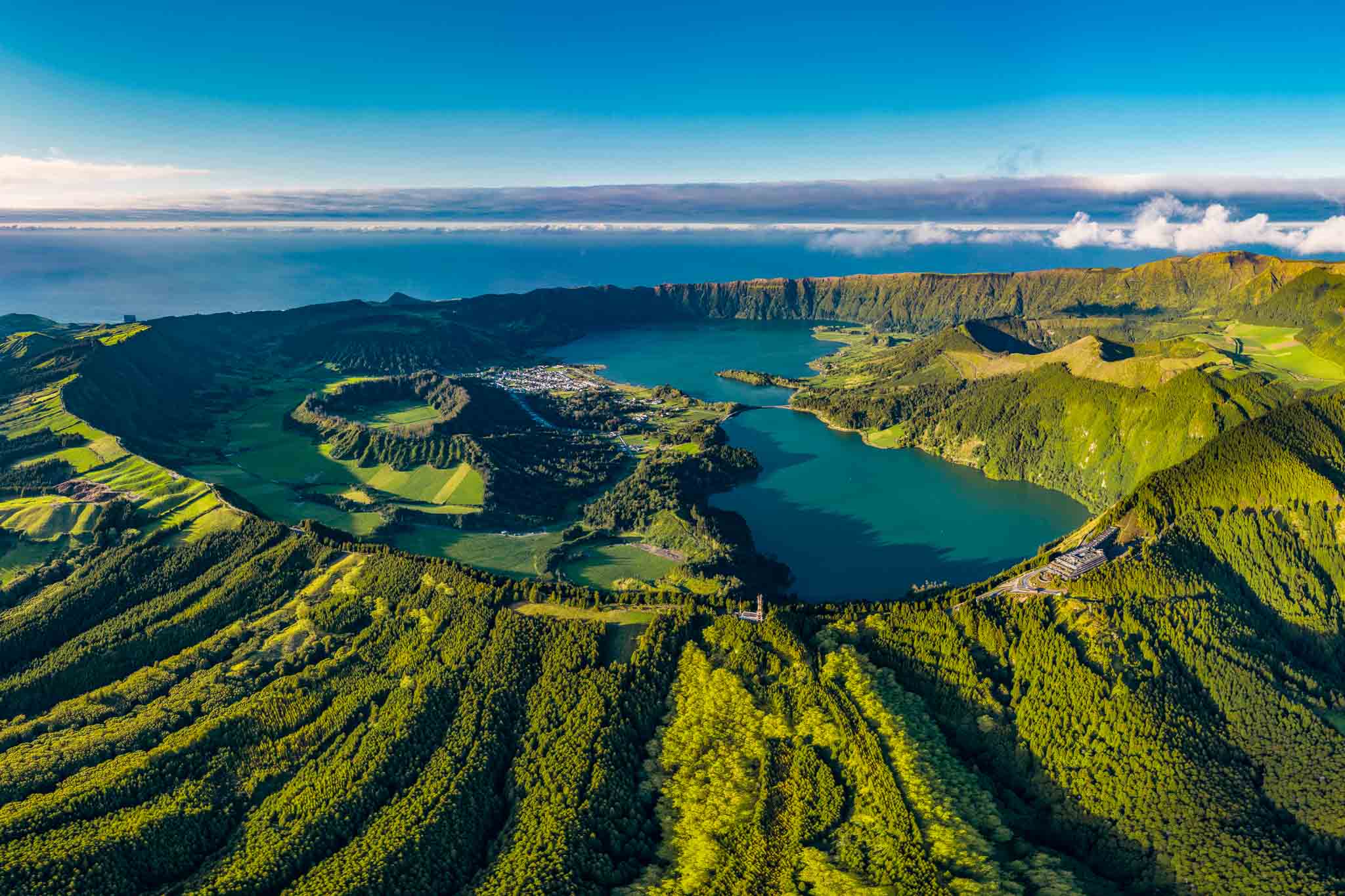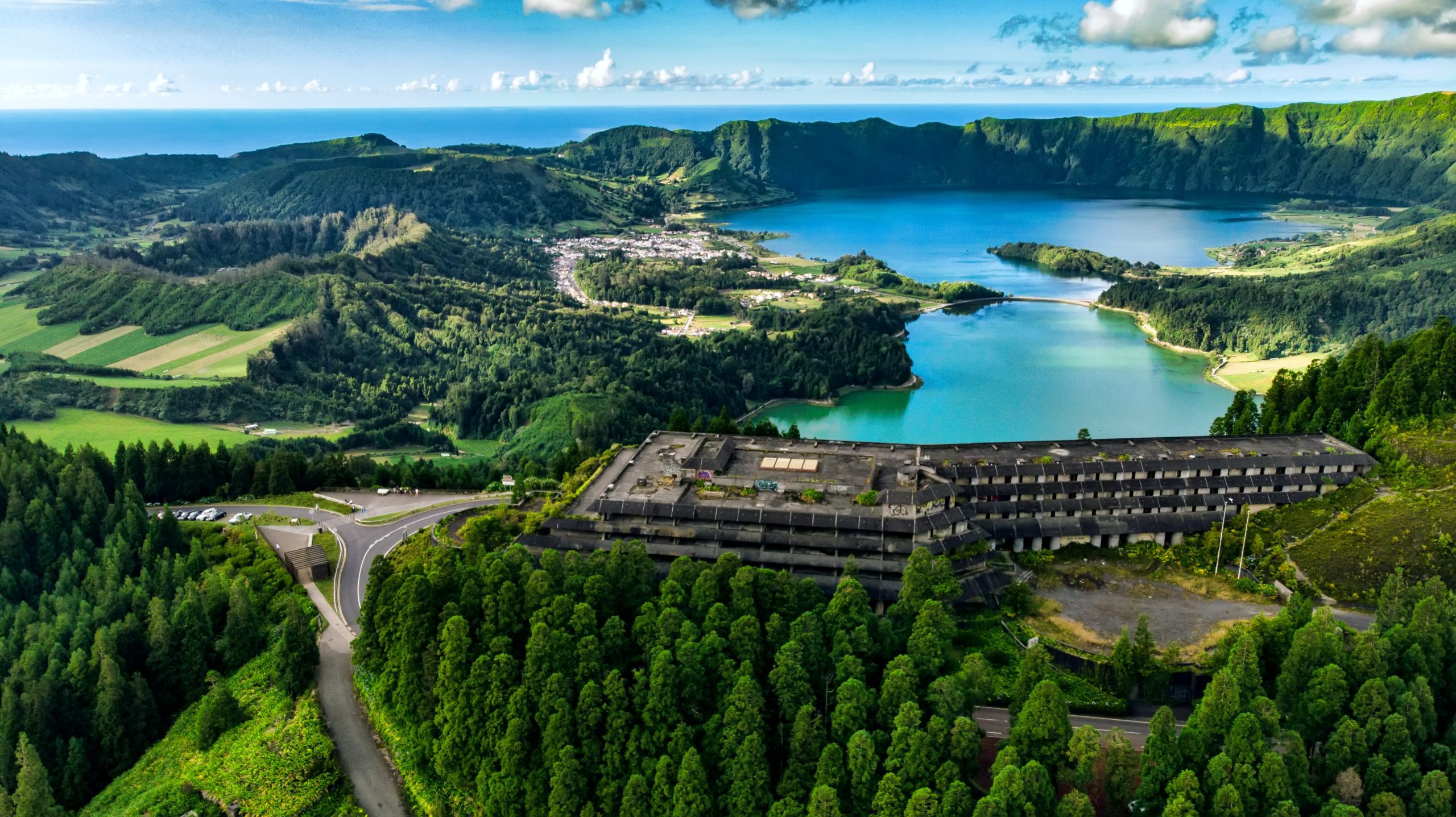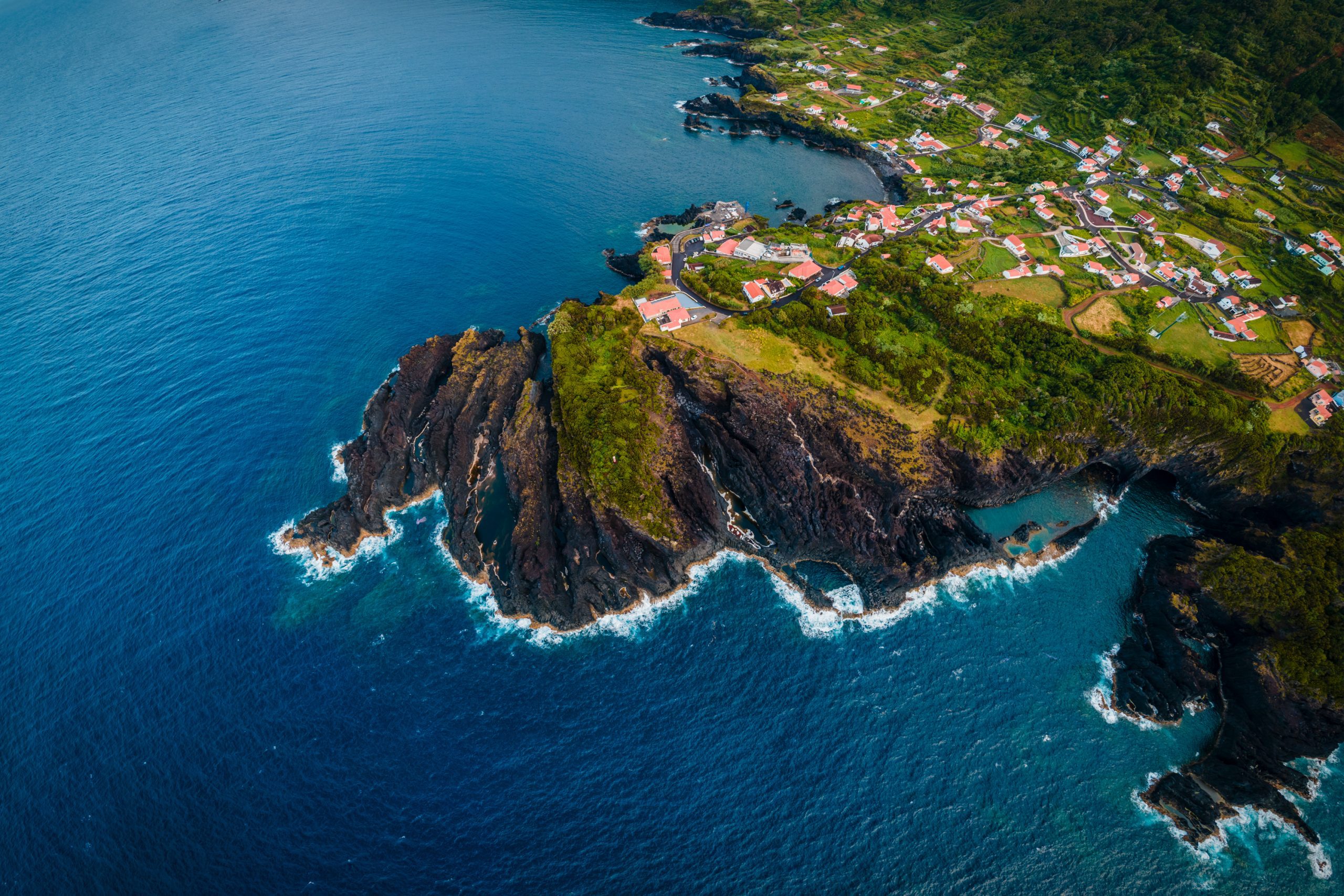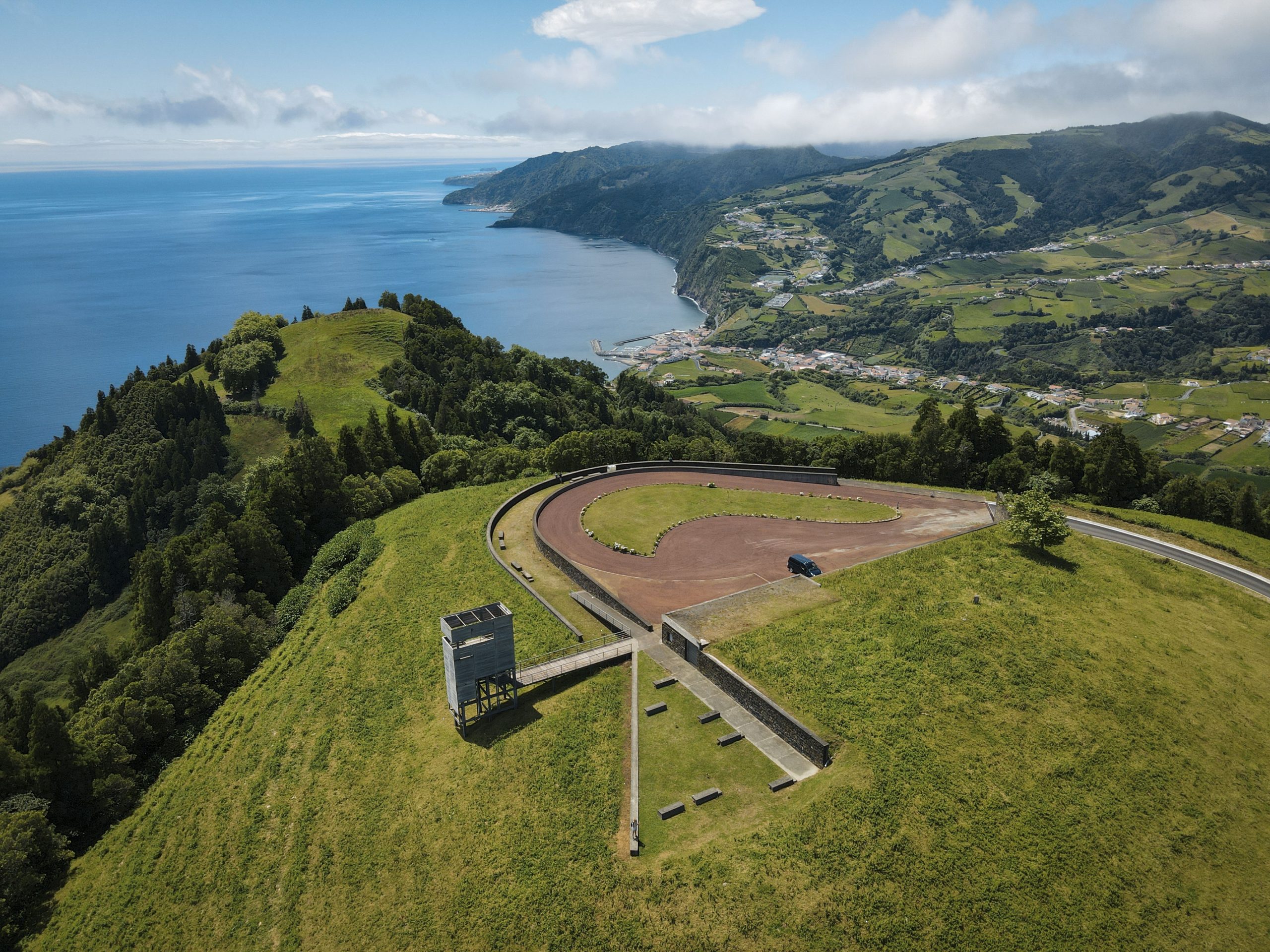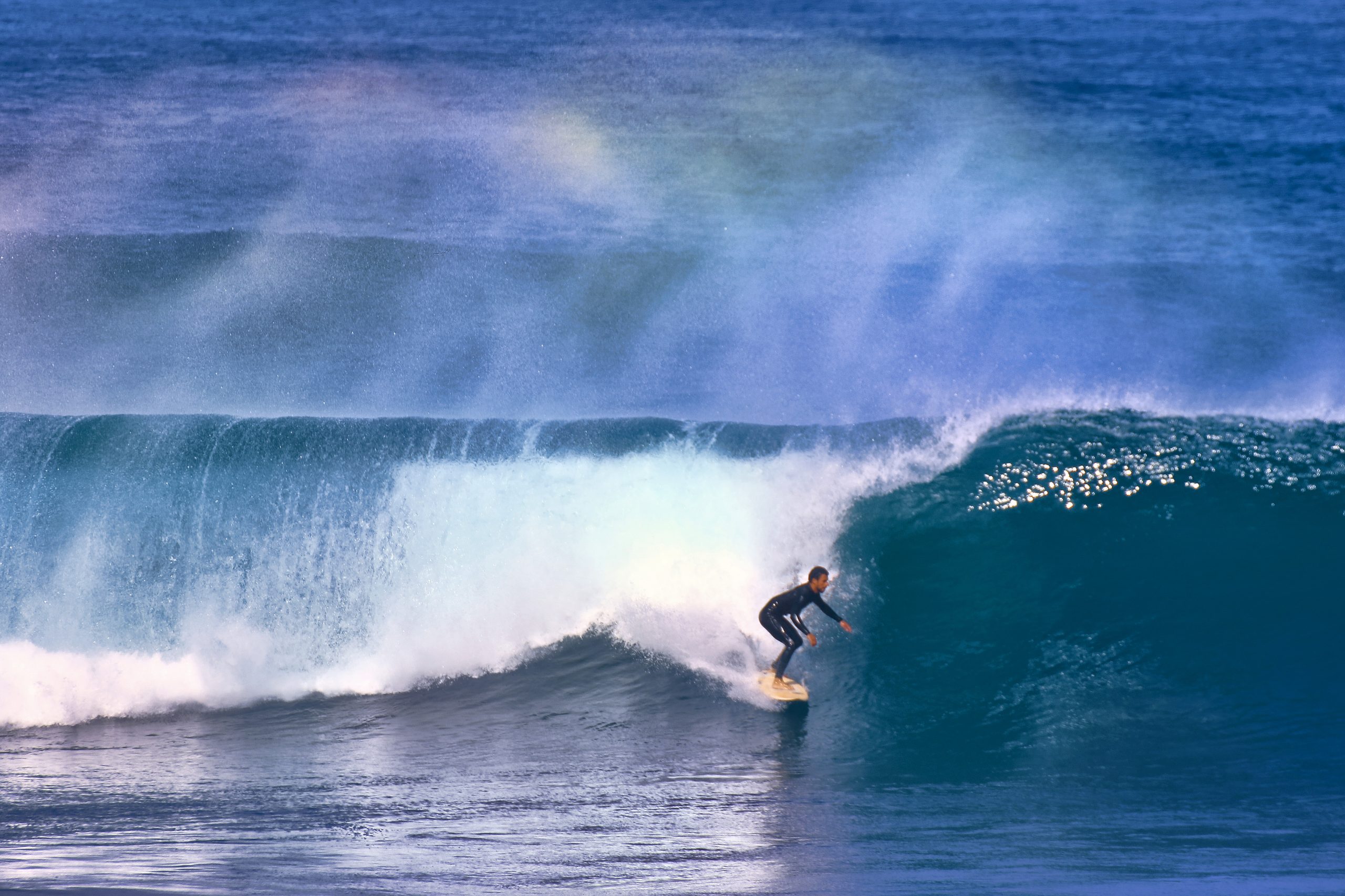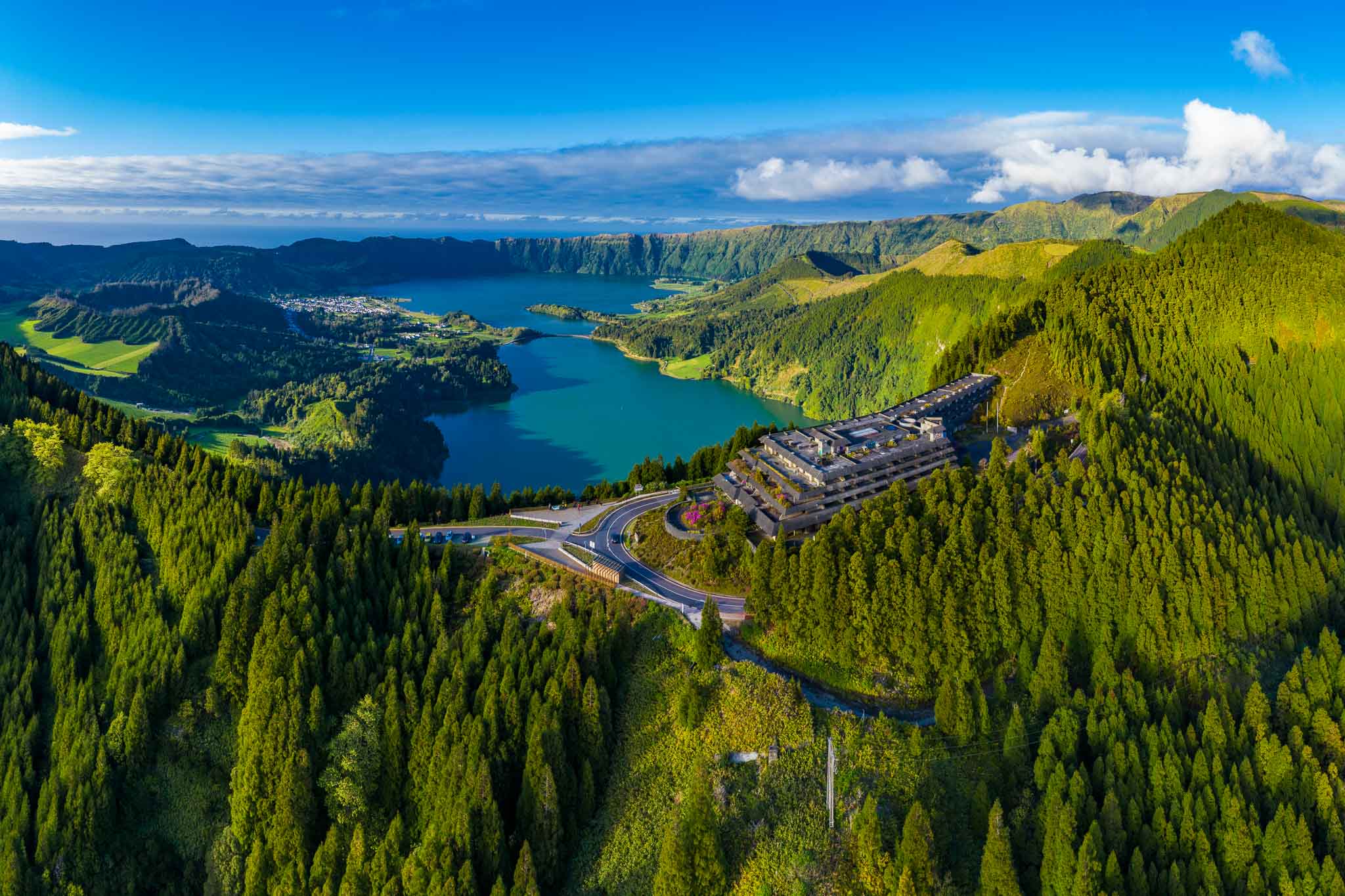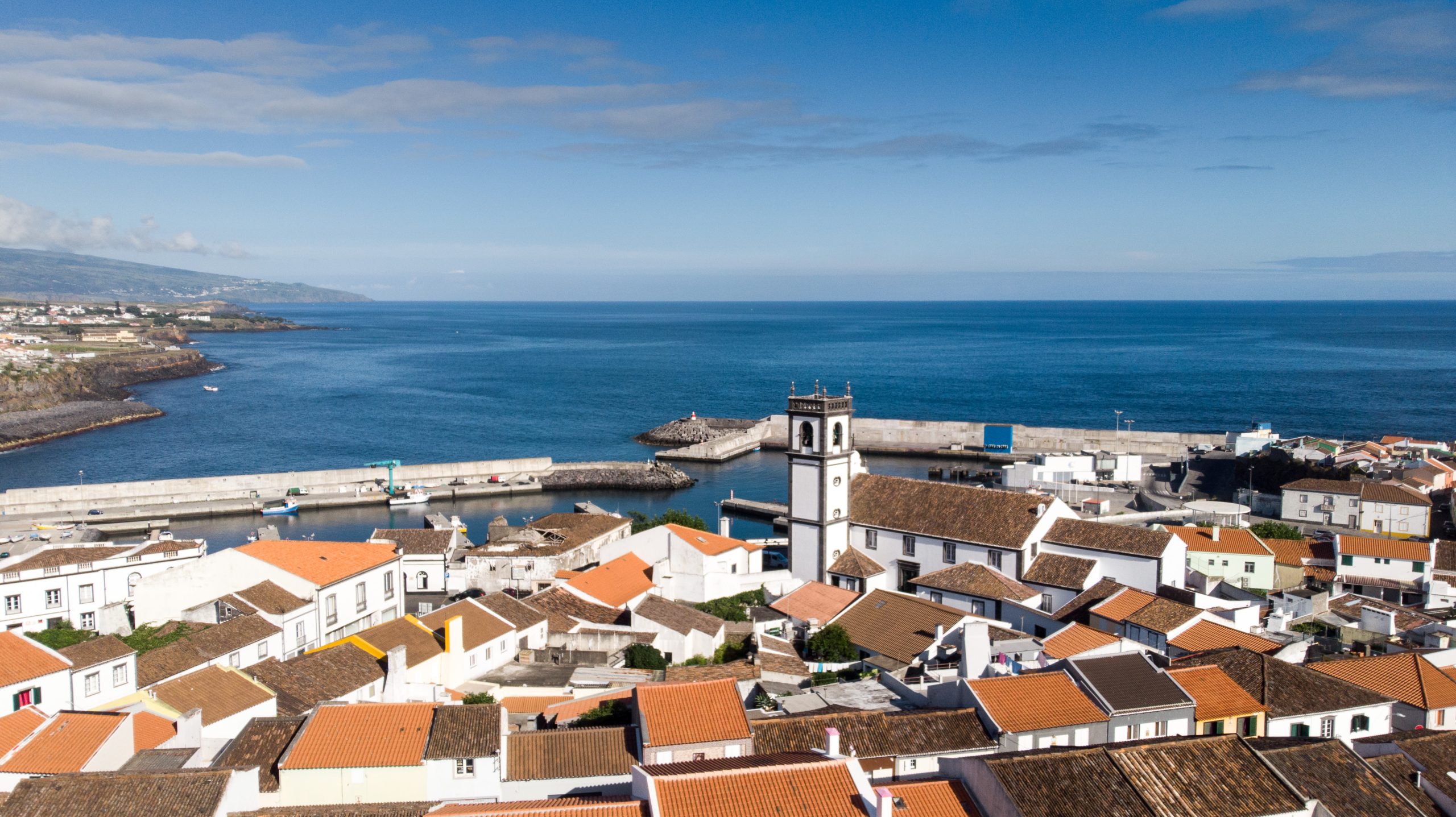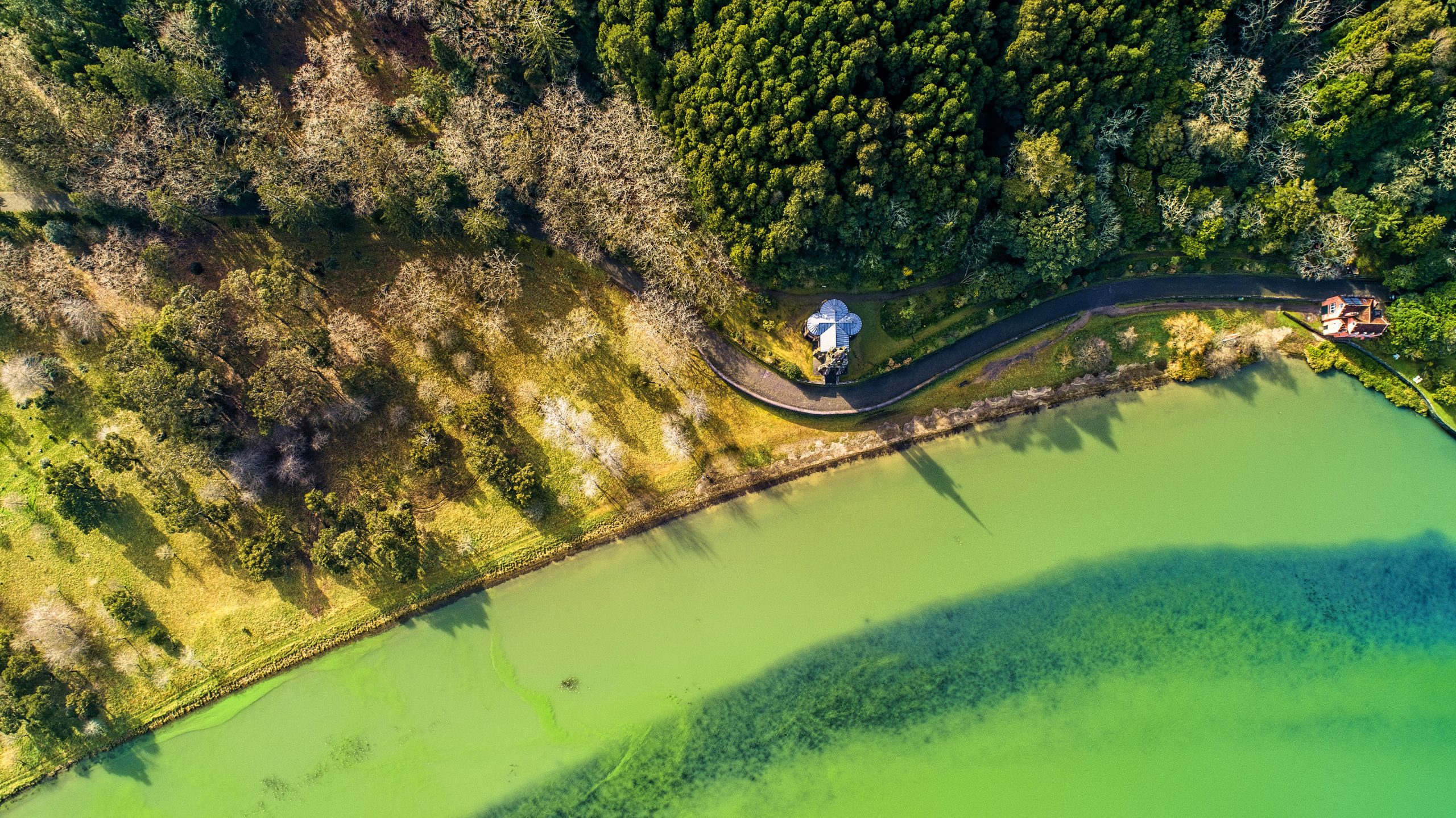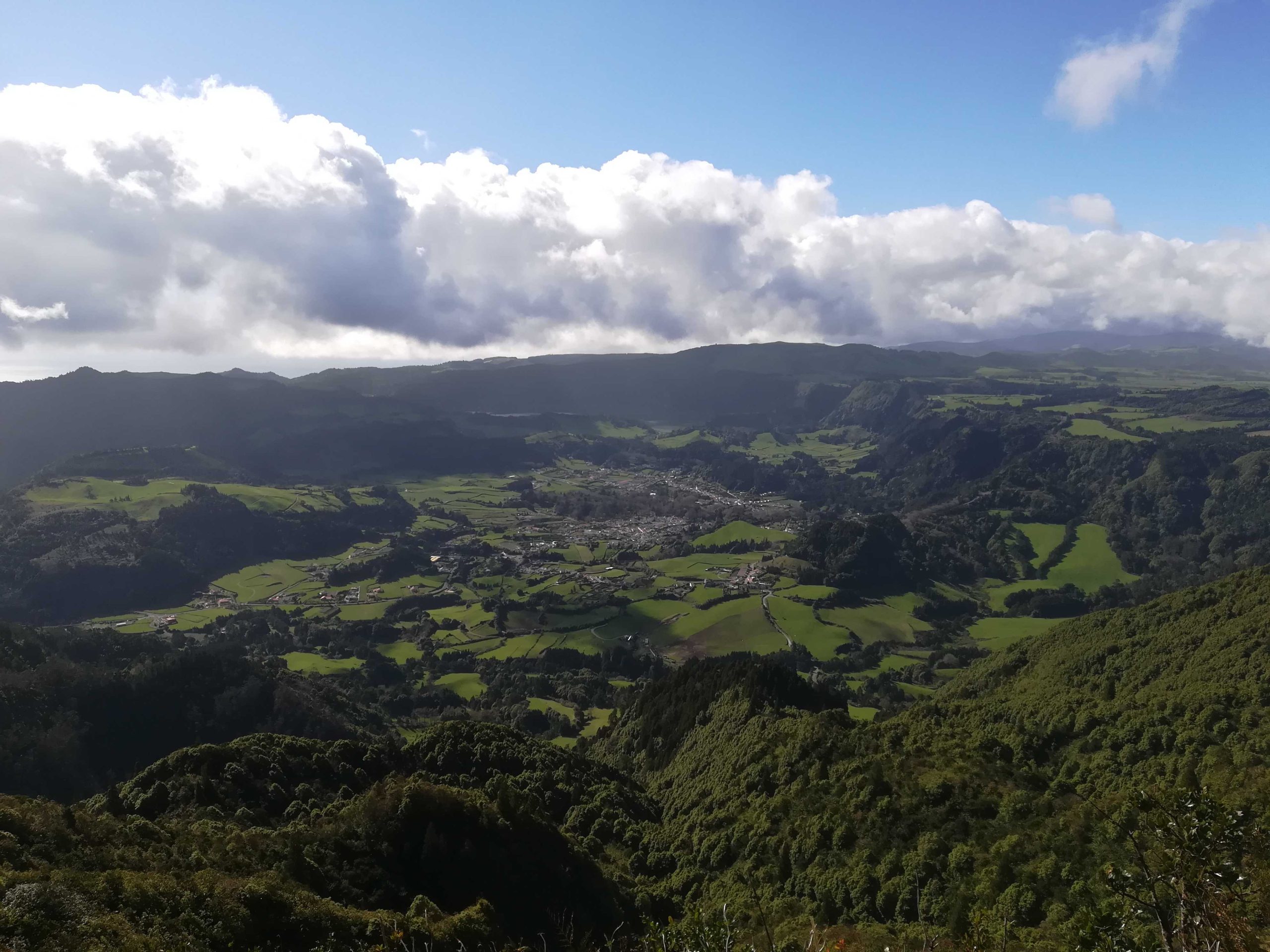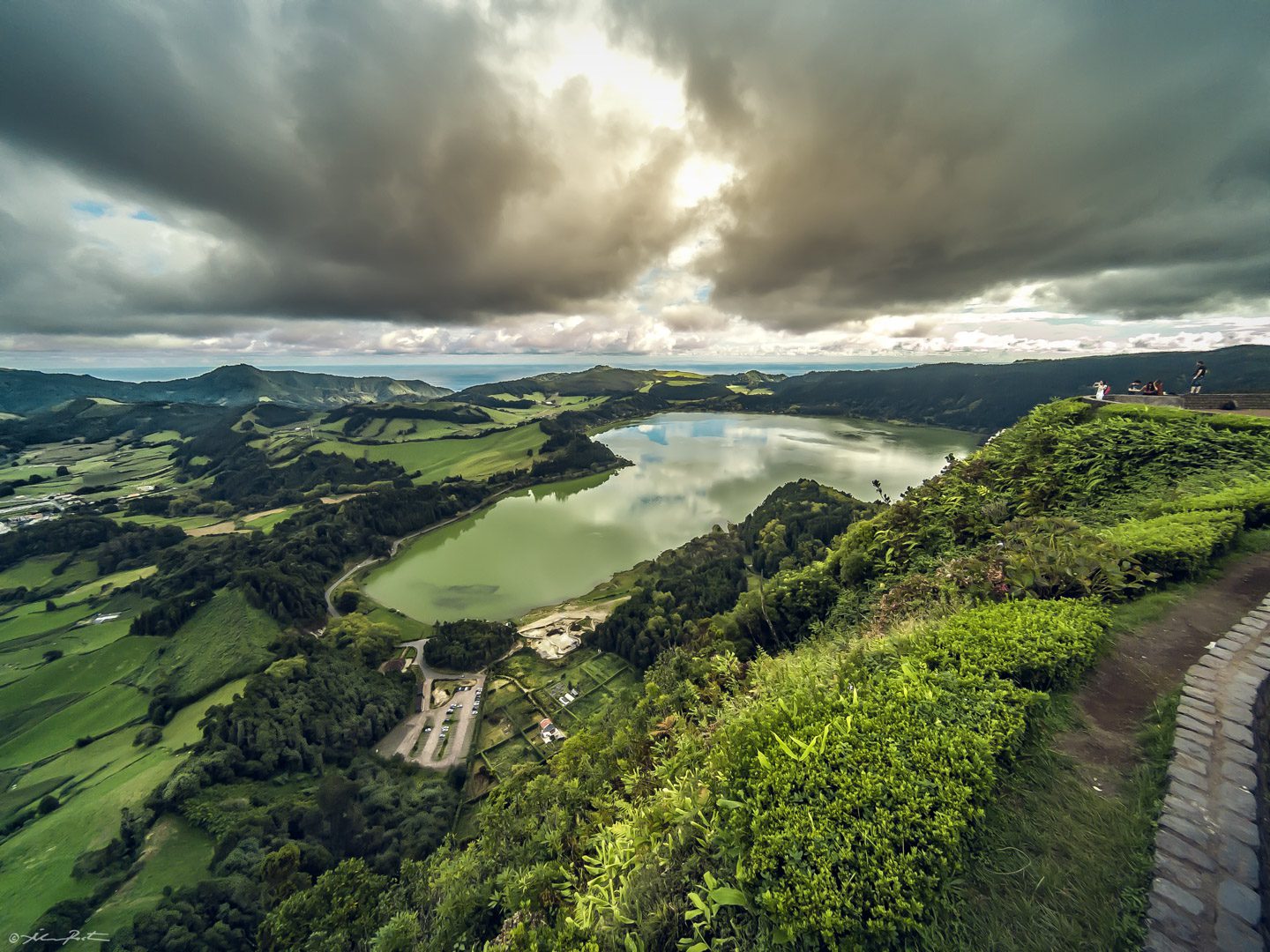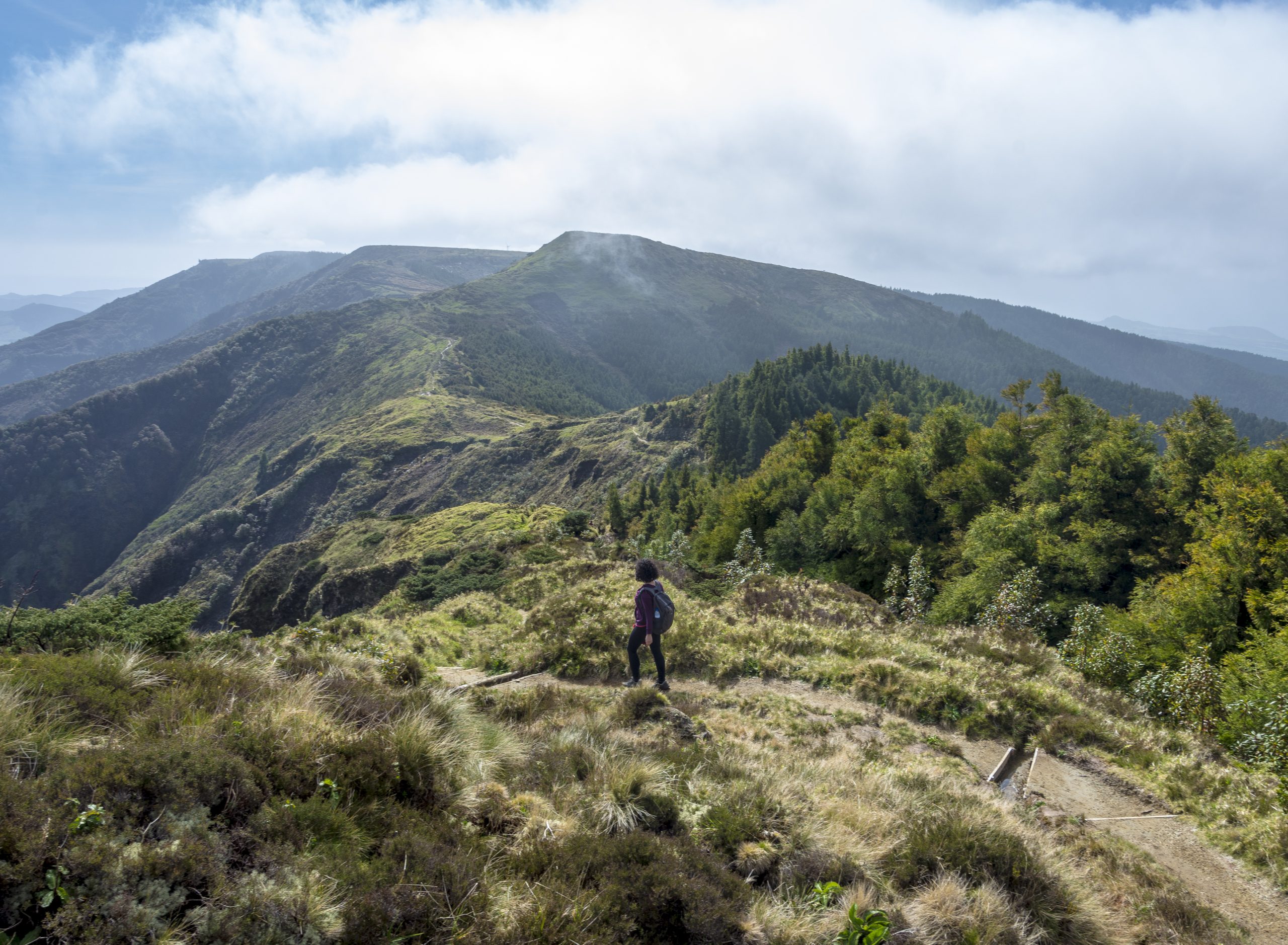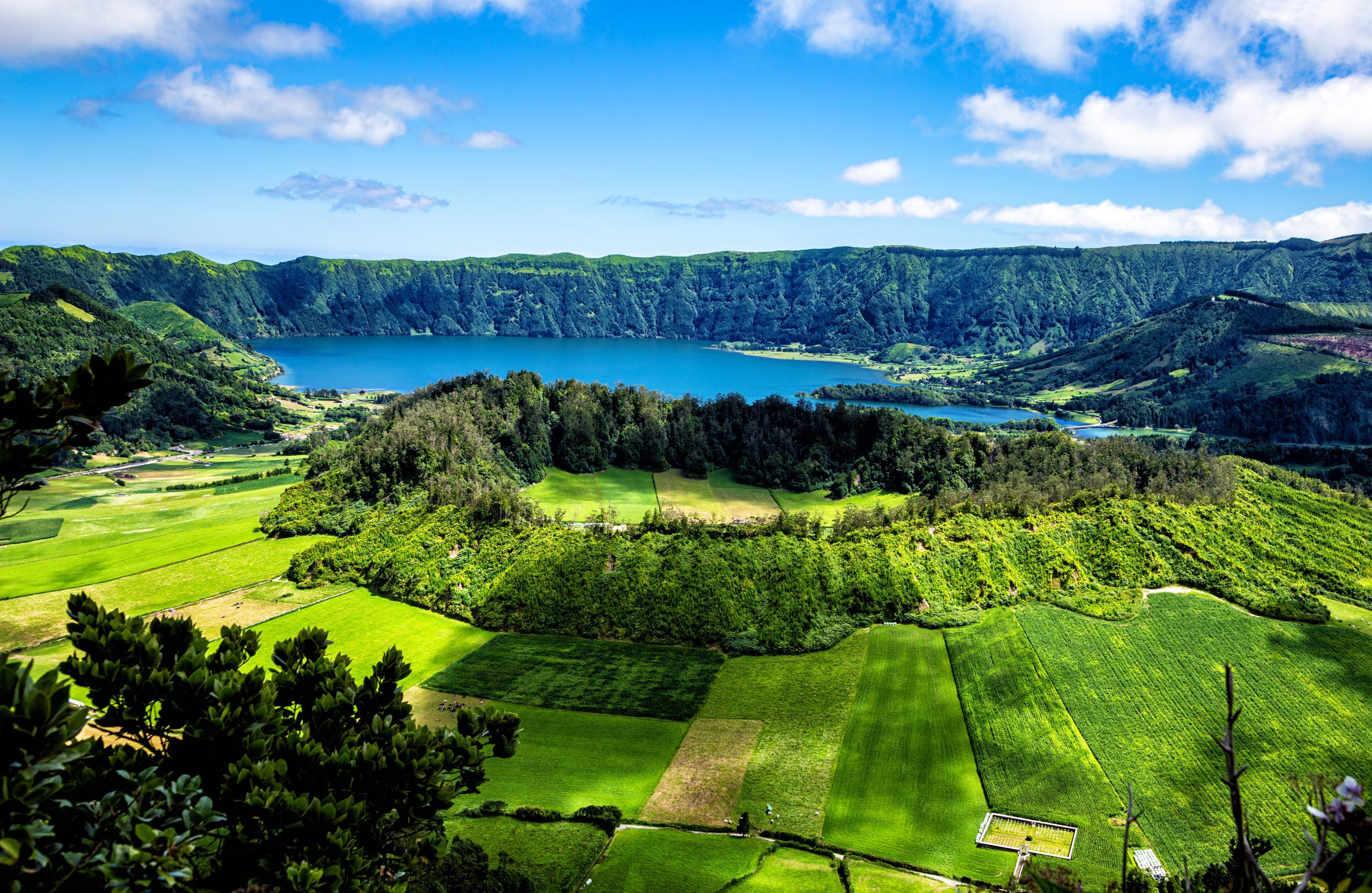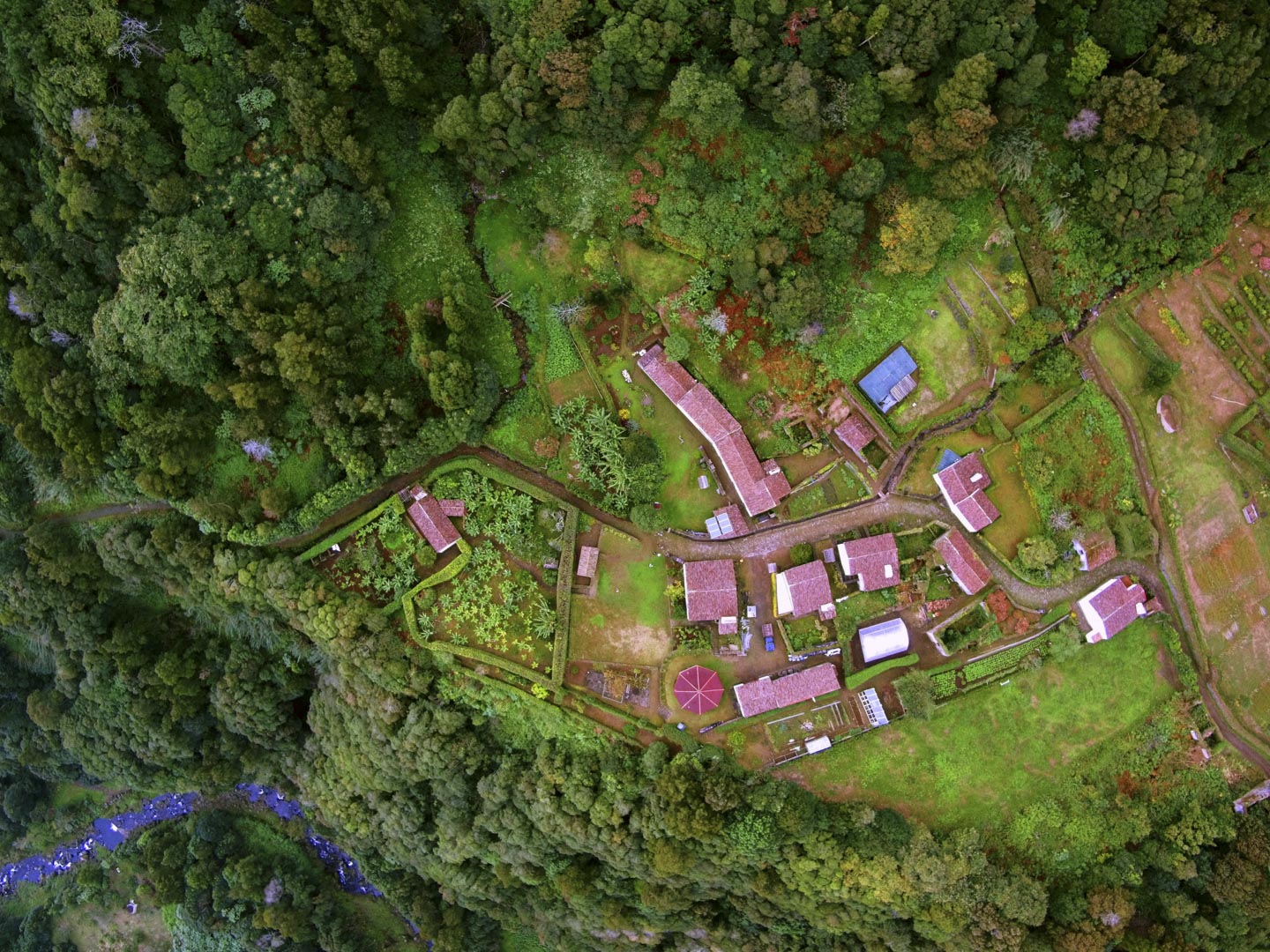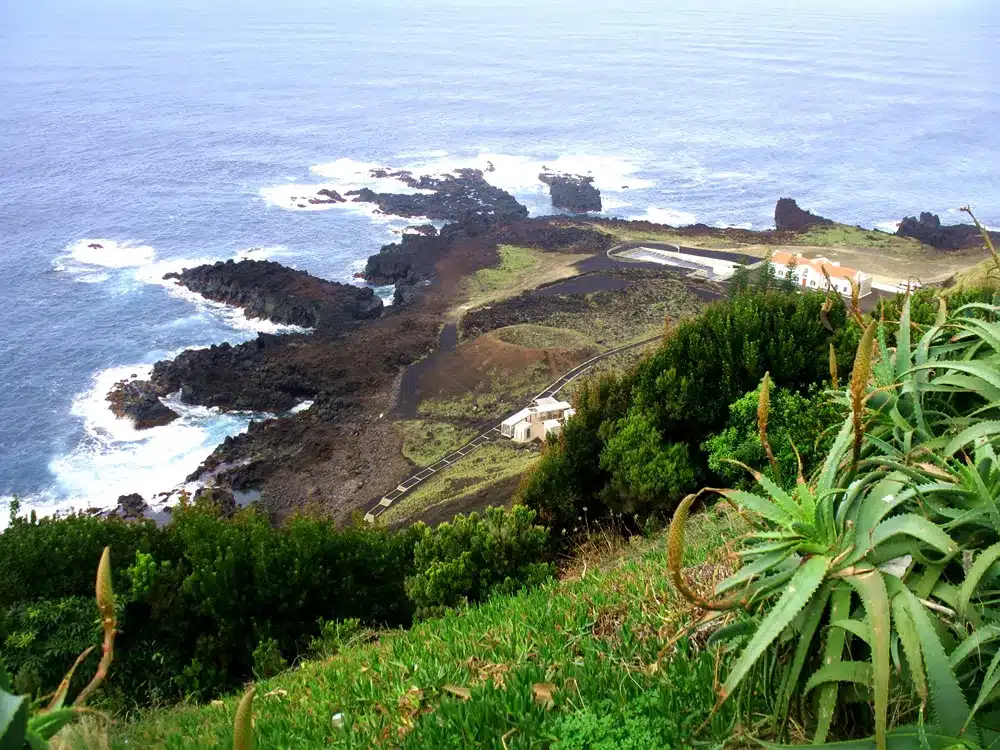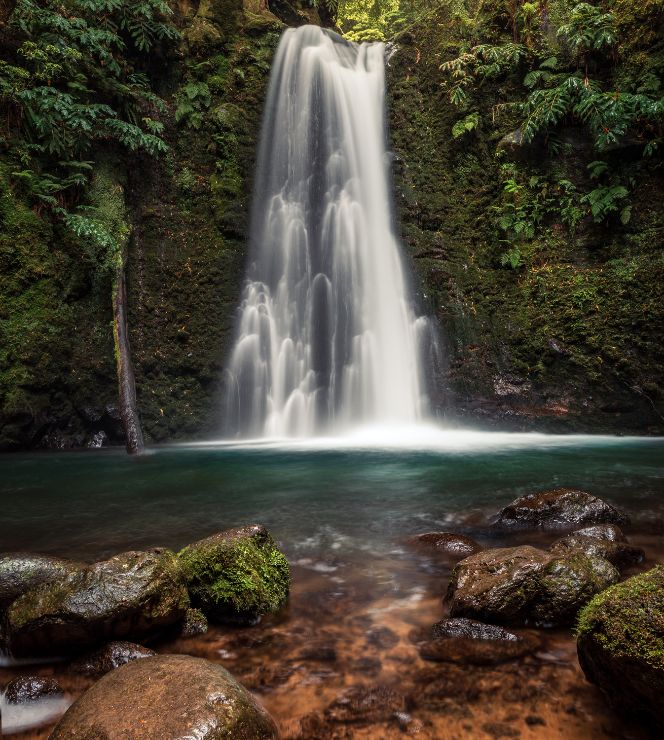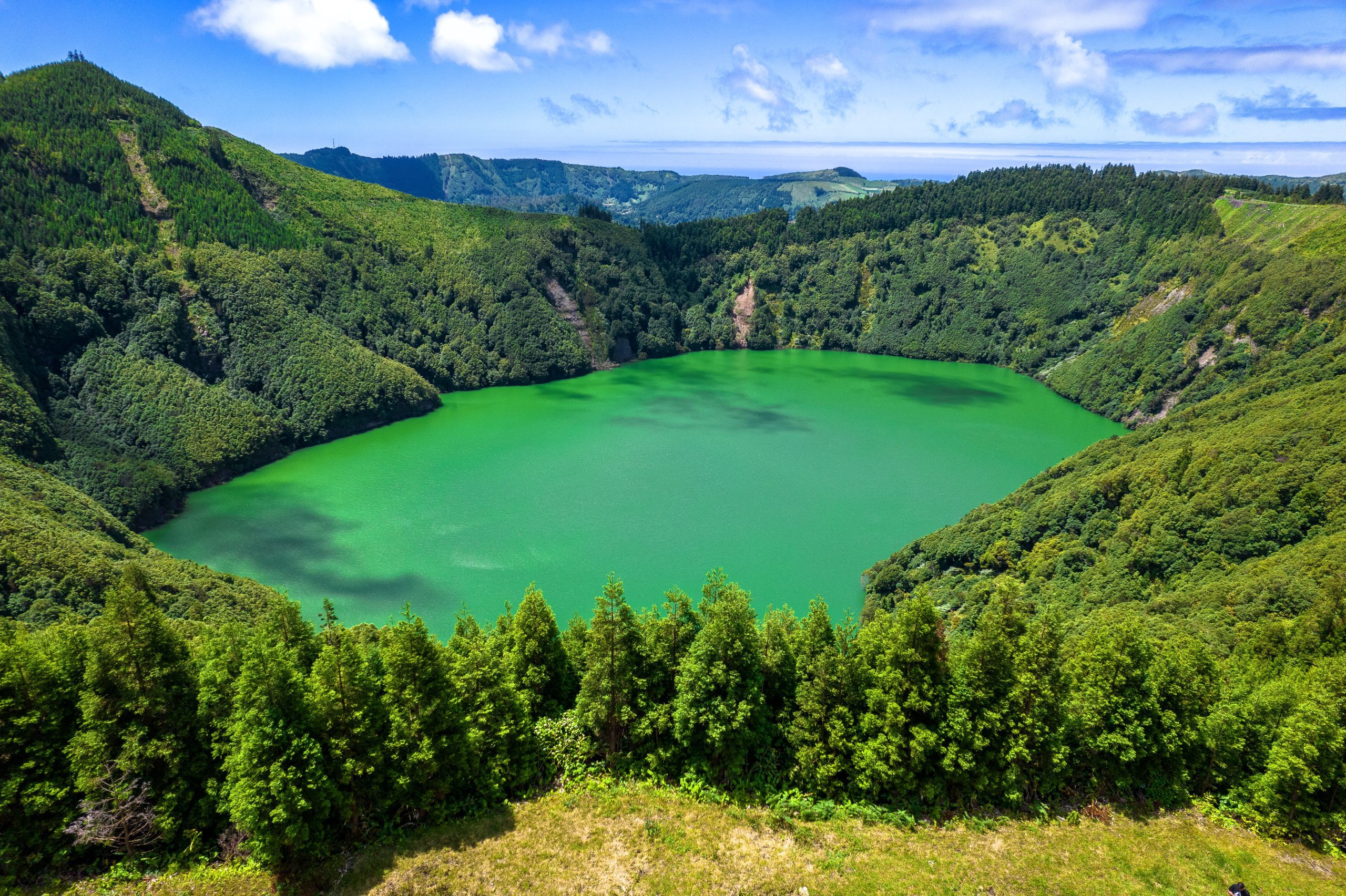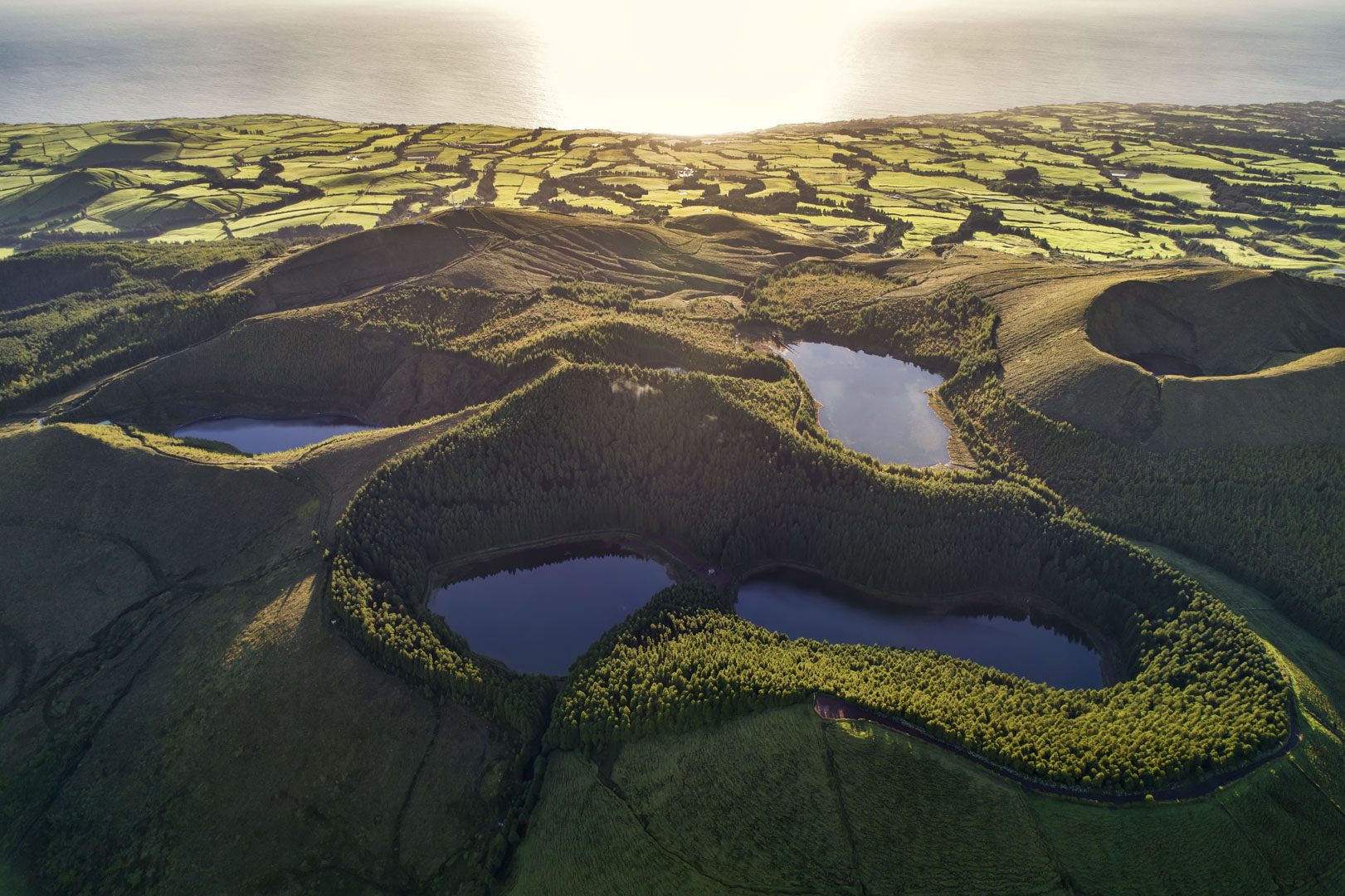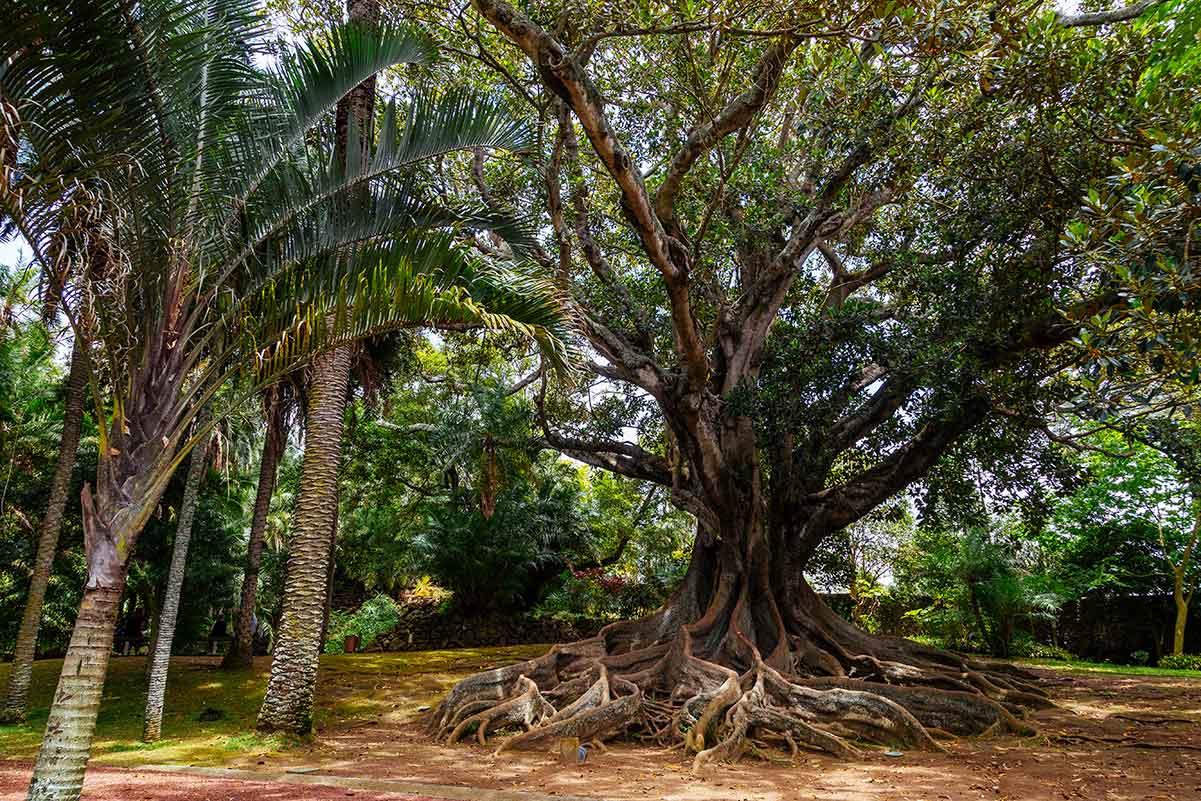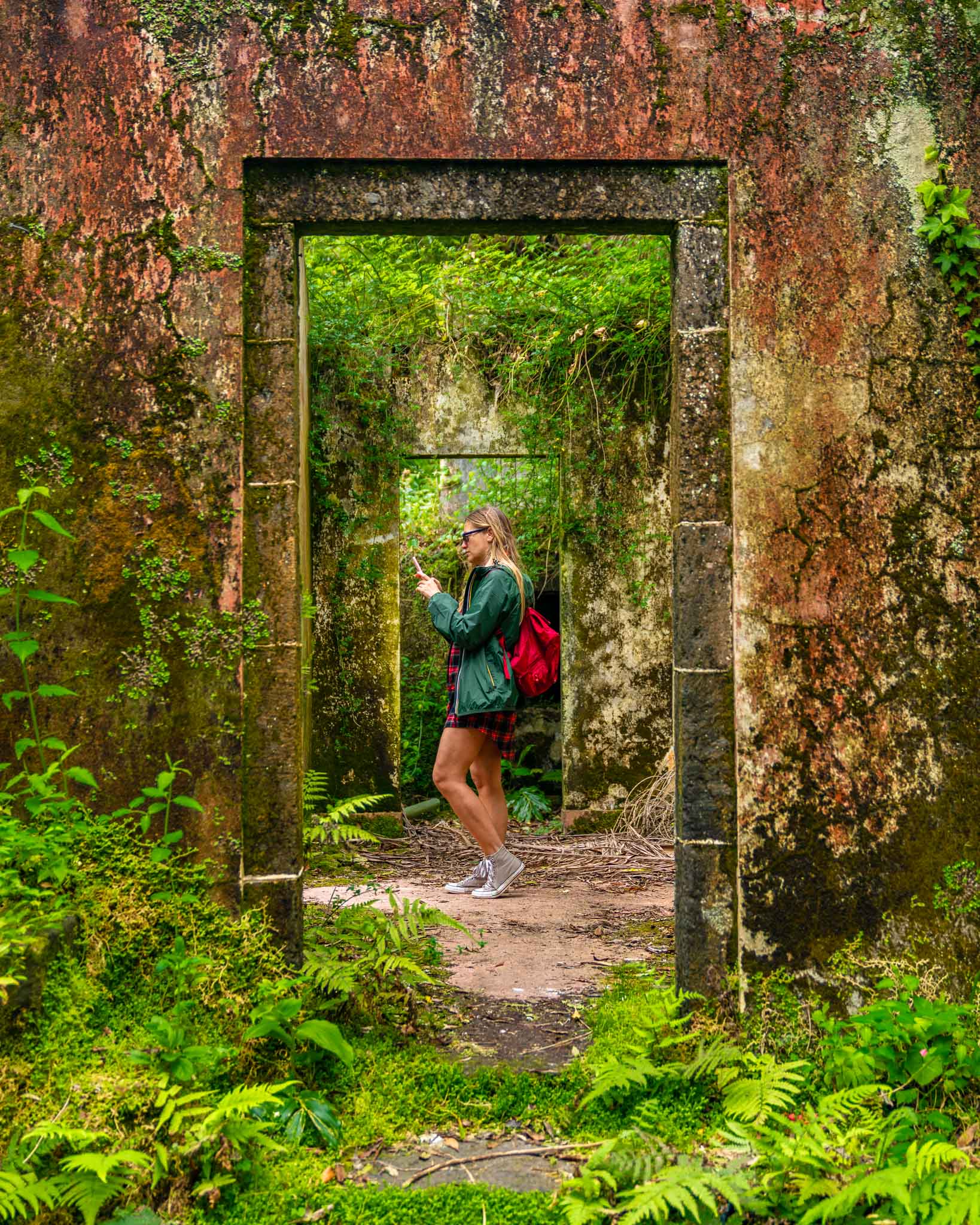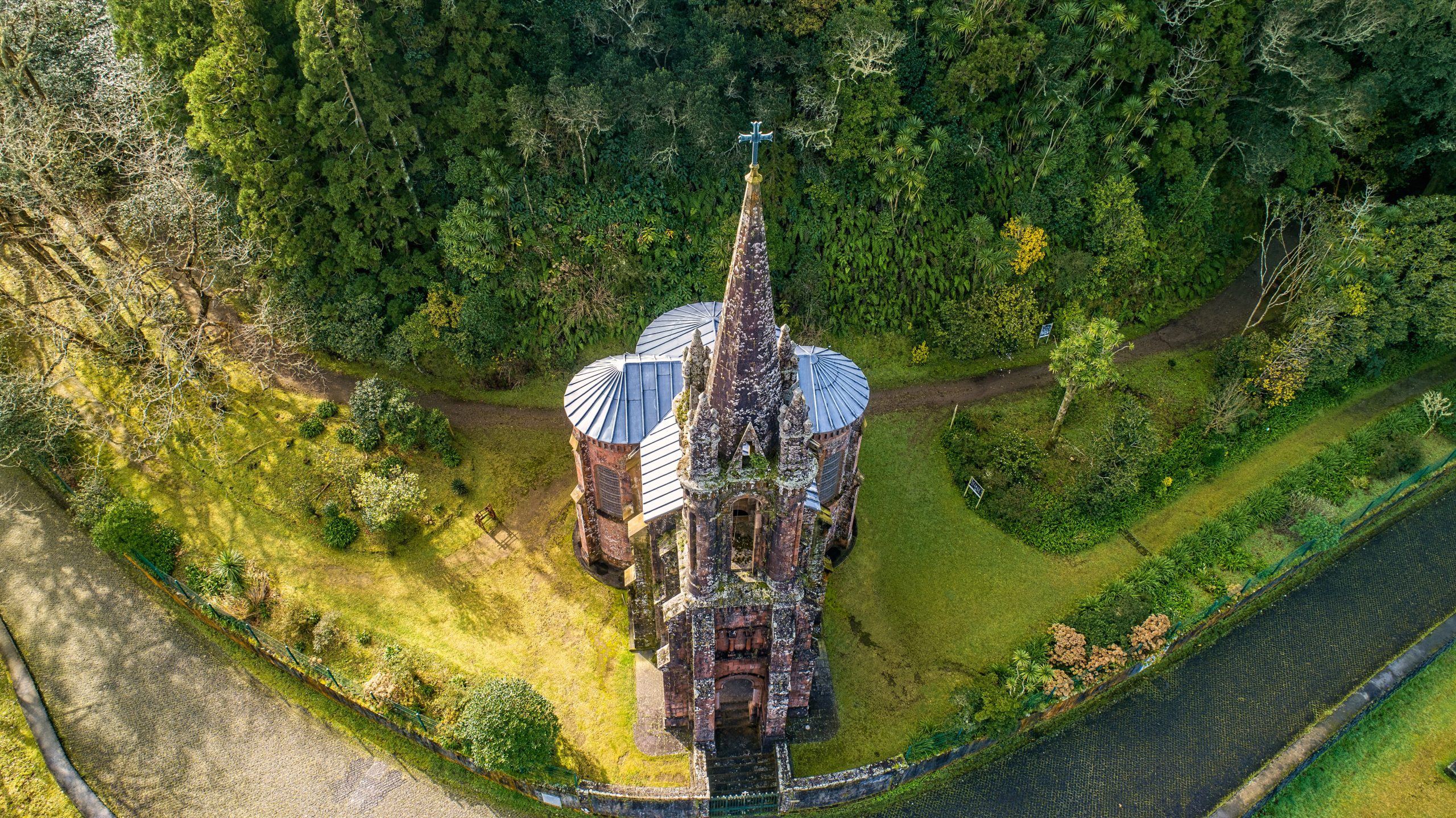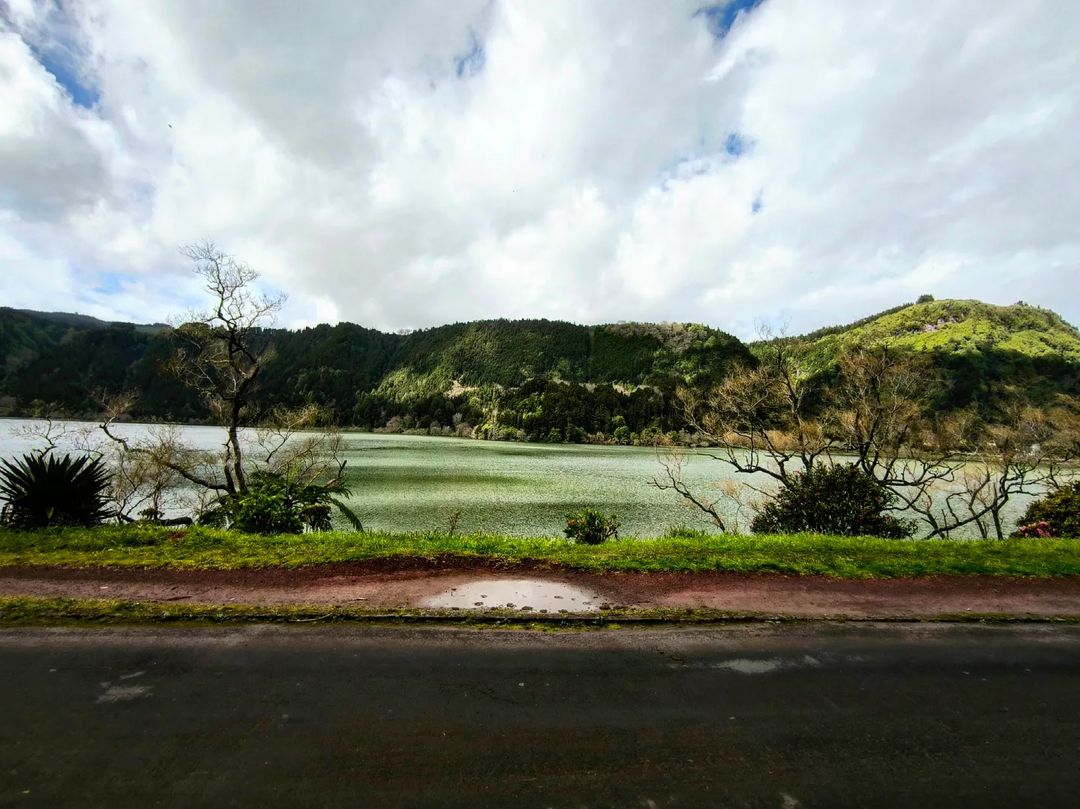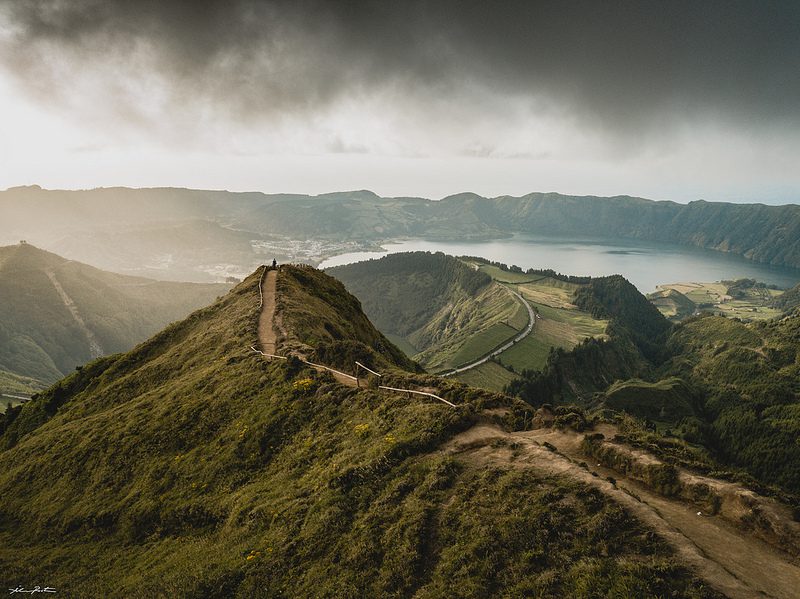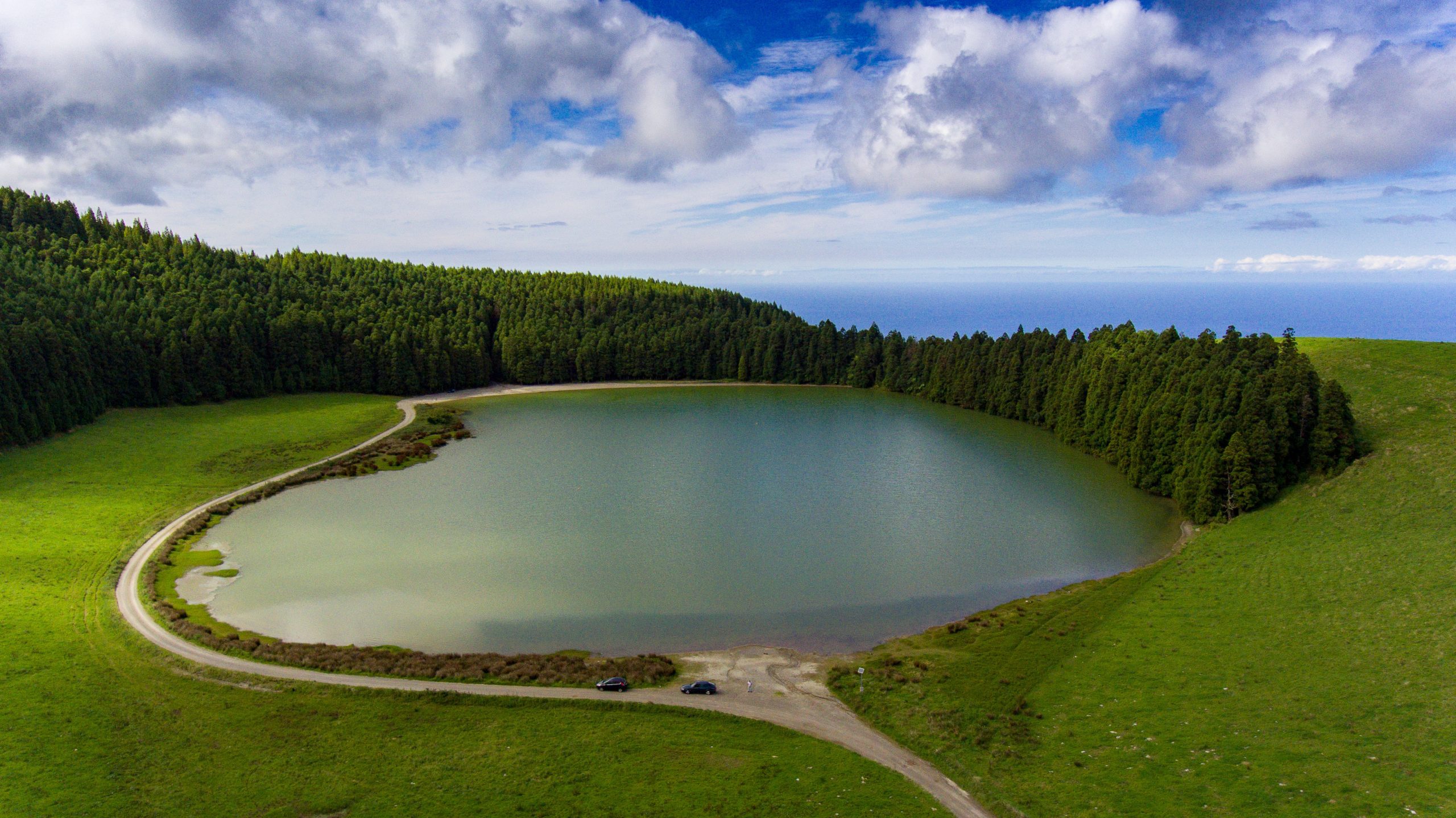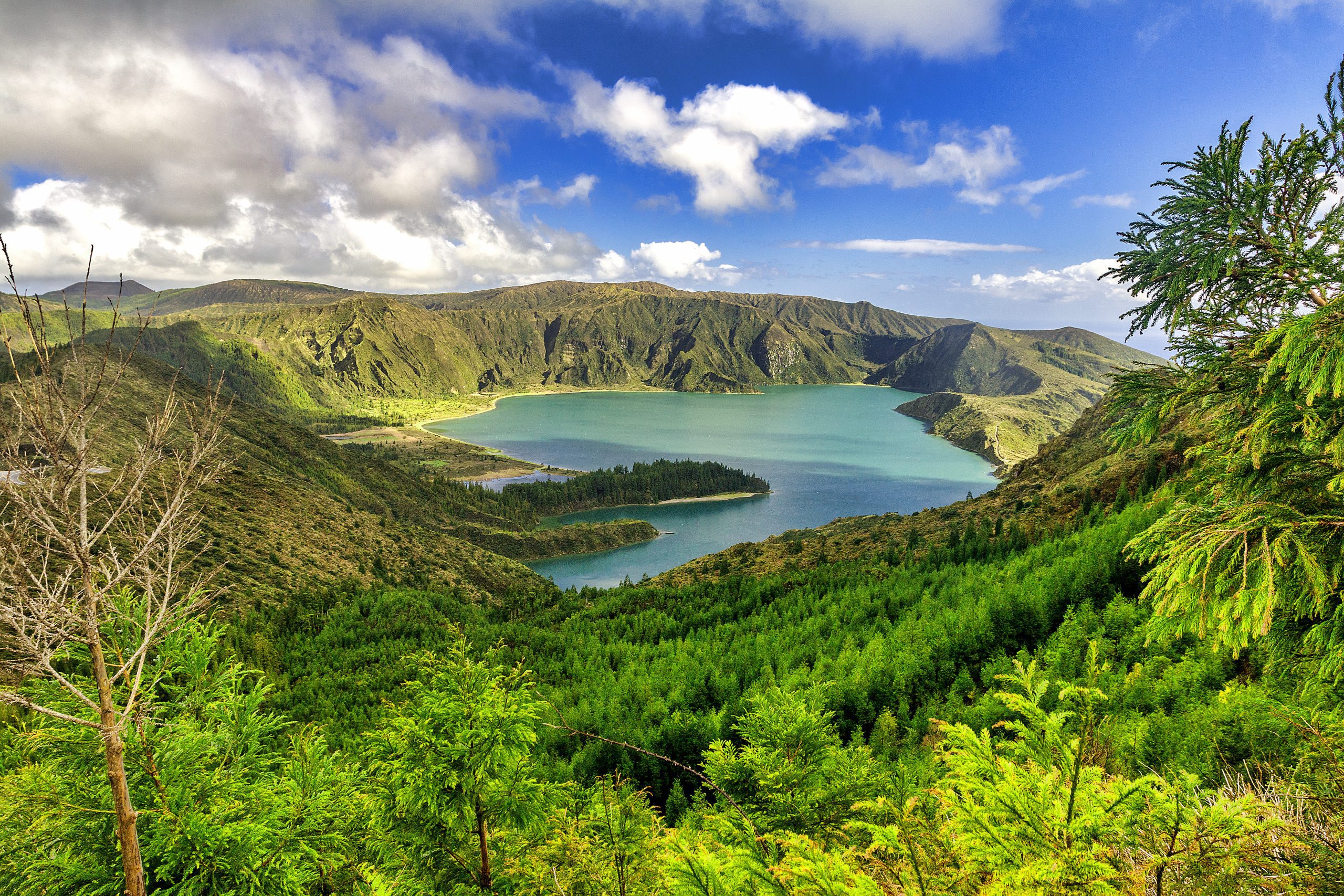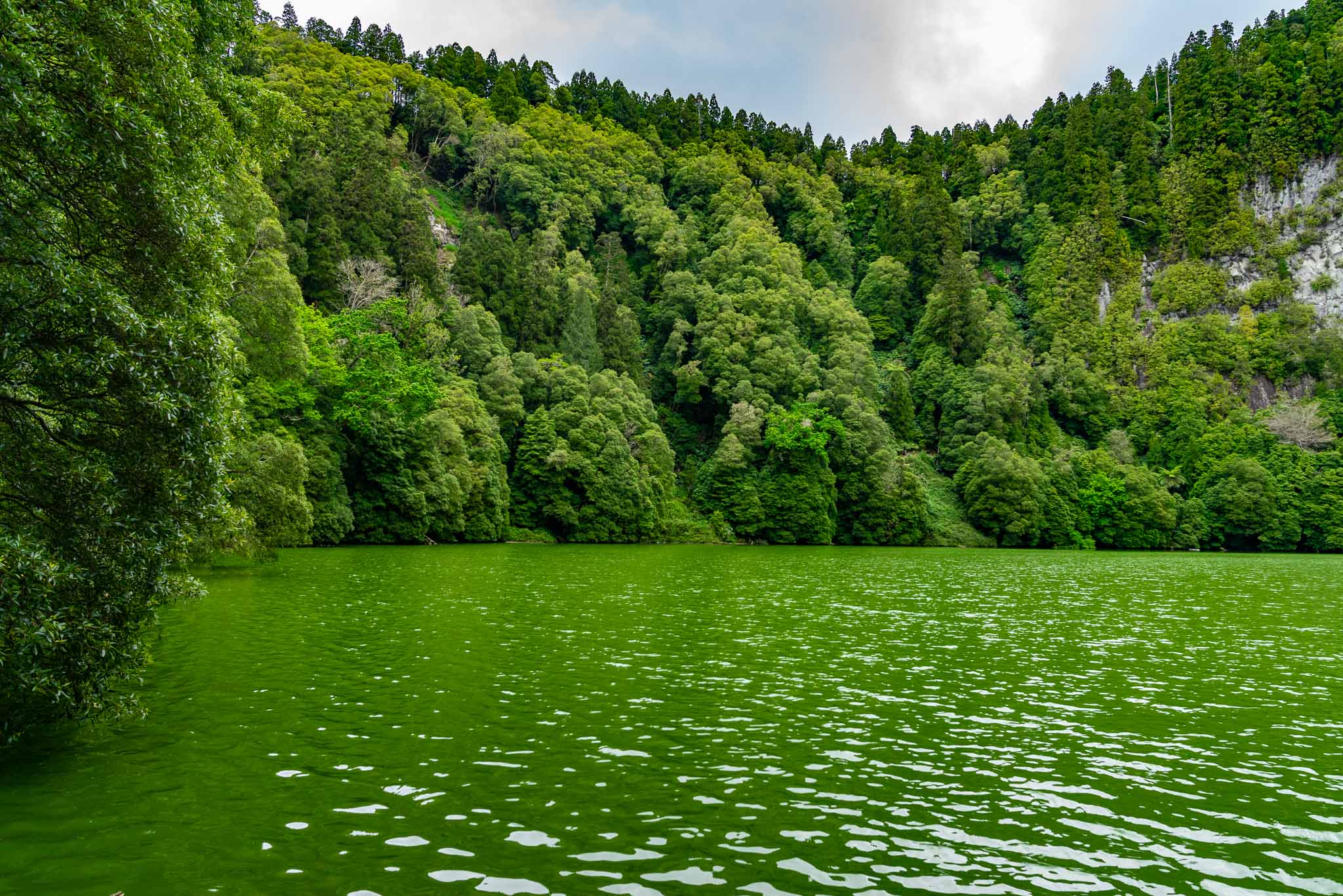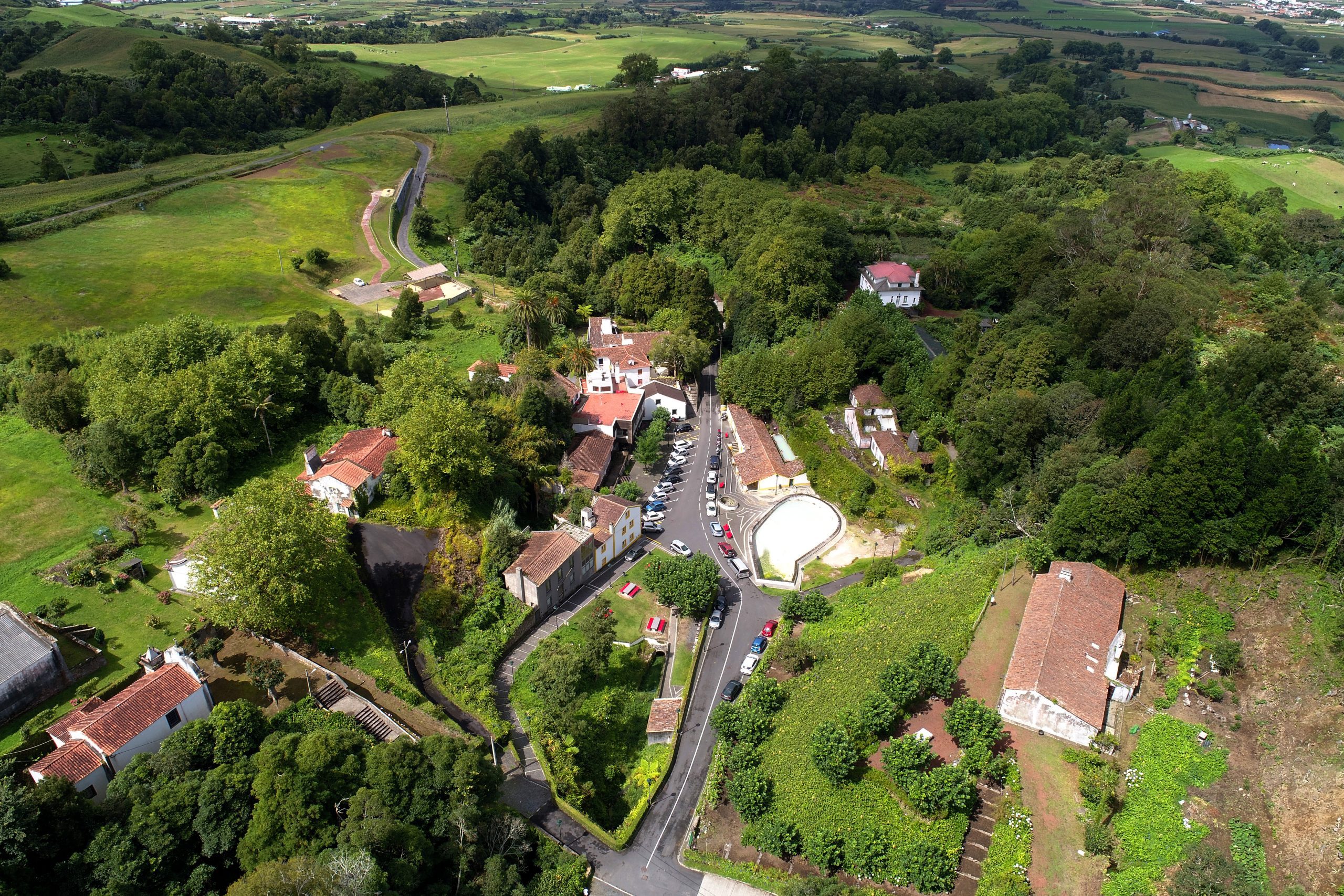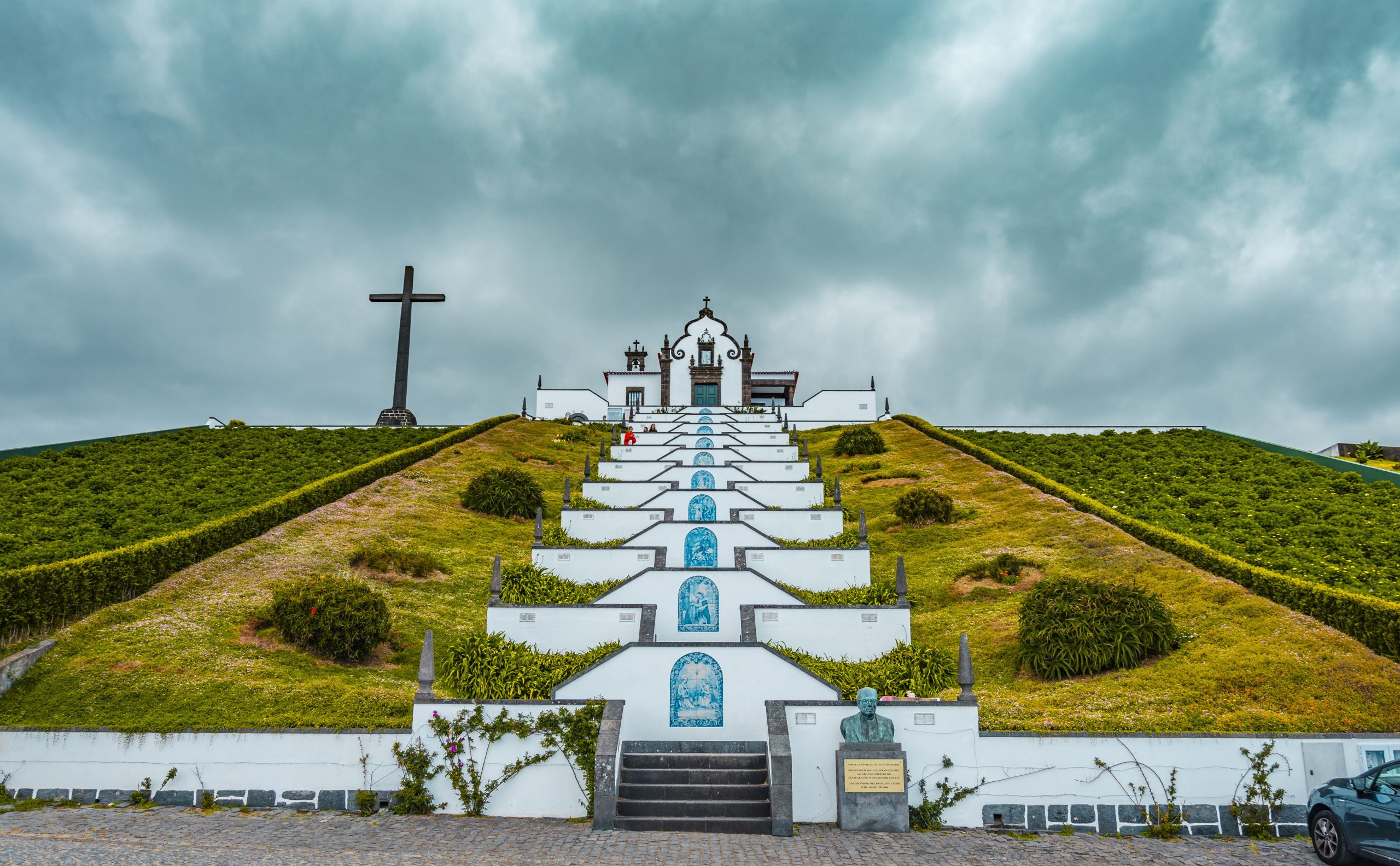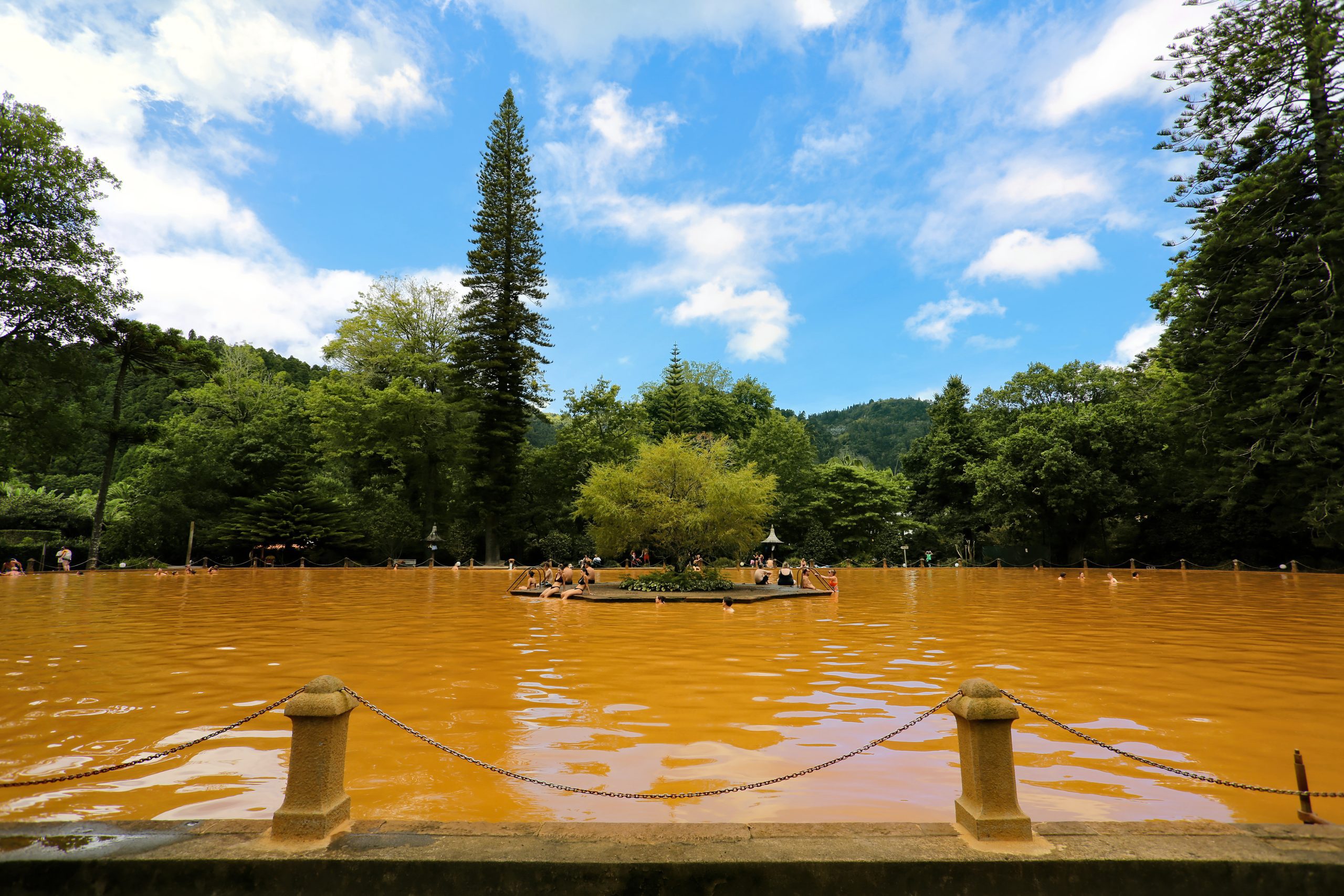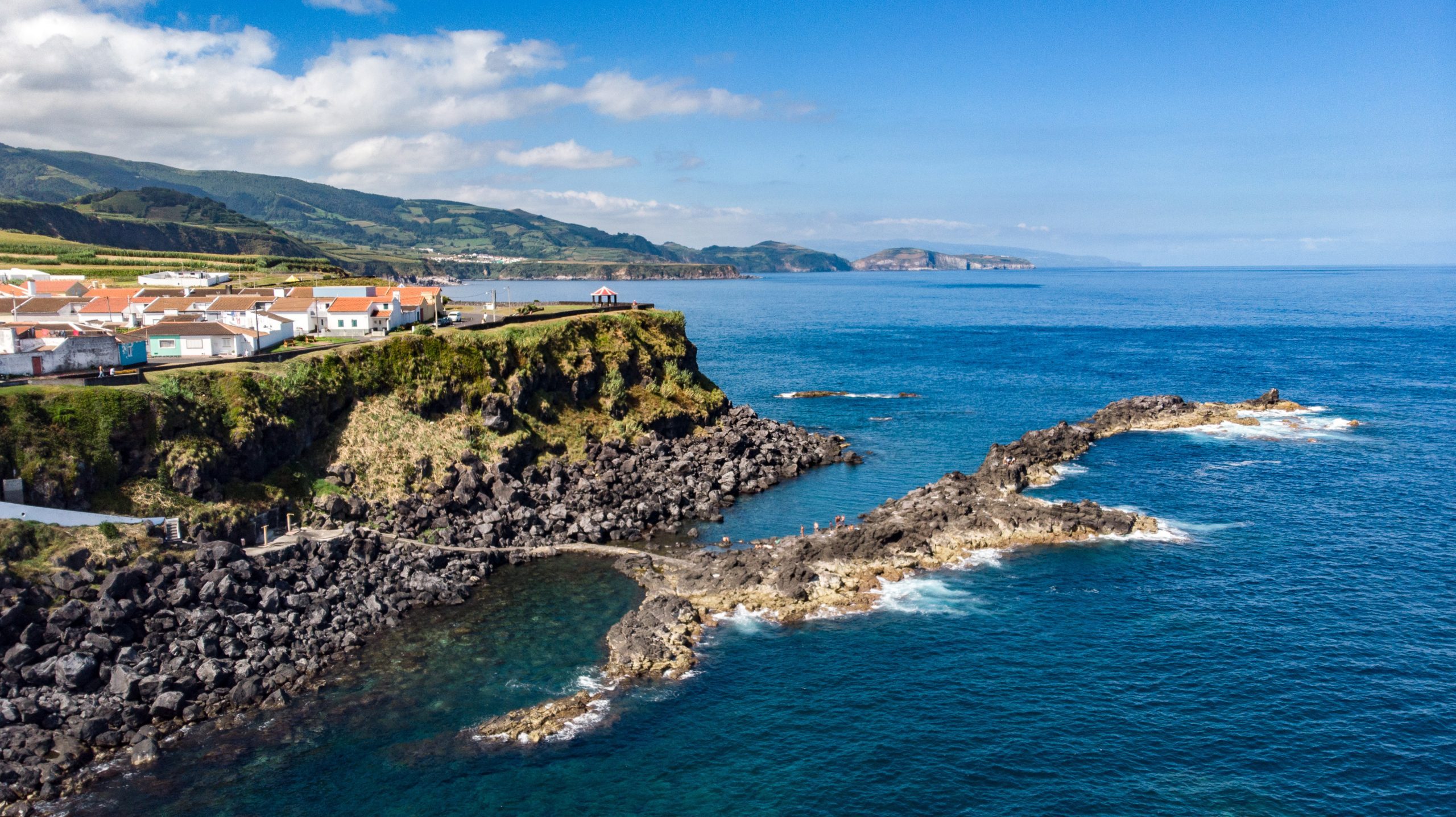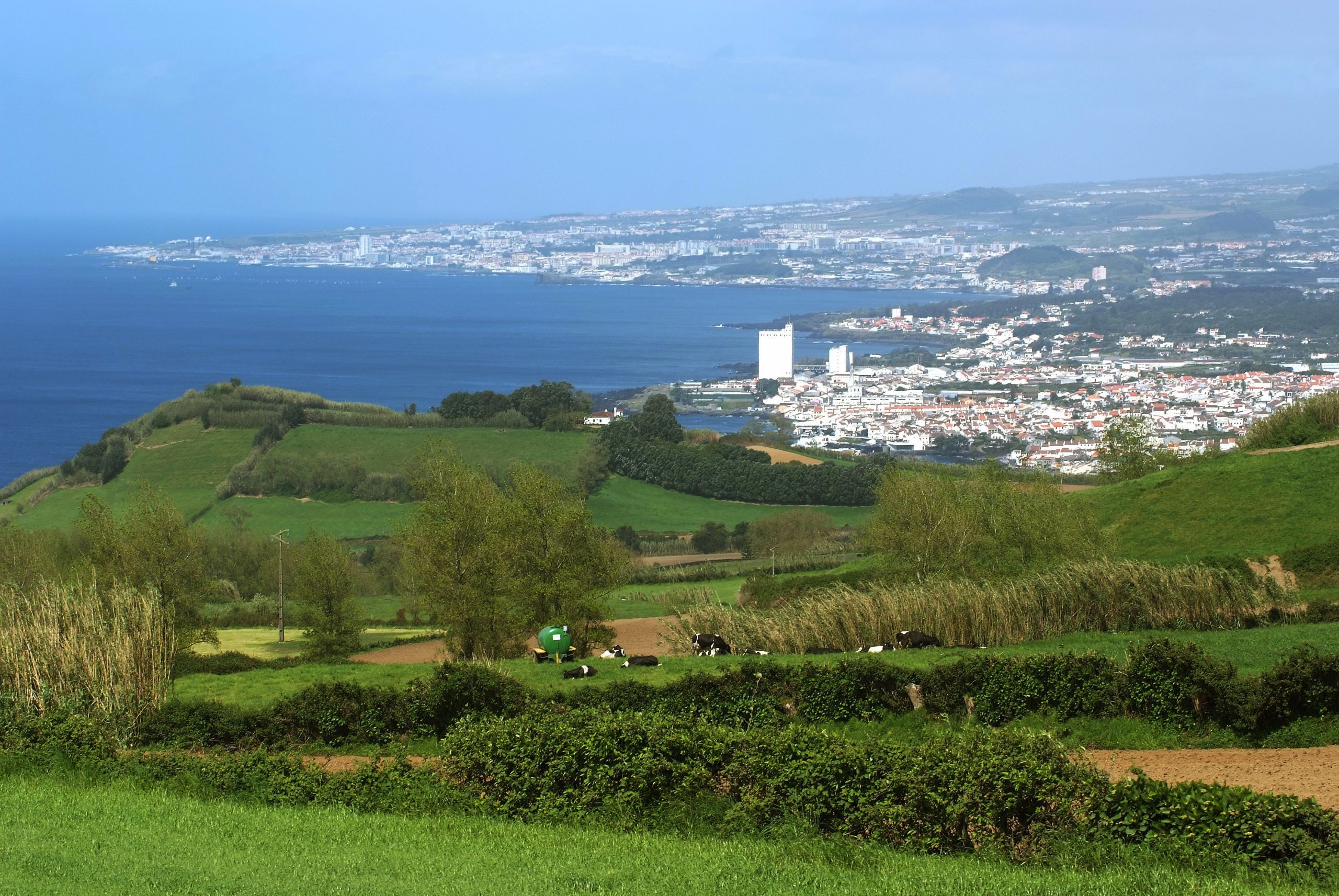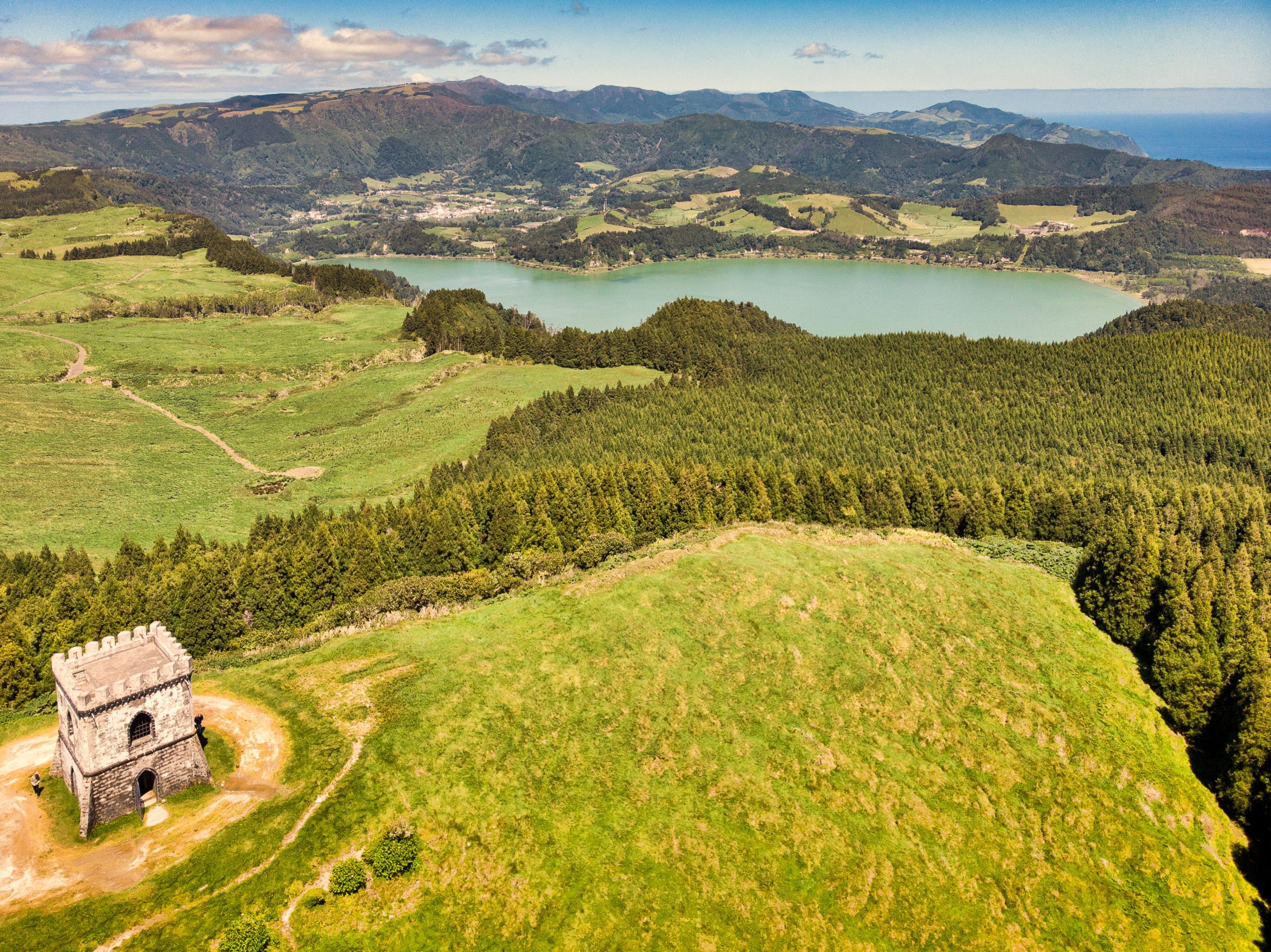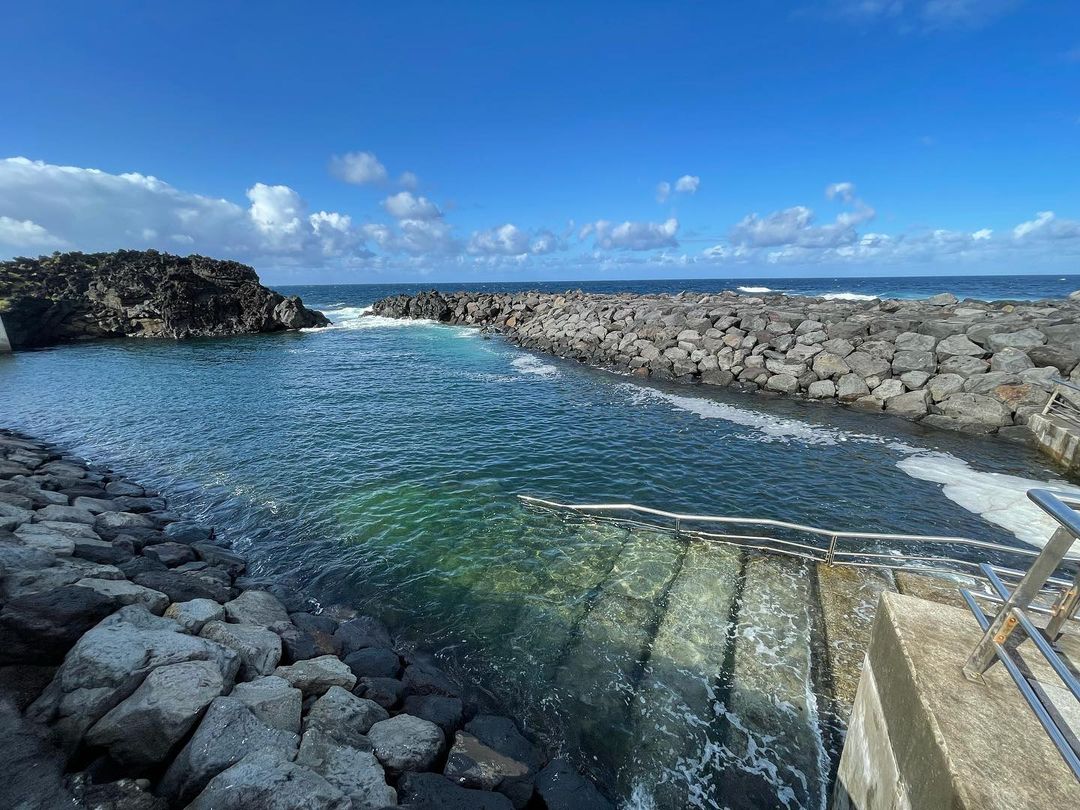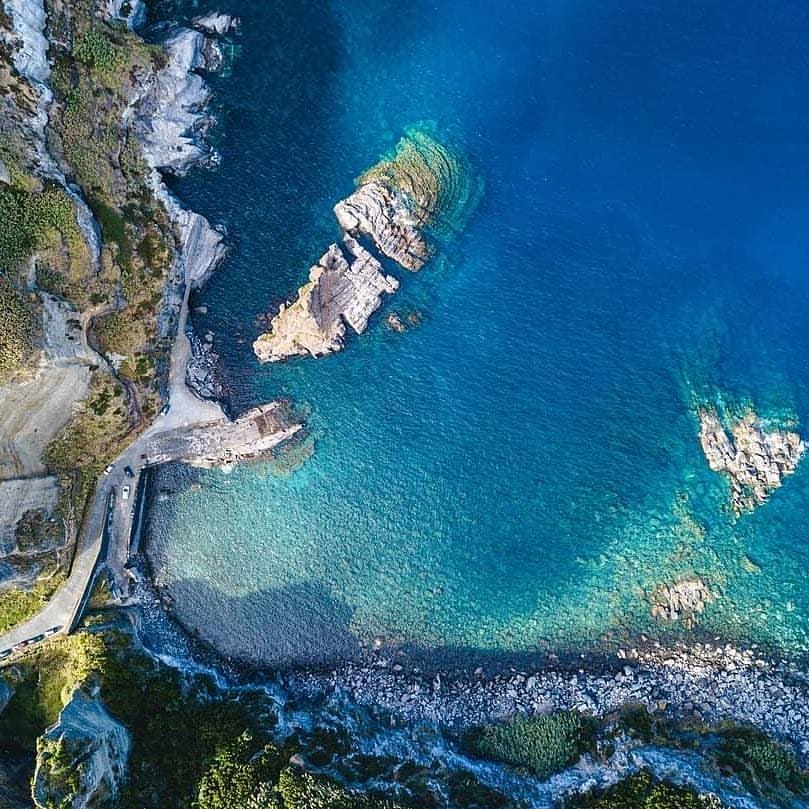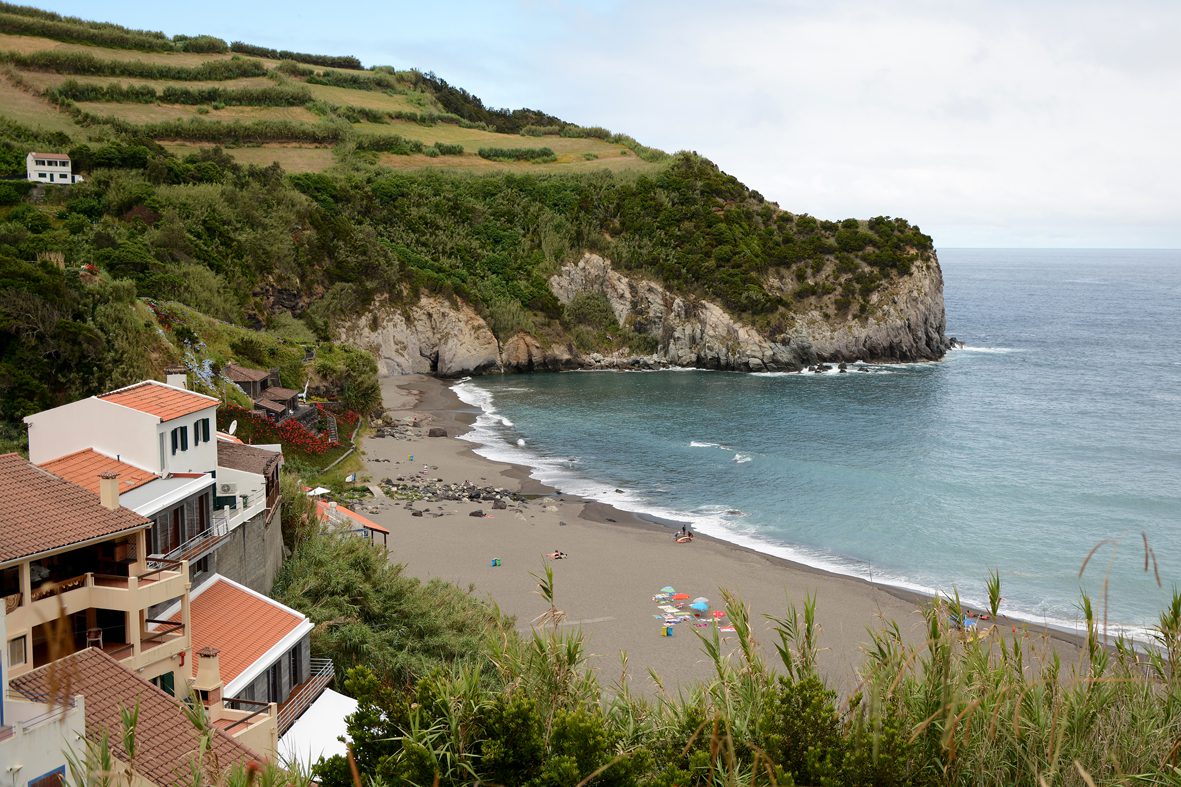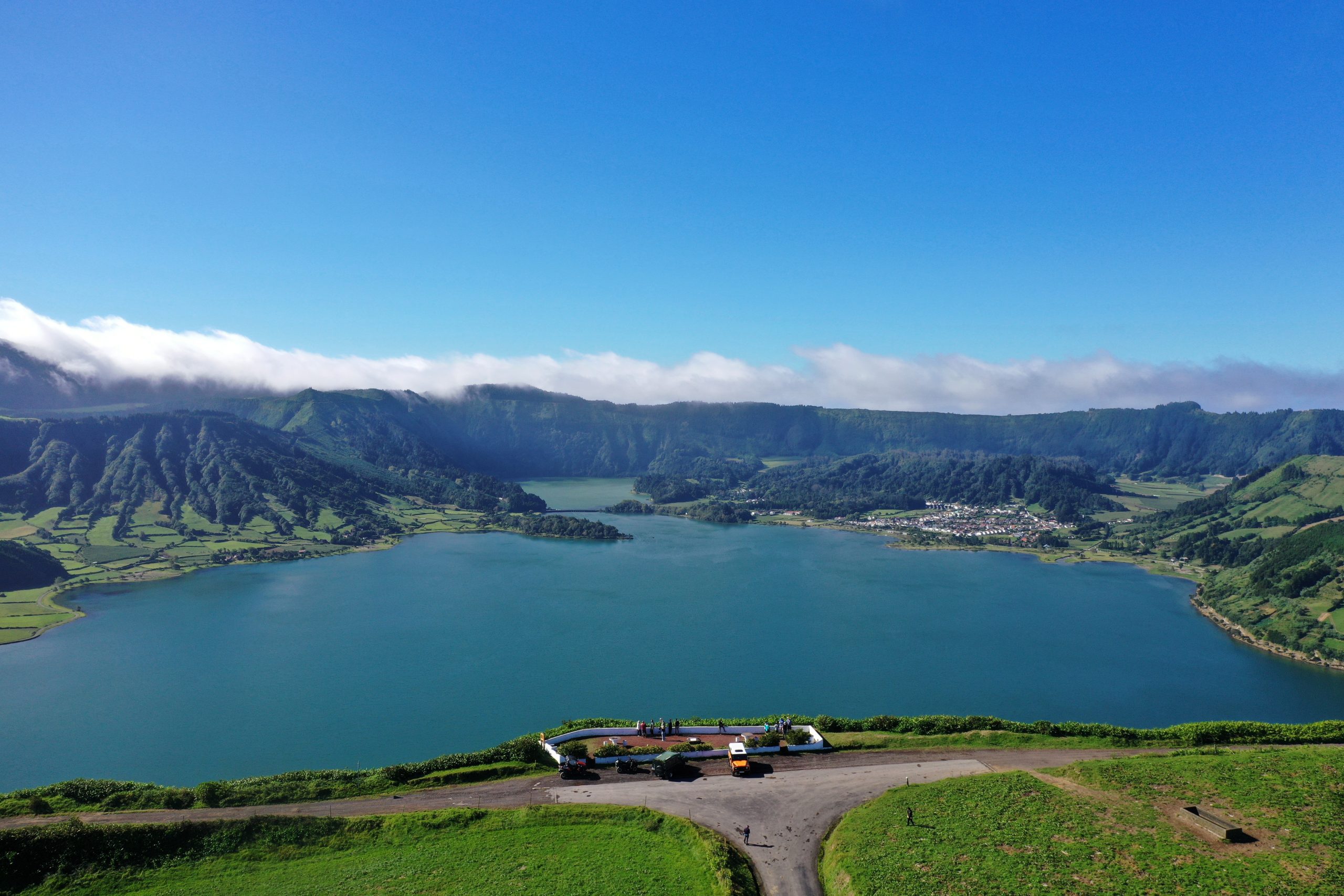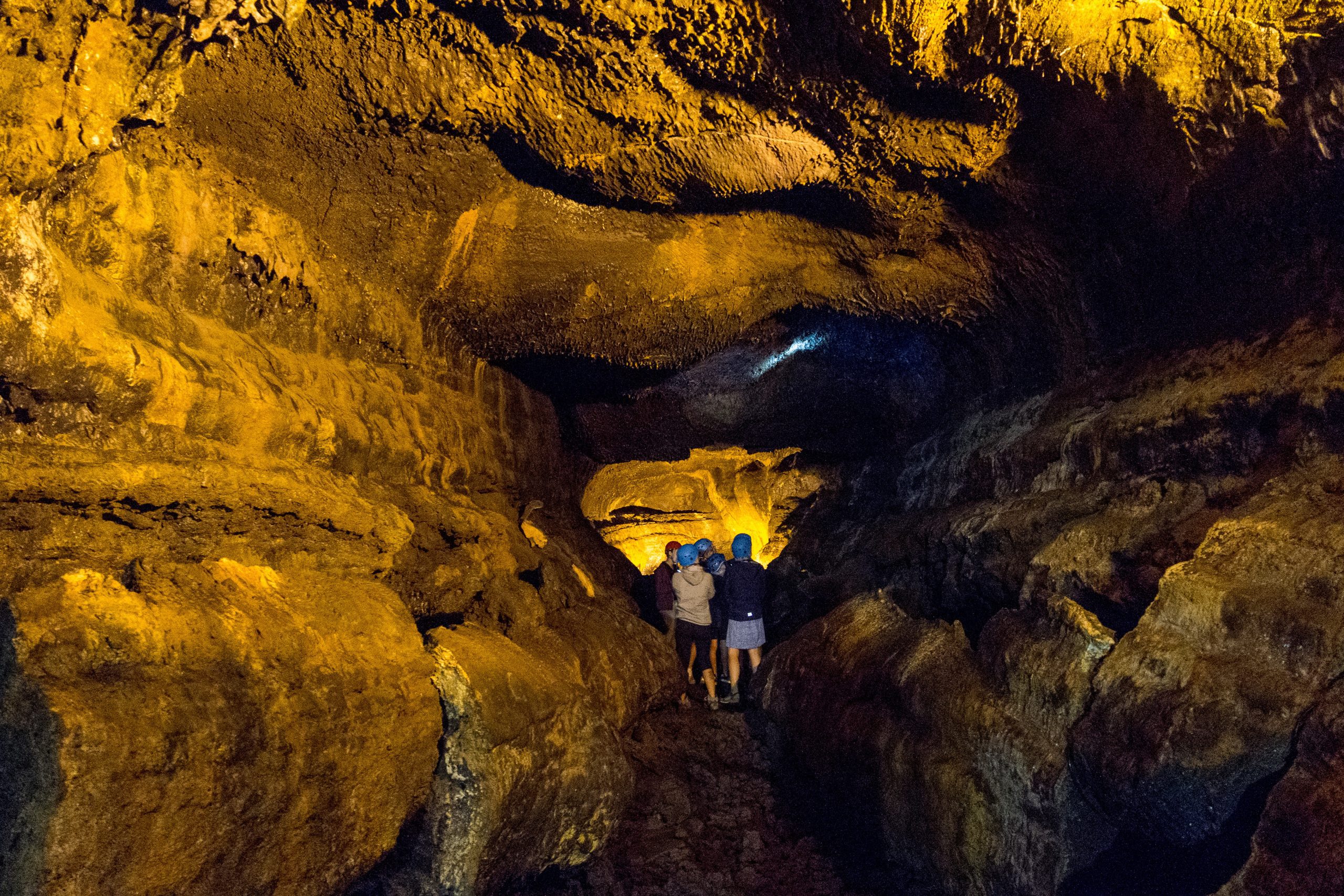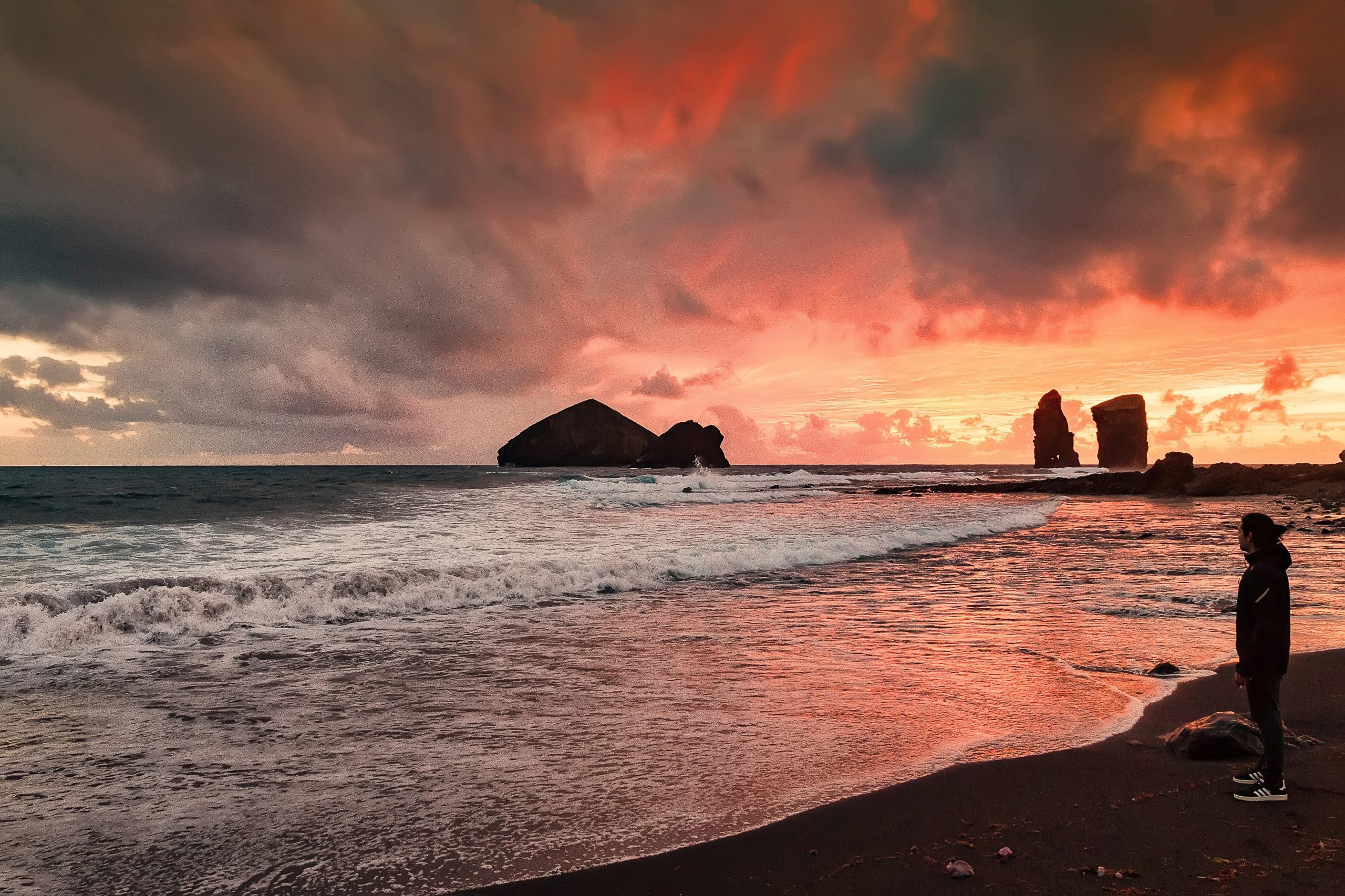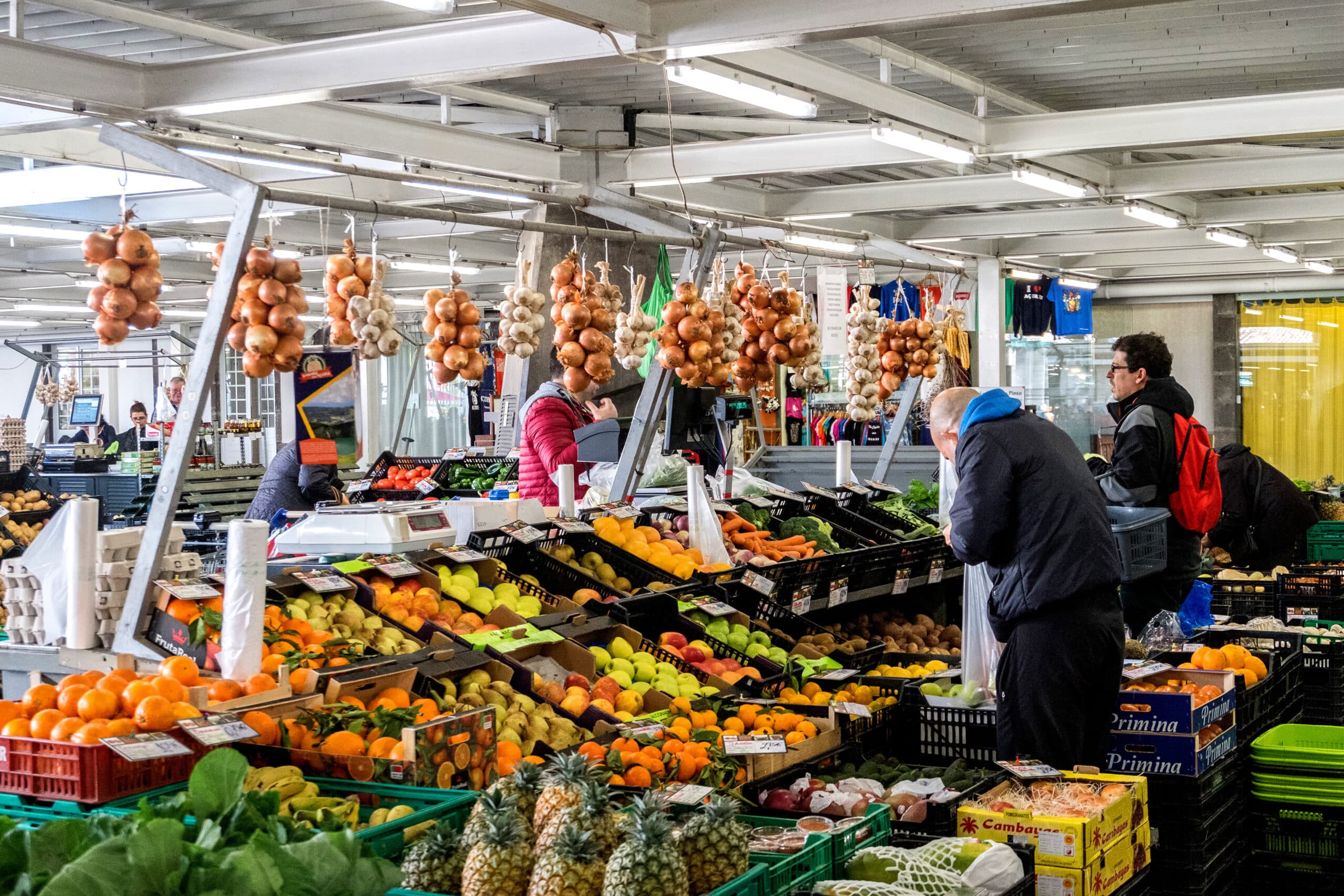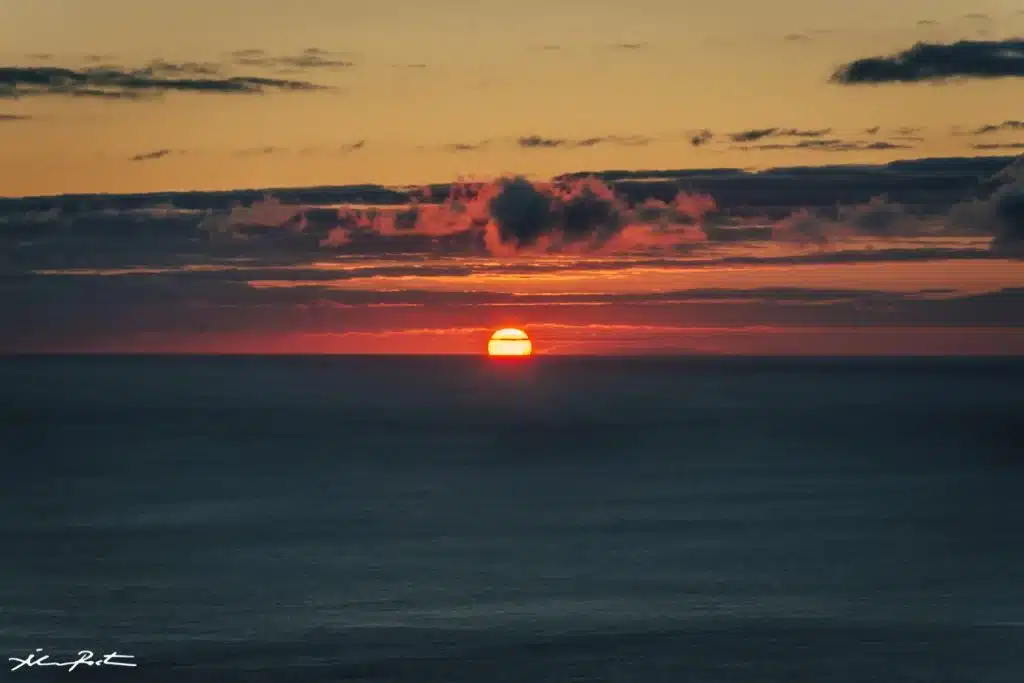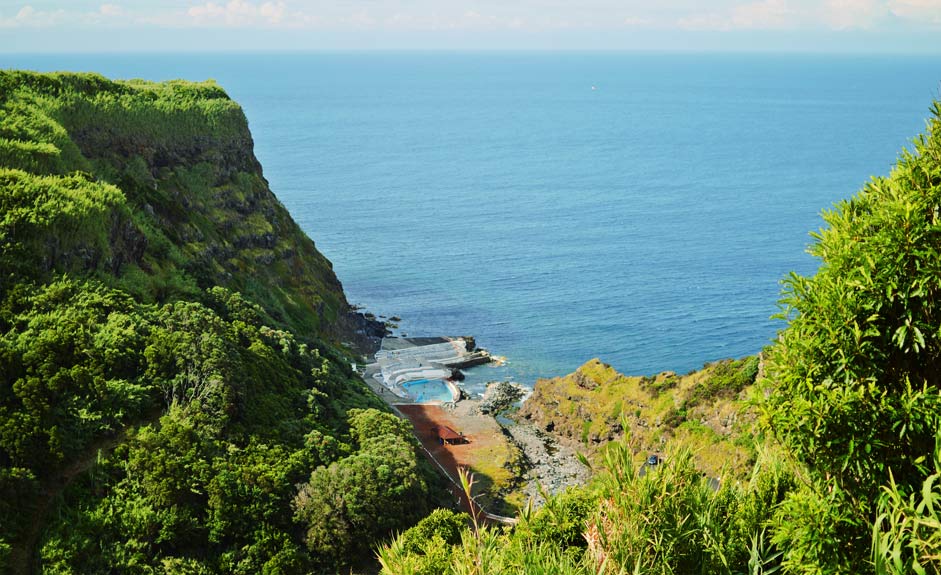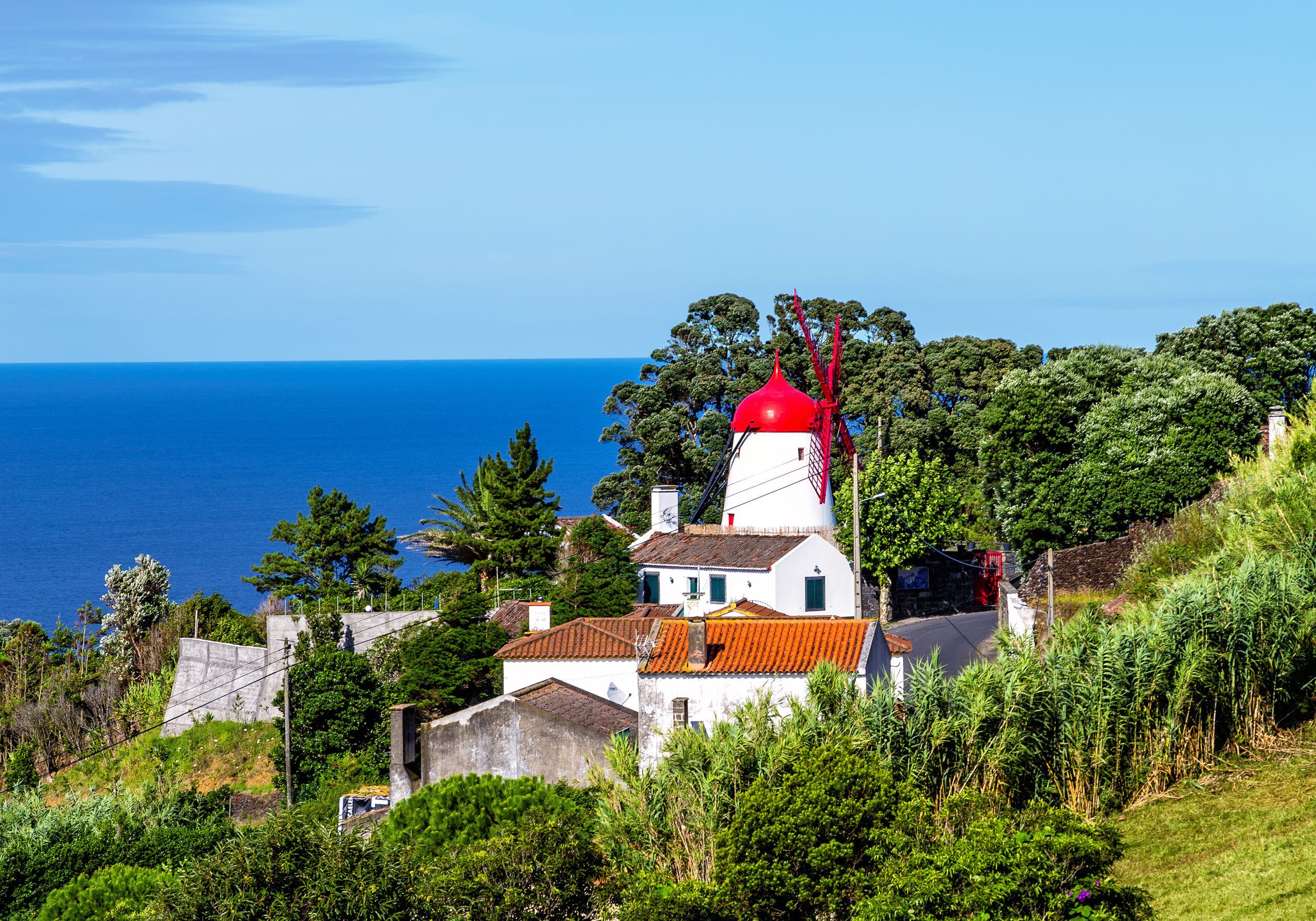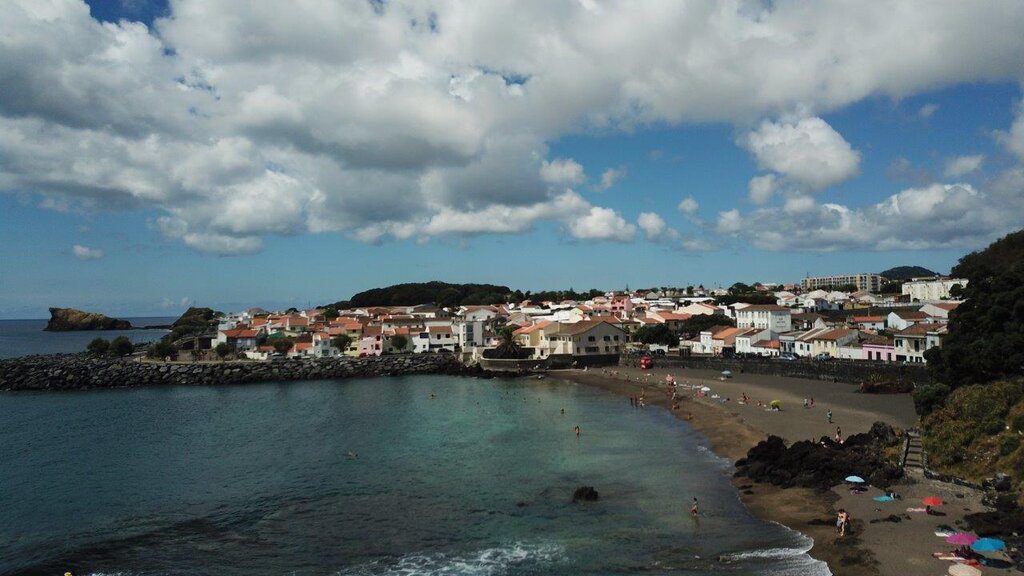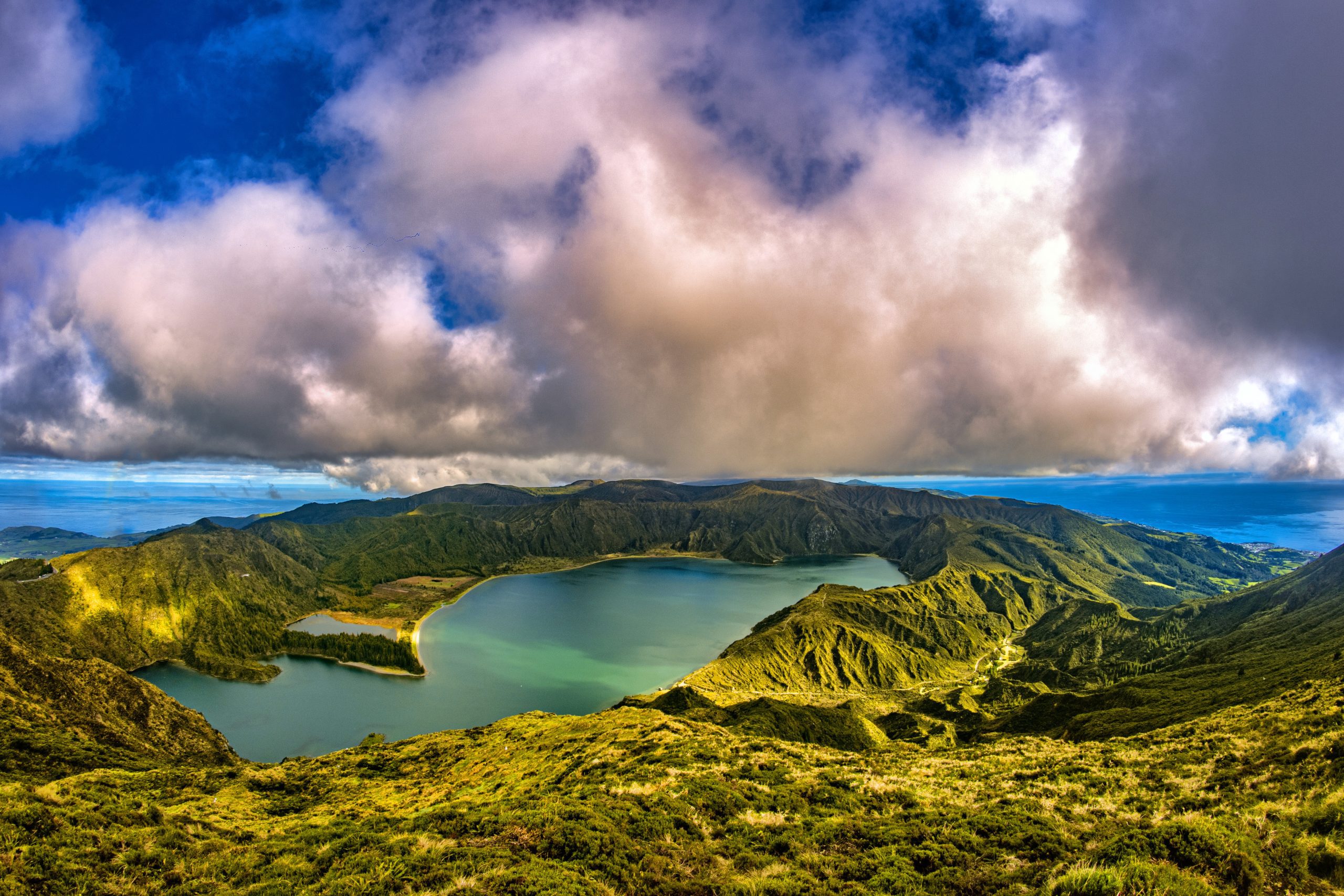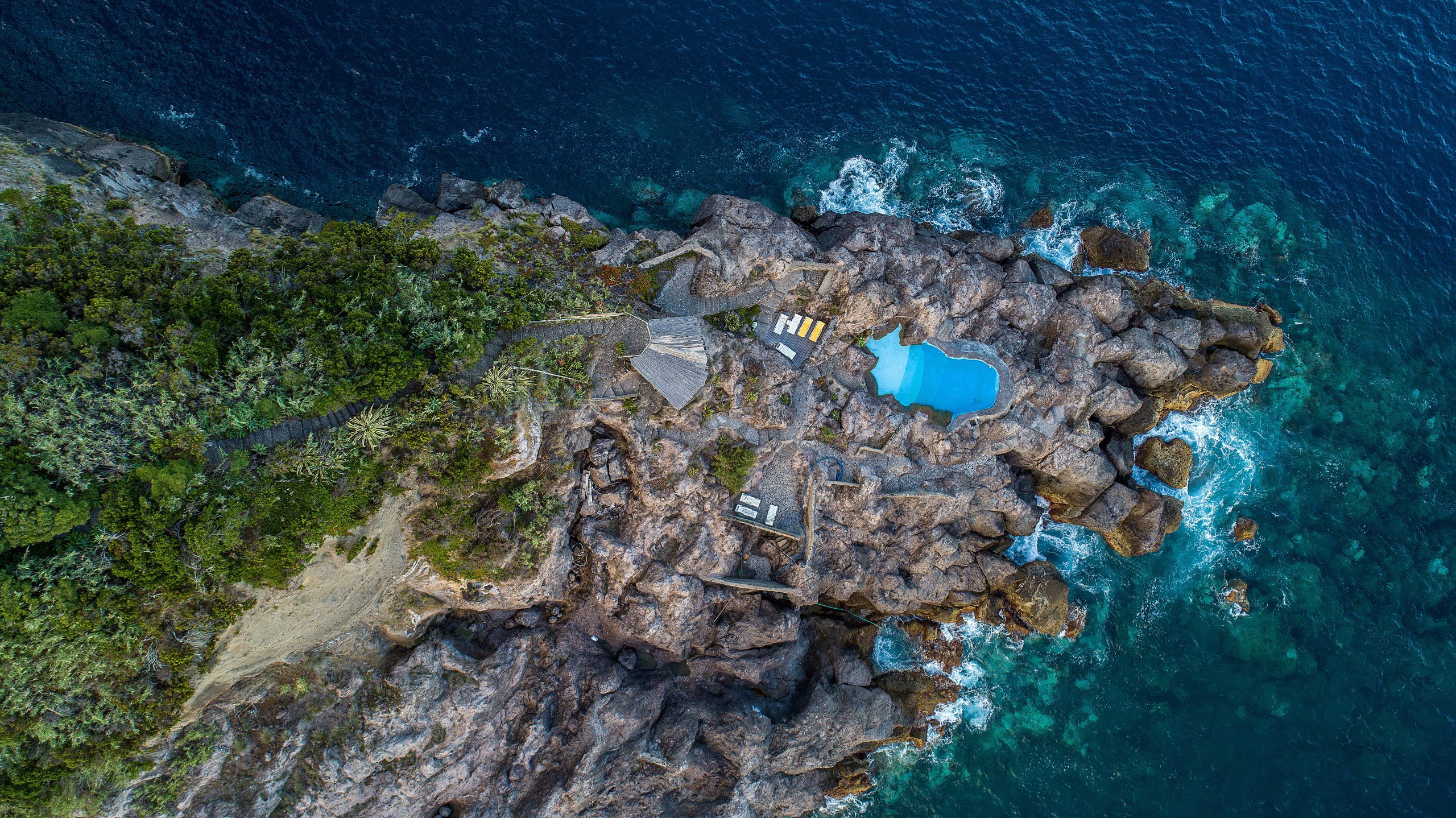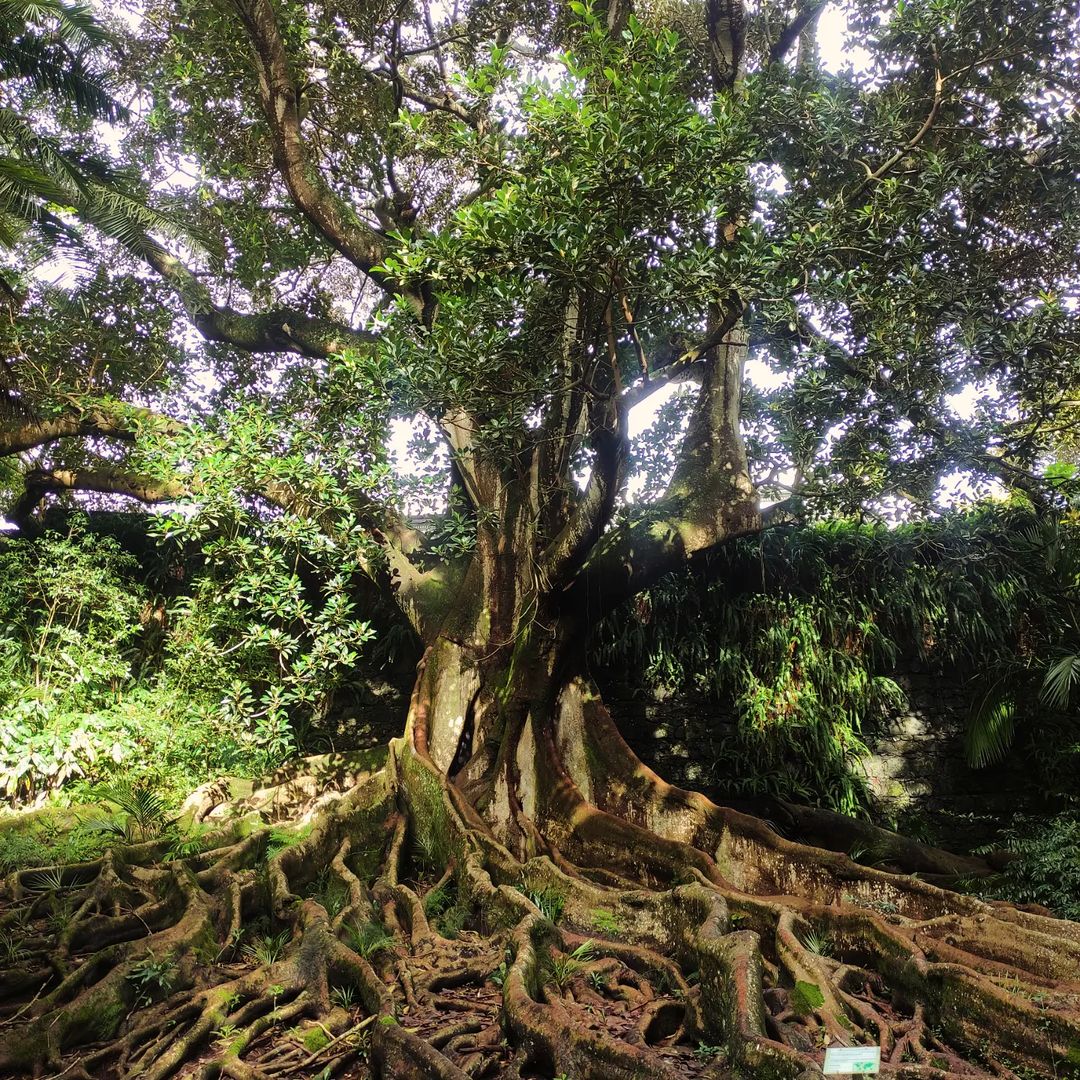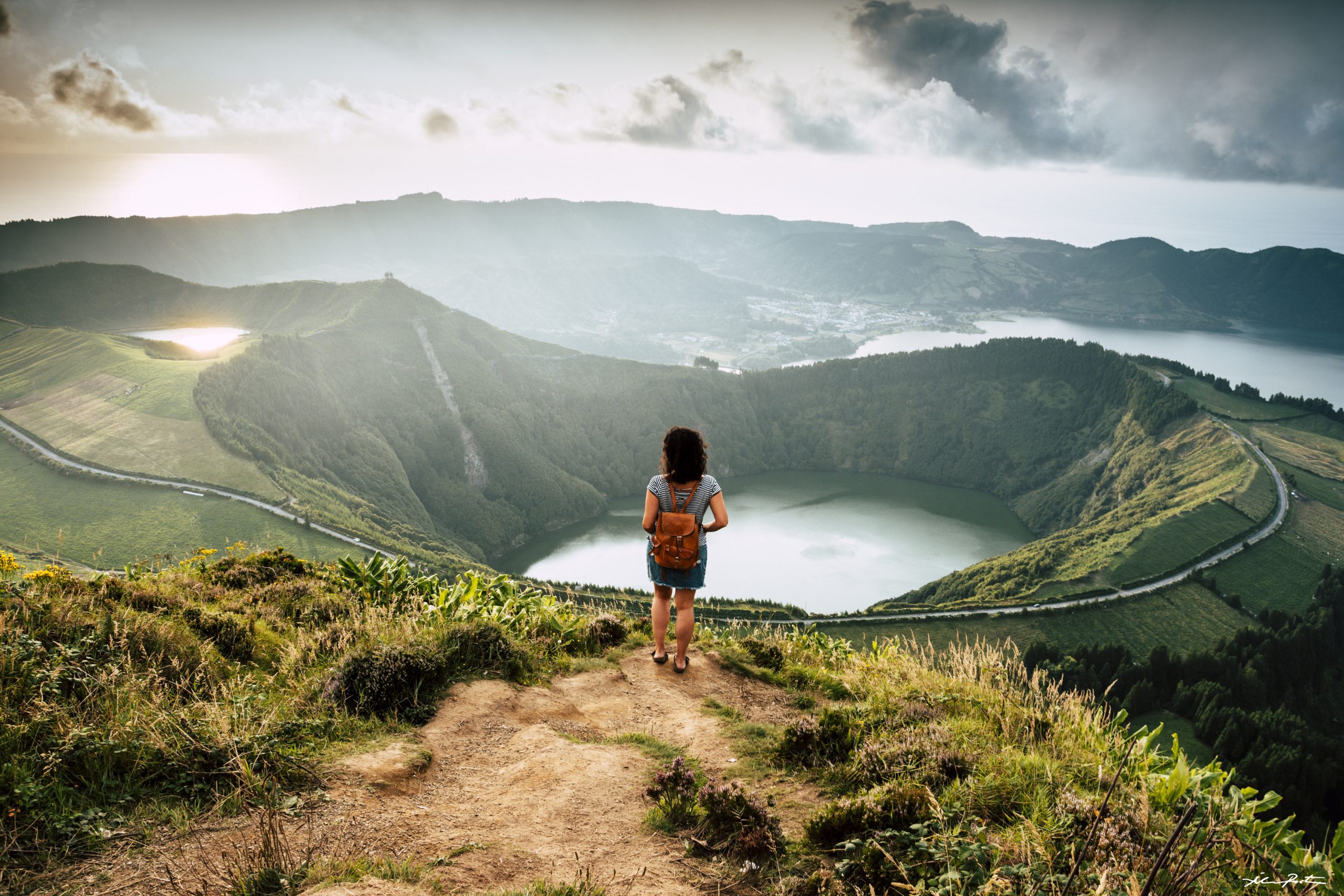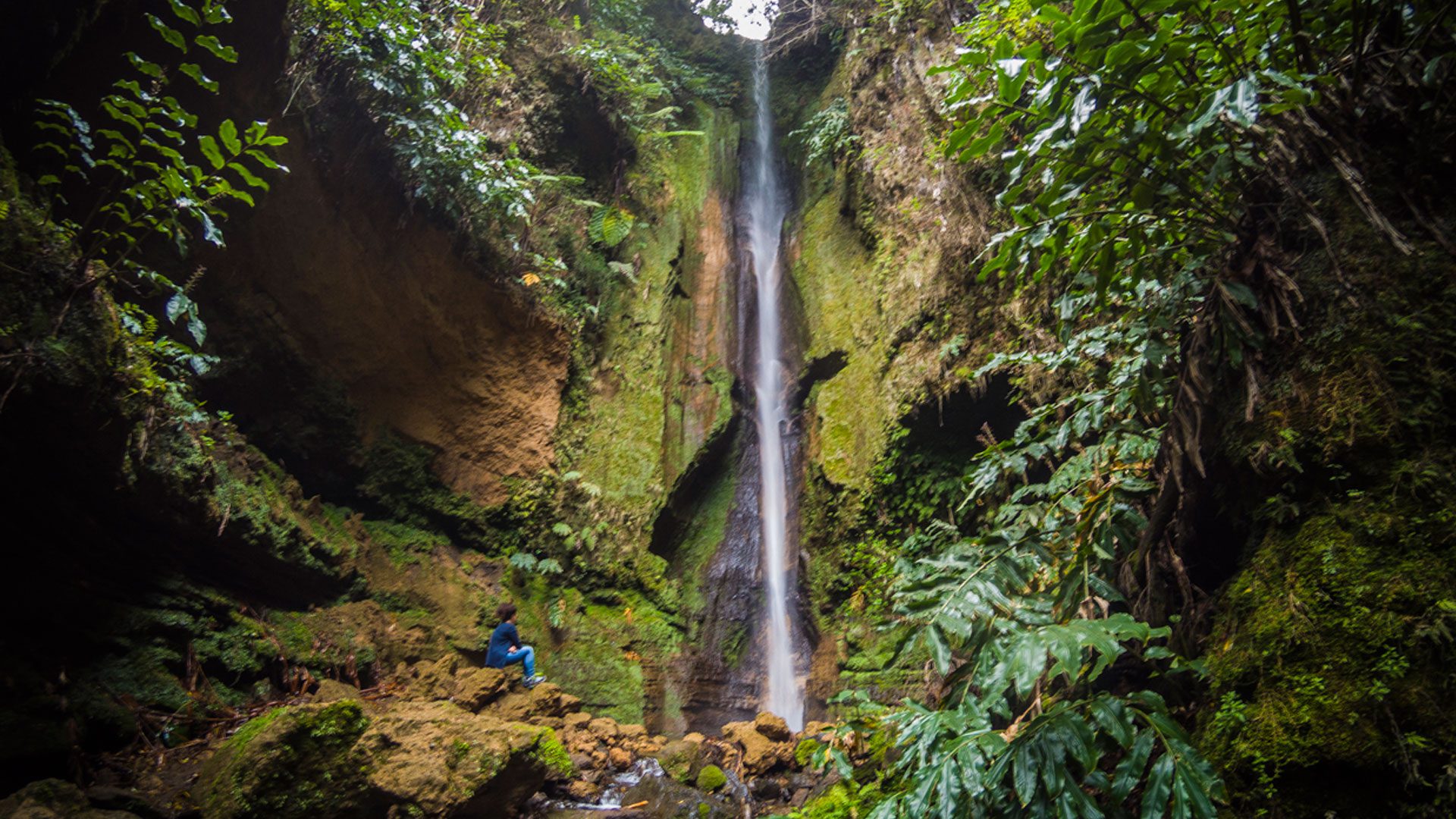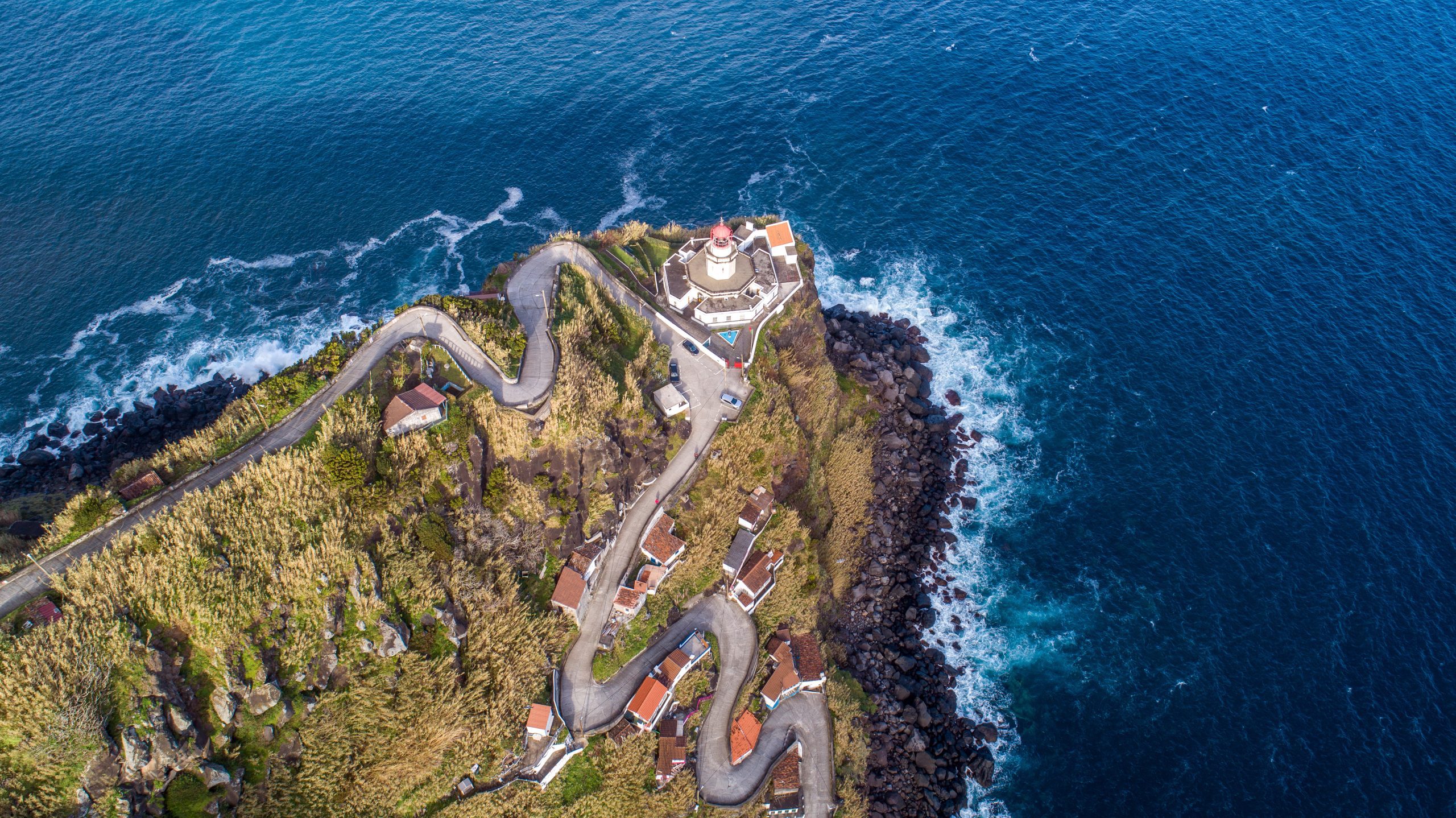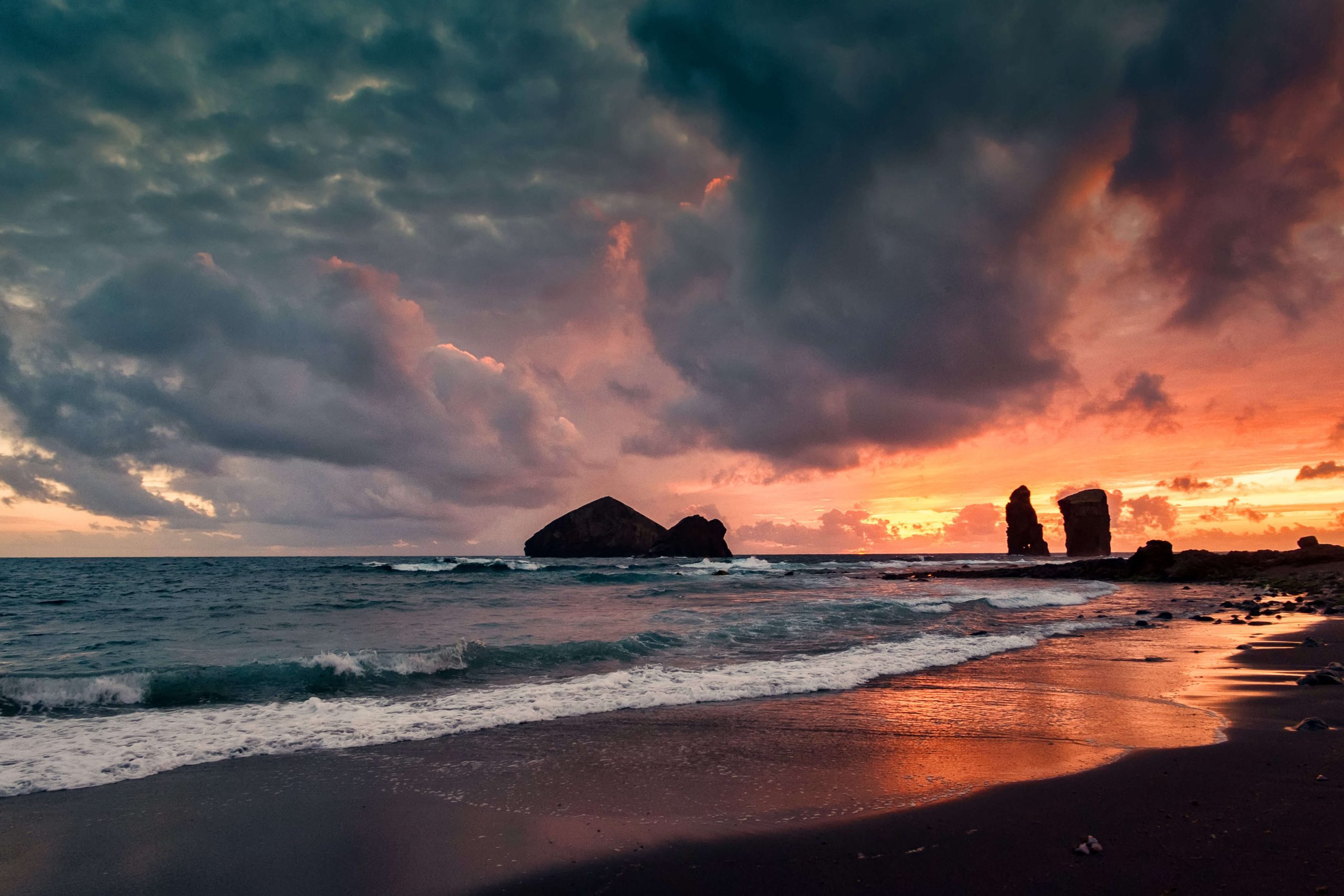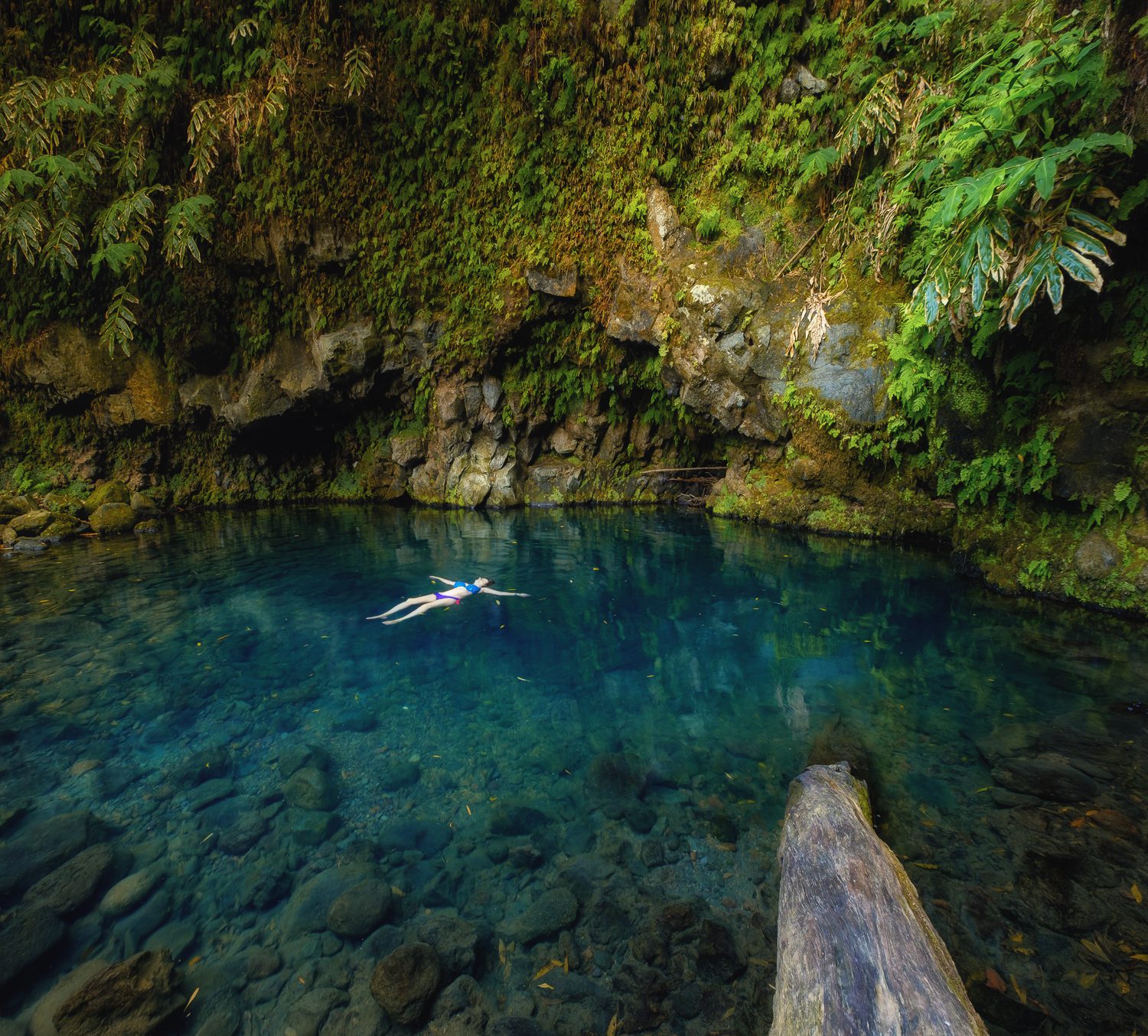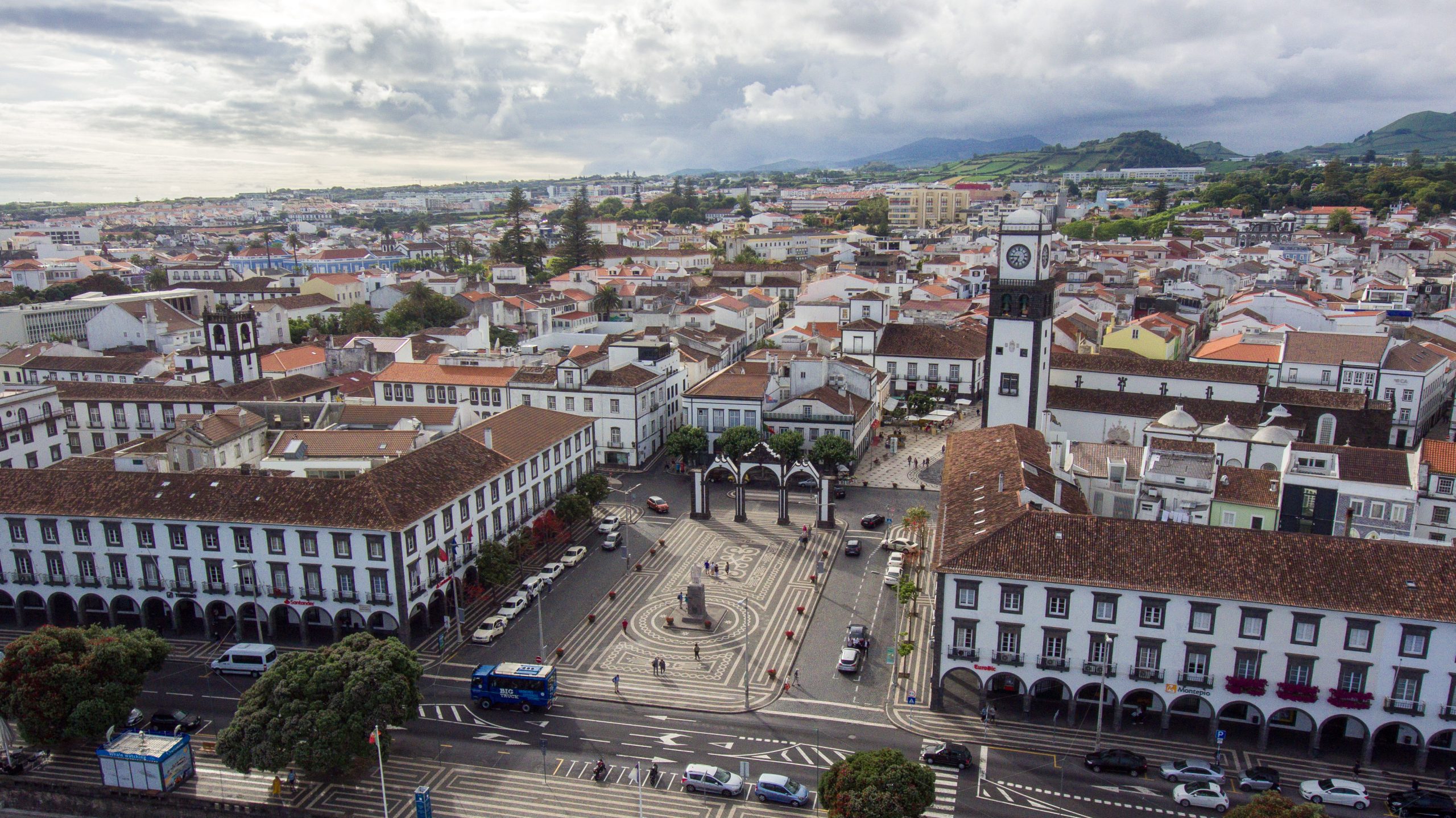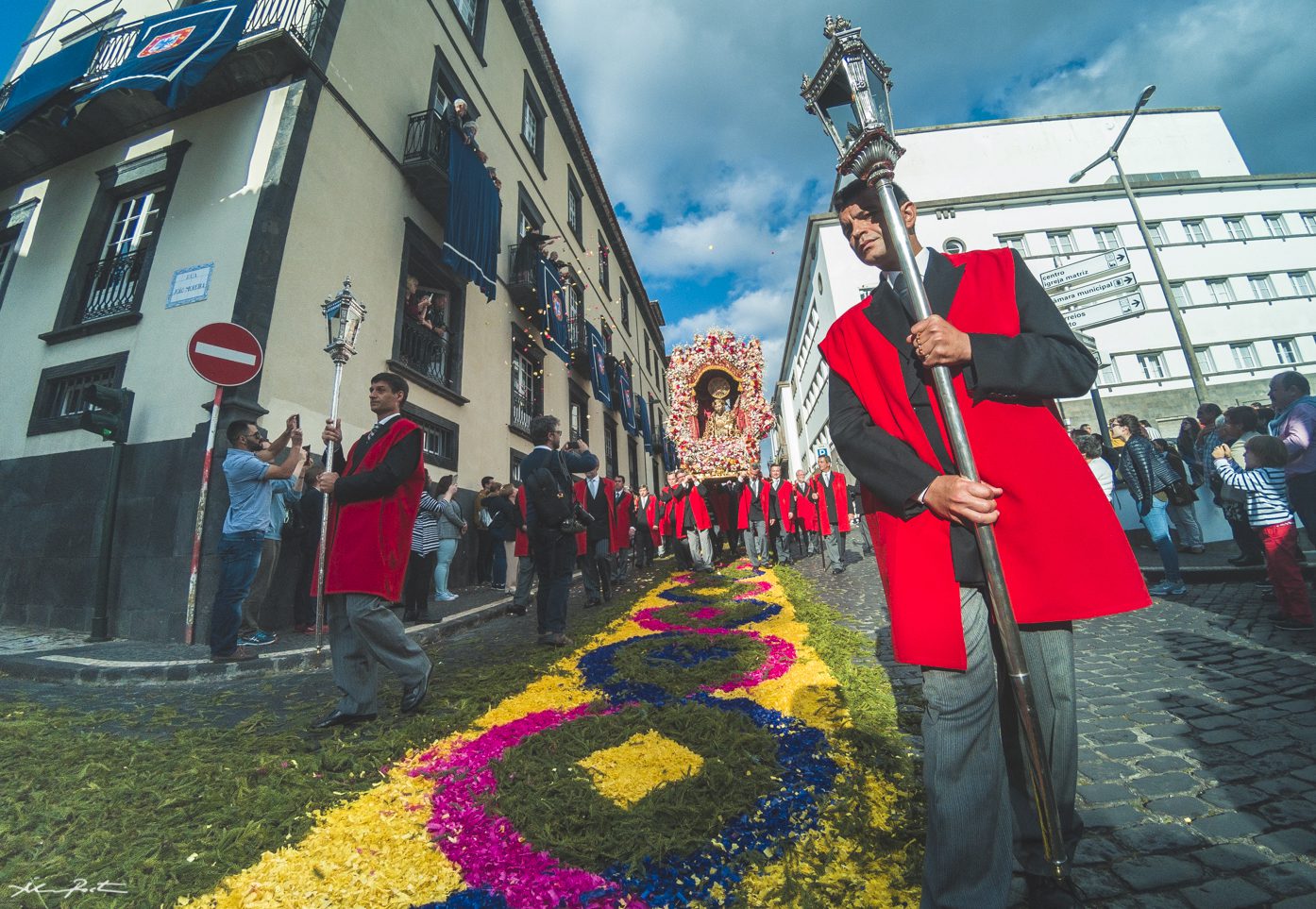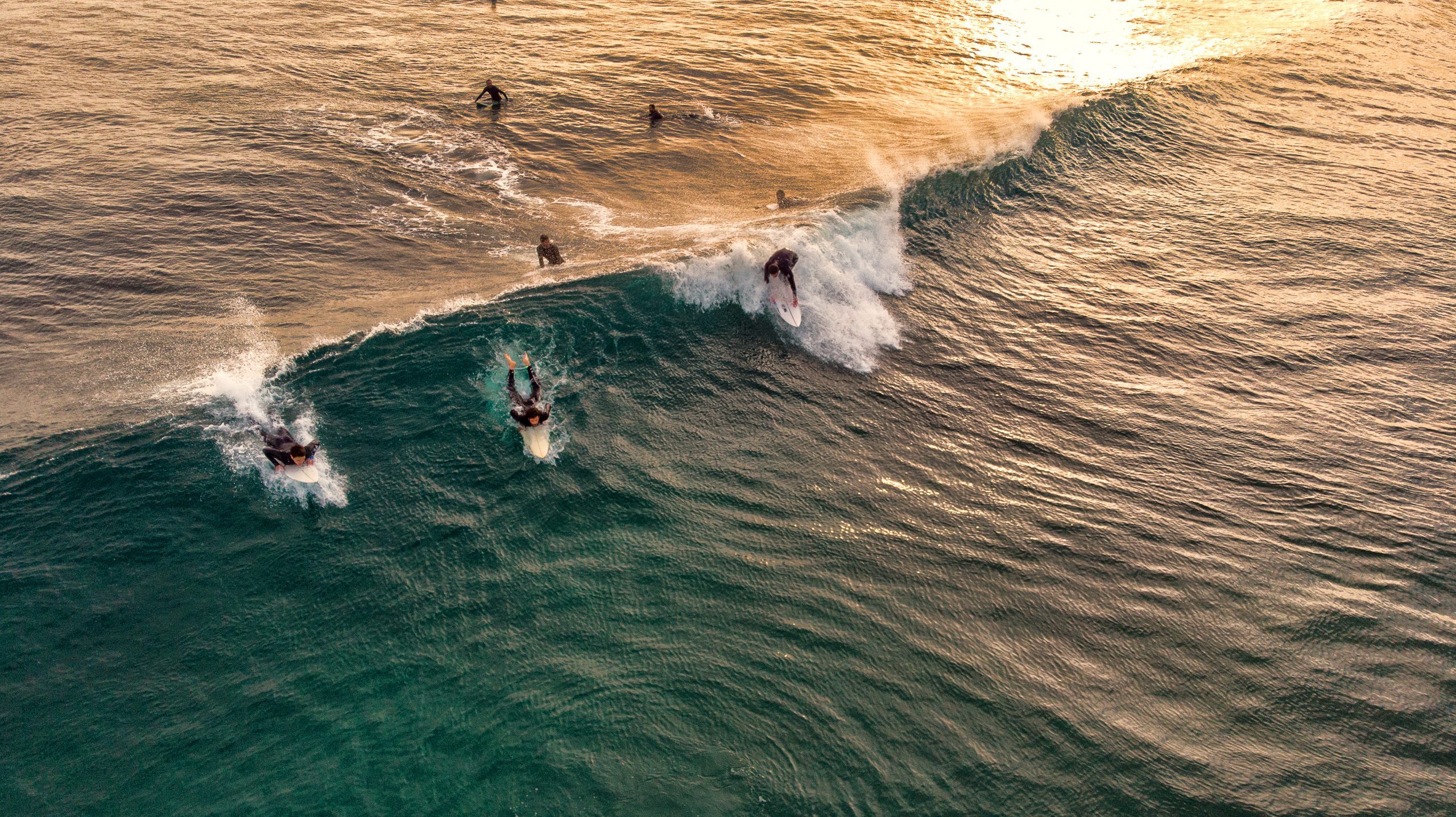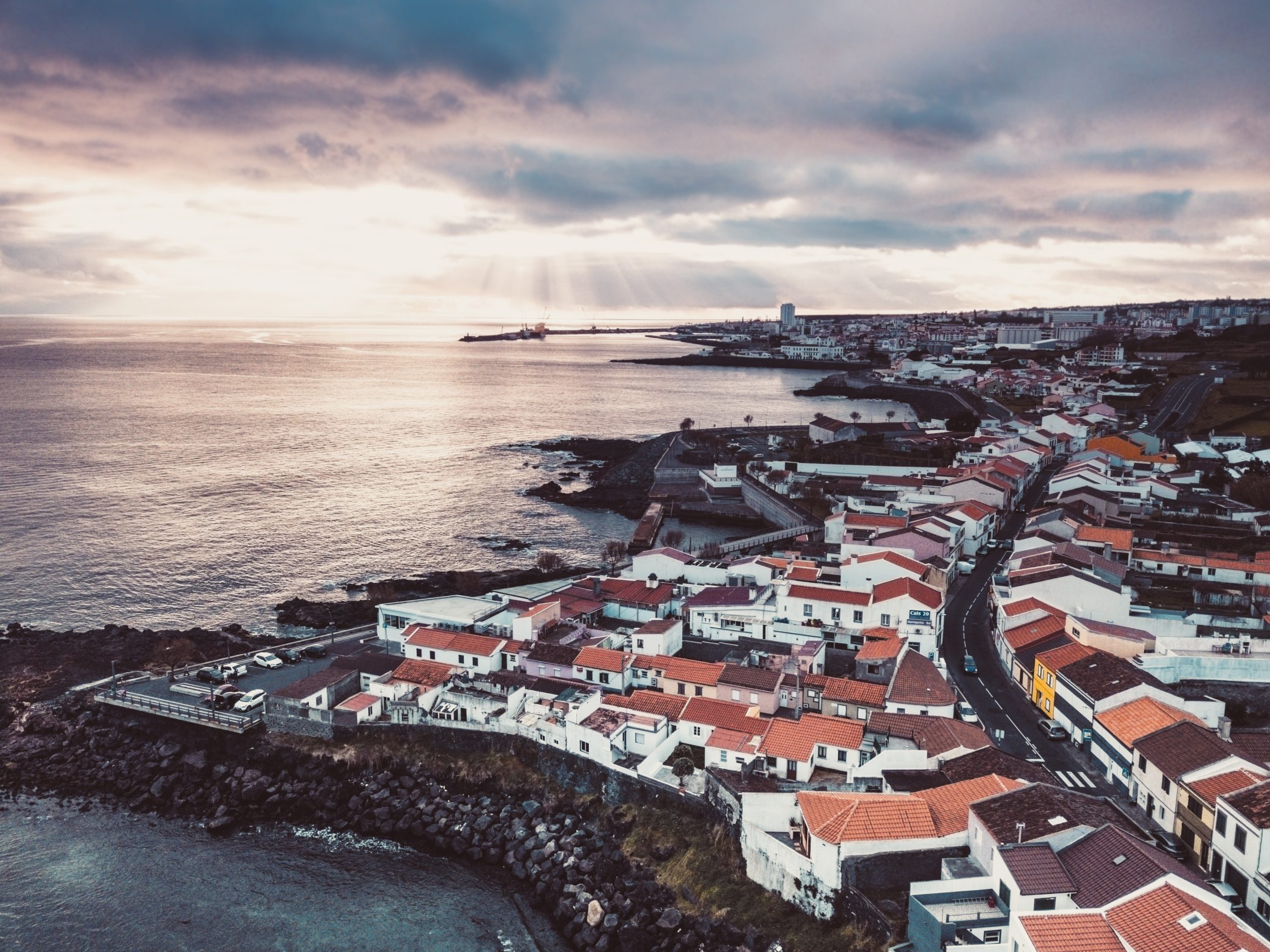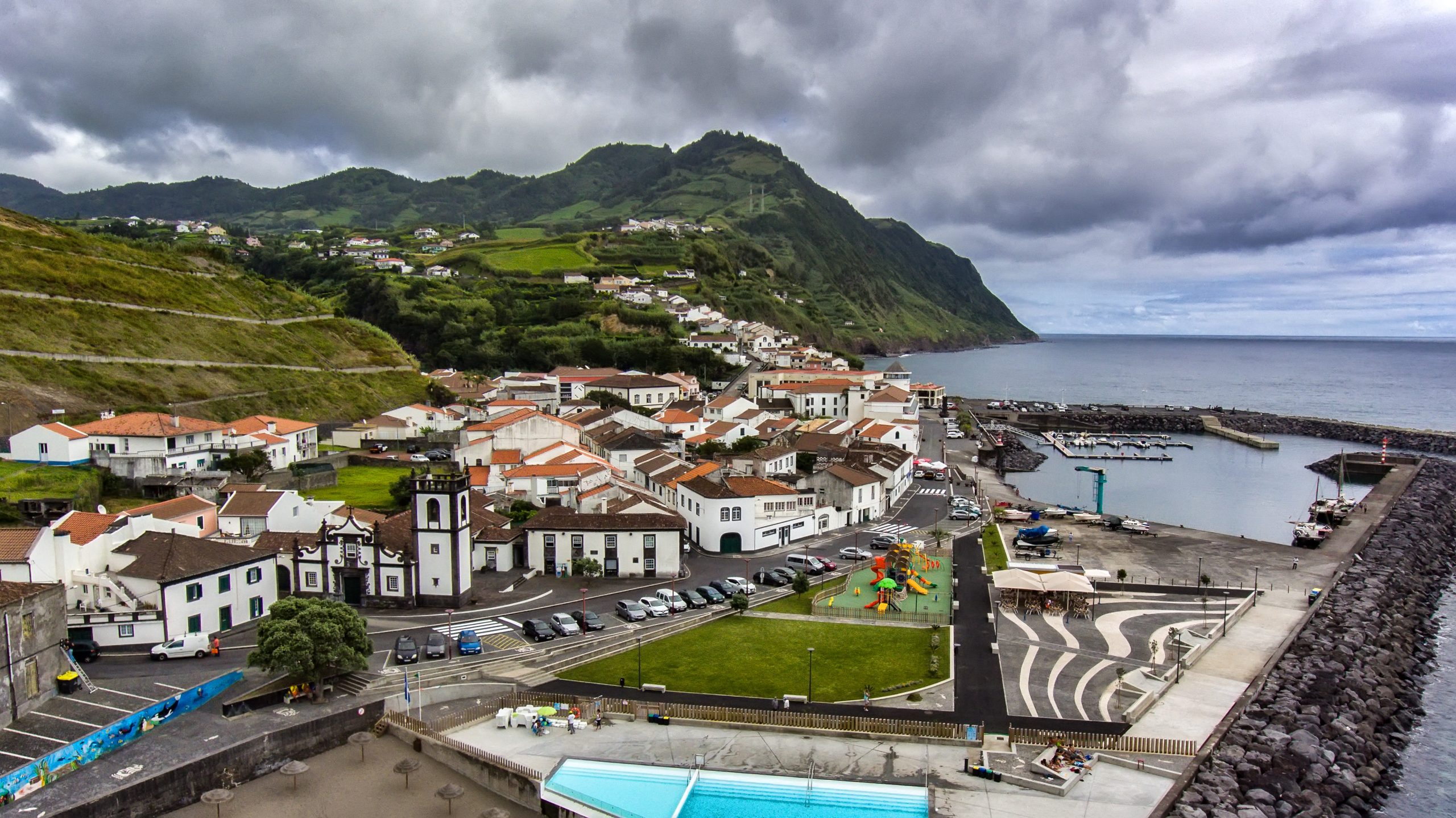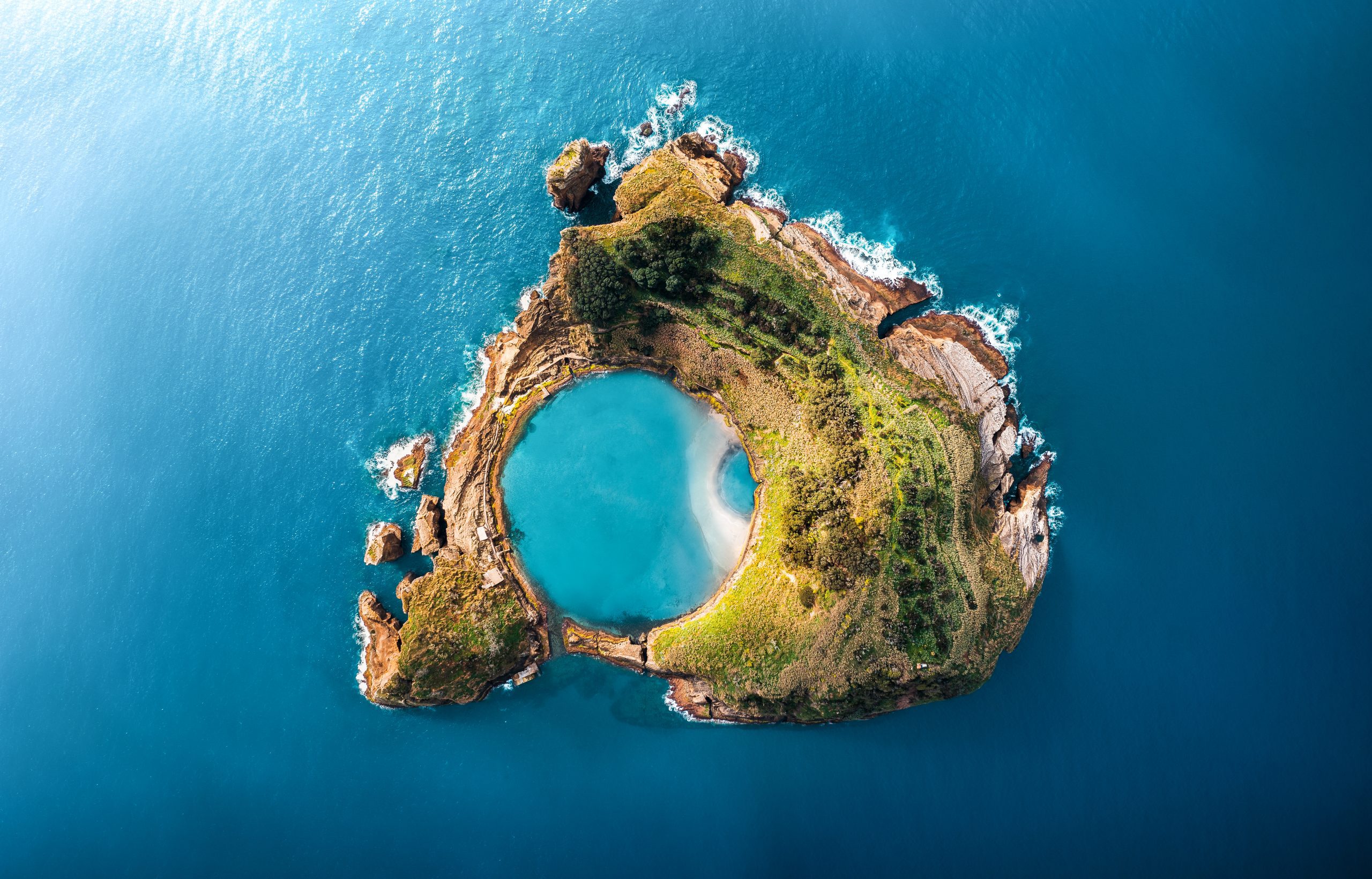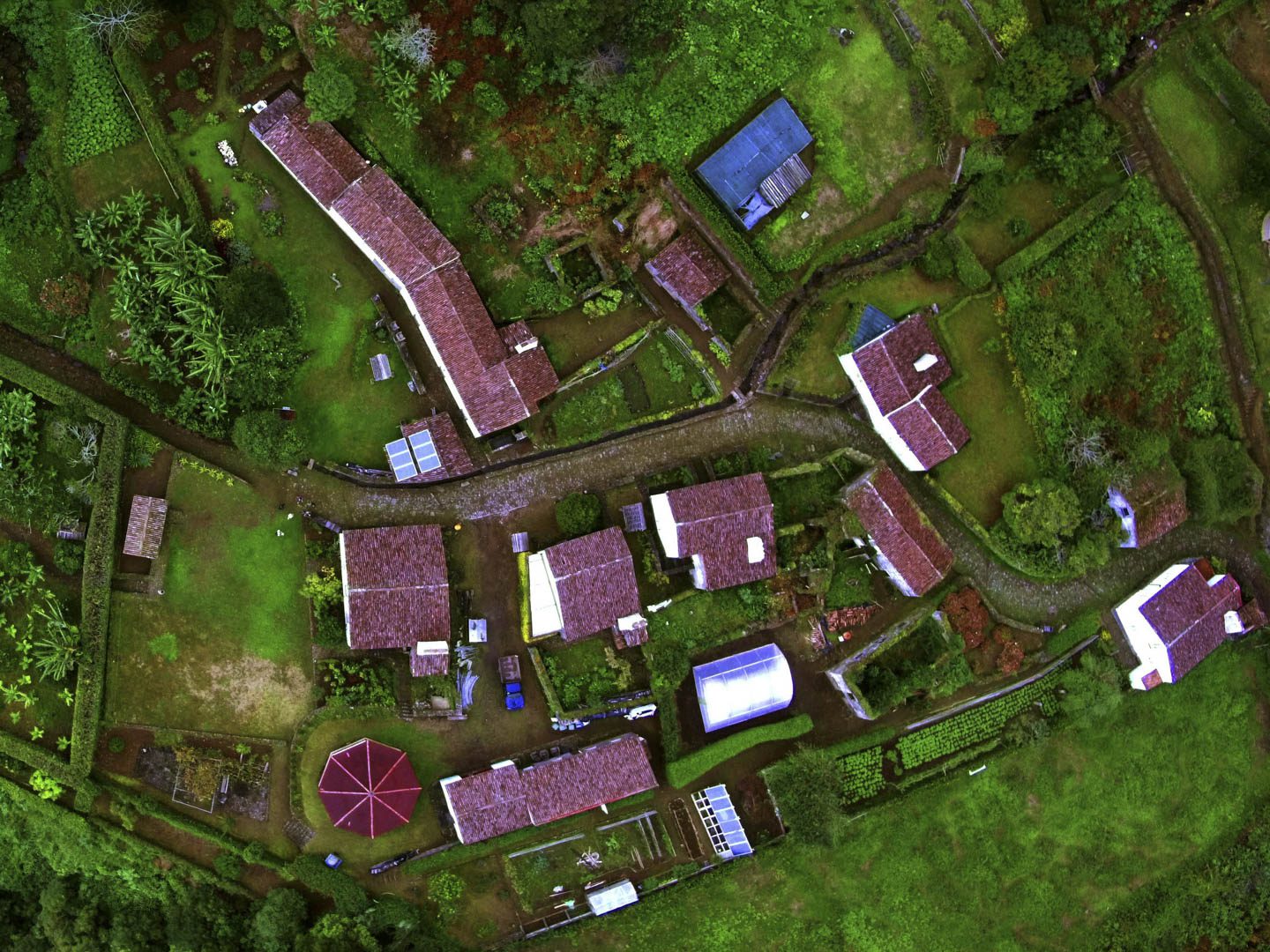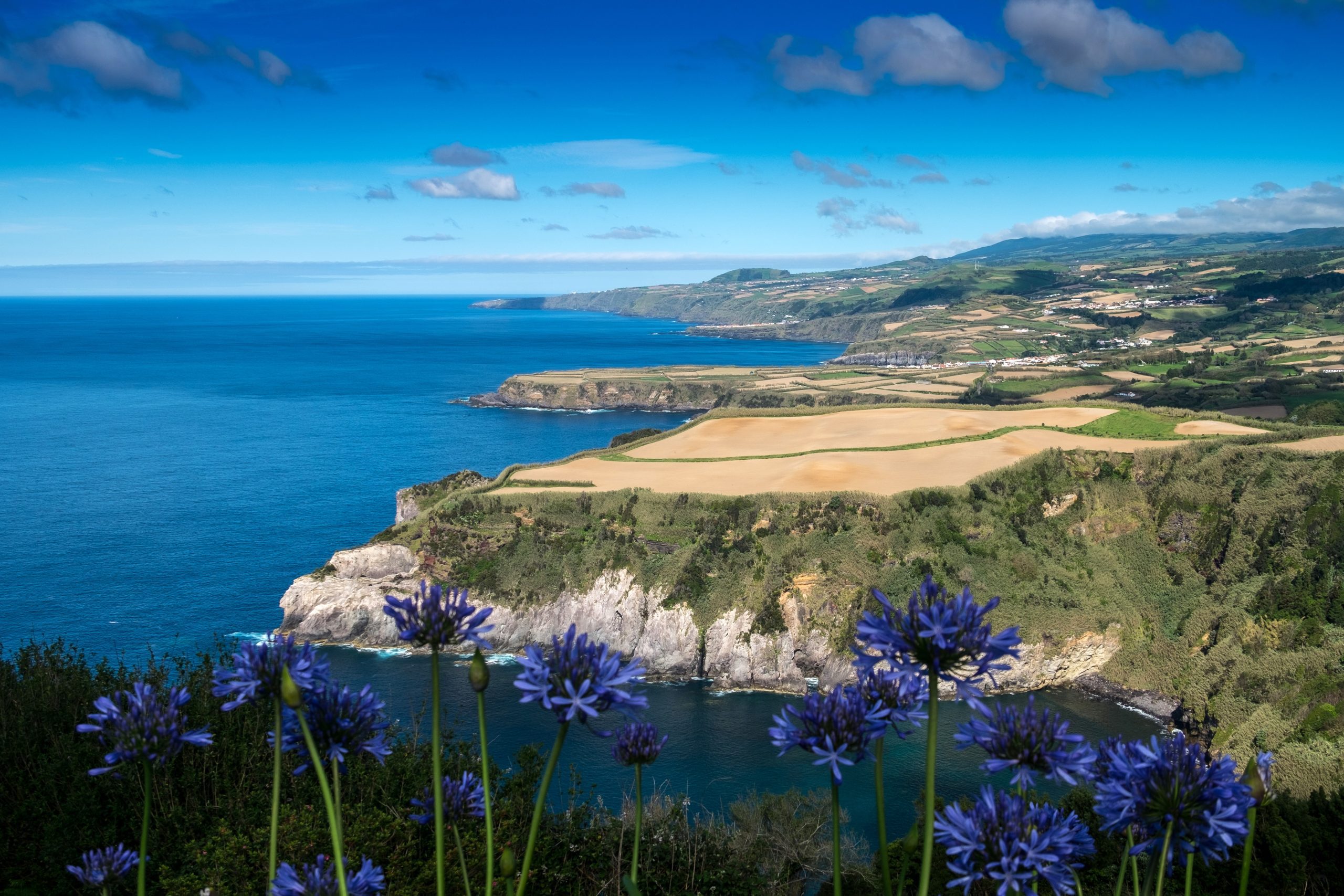On the south coast of São Miguel island, there is a beautiful town by the ocean: Água d’Alto. It means “water from above” because a beautiful waterfall, 30 meters high, is located close to the village of Ribeira do Degredo.
There are several picturesque villages on the coast, but this is a good stop to enjoy the beautiful sea views of São Miguel. This place is popular for its stunning black sand beaches, but there are many things to do! In this article, let’s hear more about this little piece of heaven in the middle of the Atlantic Ocean.
What is Água d’Alto?

Água d’Alto is a small coastal area on São Miguel island in the Azores. It is very rural, with agriculture being the main economic factor for this town, such as milk, corn, and more. With the recent increase in the tourism industry, more foreigners are also coming to enjoy its beautiful landscapes.
Locals and tourists recognize Água d’Alto for its coastal beauty and beaches. The Azores are not particularly famous for extensive sandy beaches, but Água d’Alto is one of the exceptions. It has one small and one large beach, each 600 meters in length, with a lonely hotel at its end.
Everything began in 1511 with the foundation of the village. It officially became a town in 1907.
In total, there are about 1,700 inhabitants in Água d’Alto. This is where the very first hydroelectric central of the Azores worked. It provided electricity for the first time in the archipelago in the year 1900 in Vila Franca do Campo. Nowadays, it is the Museum of Electricity.
Plan Your Visit to Água d’Alto

How to Get to Água d’Alto
Located in the county of Vila Franca, right on the south coast of São Miguel island, Água d’Alto is about 20 minutes from Ponta Delgada by car Eastwards or only 10 minutes from Vila Franca do Campo Westwards.
It is possible to go there by car or by taxi. Moreover, some regular public buses stop right by the beach. See Varela’s timetable for Ponta Delgada to Vila Franca do Campo and stop at Água d’Alto.
Best Time to Visit
Água d’Alto has some of the most popular beaches around São Miguel island. So, especially in the summer, many people come on sunny days. Locals and travelers enjoy this place very much because it offers a lot of space on the wide beach.
If you prefer a smaller group, we recommend visiting early in the morning or just before sunset. Furthermore, a lifeguard is present only during the high season (June to September). Otherwise, the beach doesn’t have a guard.
Check all our articles about the weather in the Azores throughout the year 🌤️ ☔️: January | February | March | April | May | June | July | August | September | October | November | December
Pro Tips

Don’t forget to visit Ribeira da Praia, a small part of Água d’Alto, a picturesque, tiny village by the river with narrow streets. This is also the departure point for the beautiful trail of Quatro Fábricas da Luz (the “Four Light Factories”). You will walk by the river, a waterfall, and a lush forest with ruins of old power plants.
After this trail, you can also continue straight to the next one called Praia. This will lead you directly to Lagoa do Fogo, right at the base of the lake. Although this might take some time, you might do it in the morning. It is also possible to go on a guided tour with us to discover this beautiful region of the green island.
Where to Eat
If you need somewhere to eat near Vila Franca do Campo, click here. In this link, you’ll find the 10 best restaurants on TripAdvisor.
Where to Stay
To make your life easier, we’ve filtered the search by:
Nearby Attractions
Vila Franca do Campo Islet

The Vila Franca do Campo Islet is probably the best beach on São Miguel Island. It is an old submarine volcano with crystal-clear waters in its crater, where you can swim and snorkel. This wonder of nature is open only from June to October for preservation purposes.
If you visit the island outside the high season, you can still visit Vinha da Areia beach in Vila Franca do Campo. The black-sand beach is ideal for relaxing when the sun is shining.
Vila Franca do Campo

Vila Franca do Campo is a county and municipality south of São Miguel. The city was built in the 15th century, shortly after the island’s discovery. The colonial officials in charge lived there, and sugar cane was the primary source of wealth.
In 1582, Vila Franca witnessed one of the most significant naval battles in the Azores between the Portuguese and Spanish. Portugal lost its independence for 60 years, during which time the defeated Portuguese were executed in Vila Franca.
In 1900, Vila Franca was the first place in Portugal to have public illumination by electric energy.
Check all our articles about each one of the most relevant points of interest in Vila Franca do Campo: Vila Franca do Campo | Ermida de Nossa Senhora da Paz | Ilhéu de Vila Franca | Praia da Amora | Praia da Vinha da Areia | Praia de Água D’Alto | Lagoa do Congro | Lagoa dos Nenúfares | Miradouro do Castelo Branco
Caloura Natural Pools

The Caloura Natural Pools are one of São Miguel’s most emblematic bathing areas. Visitors greatly appreciate them, and they are also one of the main tourist attractions in Lagoa. These natural pools are located in Caloura’s unique fishing harbor, one of the oldest on the island and the area’s biggest attraction.
Today, this quiet bay has good bathing facilities, including access for people with reduced mobility, free car parks, toilets, showers, and a snack bar/restaurant — considered by many as the best fish restaurant in the region.
With an average water temperature of around 22 °C in summer, these natural pools are monitored and safe, and are recognized annually with the Blue Flag — you can swim in peace. It should be noted that this is where the Fisherman’s Festival is held, which attracts thousands of tourists to Caloura. Musical concerts and various nautical activities essentially characterize it.
Quick Info
The Caloura Natural Pools are known by divers and snorkelers for their crystal-clear waters with colorful fish. There is also a small children’s pool here.
Lagoa do Fogo

Lagoa do Fogo is the crater of a dormant volcano that formed about 15,000 years ago. It offers exceptional natural beauty and breathtaking landscapes.
This awe-inspiring turquoise lake is a pure testimony of nature’s pace. Many stories can be told, and yours might just start here. This least humanized and preserved area even had its pumice beach on the lagoon margins, and it was awarded the best wild beach in Portugal in the 7 Wonders – Beaches of Portugal Contest.
From the central part of São Miguel island was born the Serra da Água de Pau Volcanic Massif, where Lagoa do Fogo is nested. It is of great value in landscapes and untouched, pure nature.
Located between Ribeira Grande and the city of Lagoa, this volcanic lake looks like a postcard from paradise. The green of the volcanic walls, filled with lush vegetation, contrasts with the clear blue water, undoubtedly making it one of the most beautiful places in the Azores.
This is one of the main tourist highlights of São Miguel, but this post will reveal some secrets inside. Follow this complete guide to learn all you need to know about Lagoa do Fogo.
Check all our articles about each one of the most relevant points of interest in Lagoa do Fogo: Caldeira Velha | Lagoa do Fogo | Pico da Barrosa | Janela do Inferno
Complementary Information
Best Season to Visit the Azores
The Azores Archipelago boasts a unique climate that shapes its lush landscapes, making it a splendid year-round destination. With mild temperatures and minimal fluctuations, each season offers something unique. Spring averages 16 °C, summer reaches 21 °C, autumn cools to 18 °C, and winter remains mild at 14 °C.
→ For a detailed breakdown of the weather by month, check the following links 🌤️☔️: January | February | March | April | May | June | July | August | September | October | November | December
How to Get to the Azores
The Azorean Archipelago is easily accessible through numerous flight routes. Lisbon and Porto are the main entry points to the continent, with direct flights available to São Miguel (PDL), Terceira (TER), Faial (HOR), Pico (PIX), and Santa Maria (SMA). To find the best flight, use search engines like eDreams or Skyscanner. These platforms let you compare prices and schedules from multiple airlines in one convenient location.
For more details on how to get to the Azores, take a look at our complete guide. But what if you want to explore beyond your arrival island? We’ve got you covered!
- Azores airports 🛬
- Flights between islands ✈️
- Ferries between islands ⛴️
- Which island to choose? 🏝️
- What airlines fly to the Azores? 🛩️
→ Once you’ve found the perfect route, book your tickets and get ready to experience one of the world’s most stunning island groups!
Travel Essentials
Essential Information for your Azores trip: Azorean Language & Phrases 🗣️ | Currency & Banks 💵 | Credit Cards & Traveler’s Cheques 🏧 | Driving in the Azores 🚗 | Electricity 🔌 | Experiences & Tours 🗺️ | Health & Safety 🩺 | Internet & Wi-Fi Access 🛜 | Phones & Mobile Service 📞 | Post Offices & Buying Stamps ✉️ | Public Holidays 🏖️ | Shopping 🛒 | Time & Daylight 🕒 | Whale Watching Guide 🐳 | Best Island to Visit 🏞️
Useful Tools & Apps
The weather in the Azores can be variable, so it’s helpful to use some apps before visiting the islands. Spotazores provides live camera feeds from the main tourist attractions, allowing you to check the weather and plan your visit. For accurate weather predictions, use Windy or Windguru — they provide the most reliable predictions.
Video
Conclusion
If you appreciate natural beauty, outdoor activities, and relaxation, Água d’Alto in São Miguel could be worth a visit. So if you are coming to our beautiful island, don’t forget to pass by this small coastal town.
May it be for a relaxing time at the beach, a drink at the beach bar with a view of the Atlantic, or an adventurous hike in the forest. At Água d’Alto, you will find just what you need for great holidays in the Azores.
Authors’ Note
I am pleased to inform you that all the recommendations in this article are based on my personal experience and observations. As the author, I have personally visited each attraction mentioned, ensuring that every suggestion is grounded in first-hand knowledge and genuine enthusiasm.
FAQs
Praia de Água d’Alto is located in Vila Franca do Campo on São Miguel Island, Azores. The 600-meter-long beach is known for its accessibility, attracting locals and visitors looking for a peaceful retreat.
Praia de Água d’Alto offers showers, changing rooms, a refreshment bar, and limited parking. It also provides accessibility for disabled visitors, making it a convenient destination.
The crystal-clear waters of Praia de Água d’Alto are ideal for swimming when the sea is calm. However, the beach can have steep drop-offs and large waves on windy days, and swimming might be restricted due to jellyfish.
Praia de Água d’Alto is known for its tranquil atmosphere, fine sand, and stunning natural beauty. The beach is less crowded than other spots, offering a peaceful, relaxing place amidst picturesque cliffs and clear waters.

